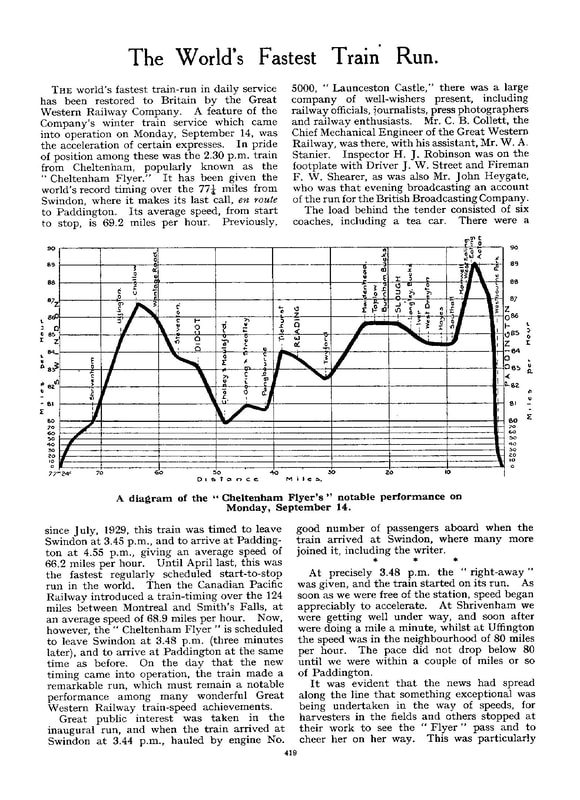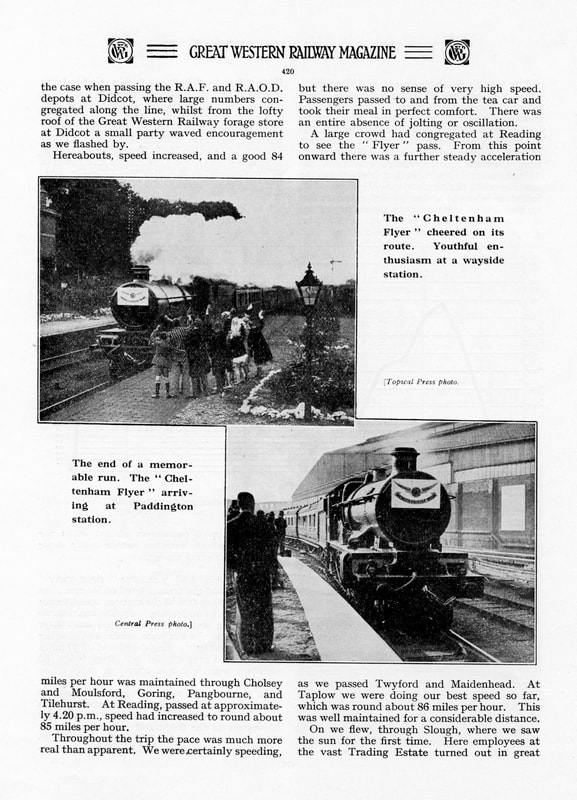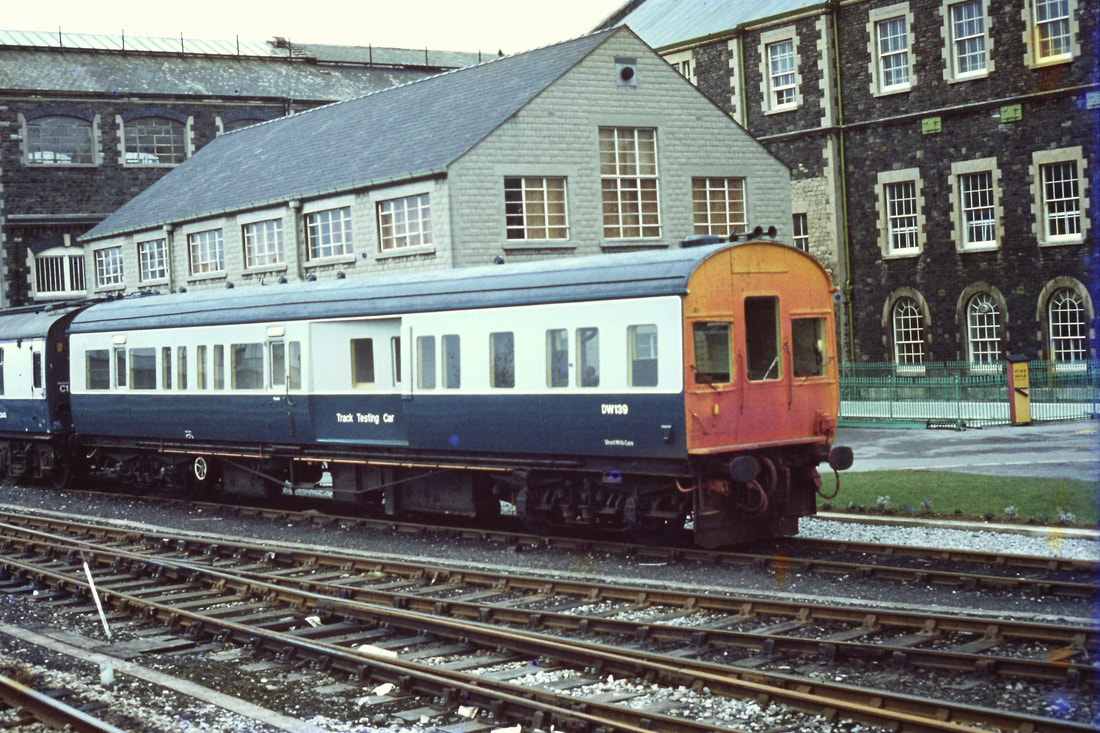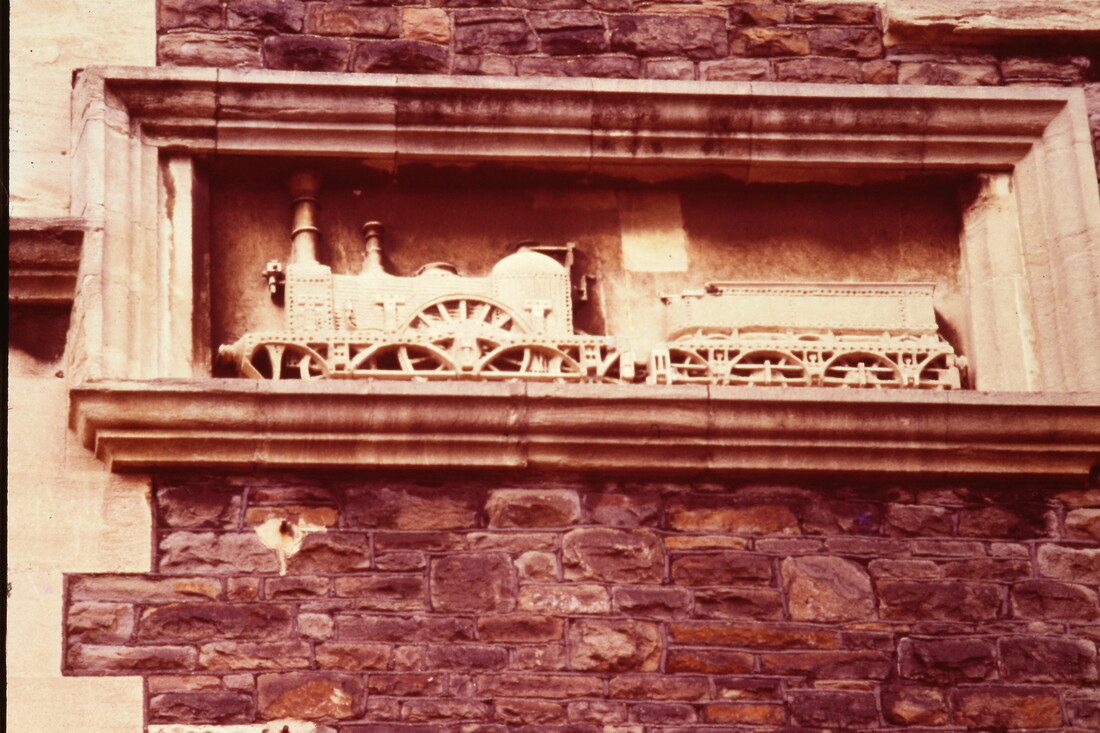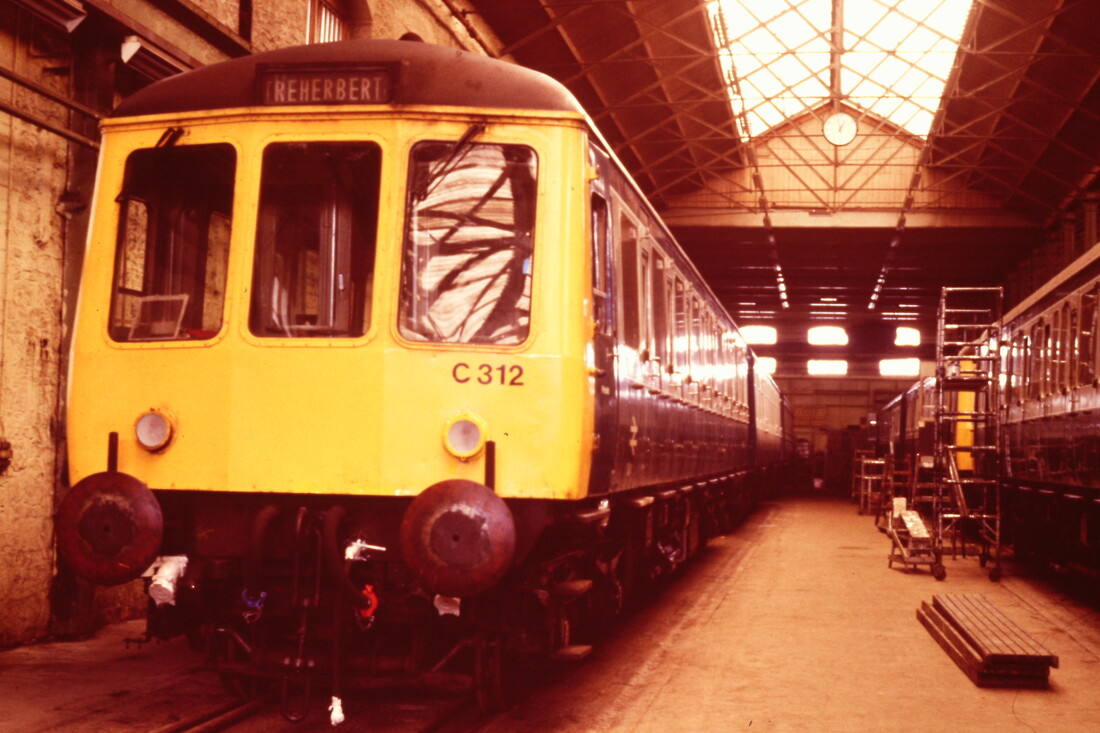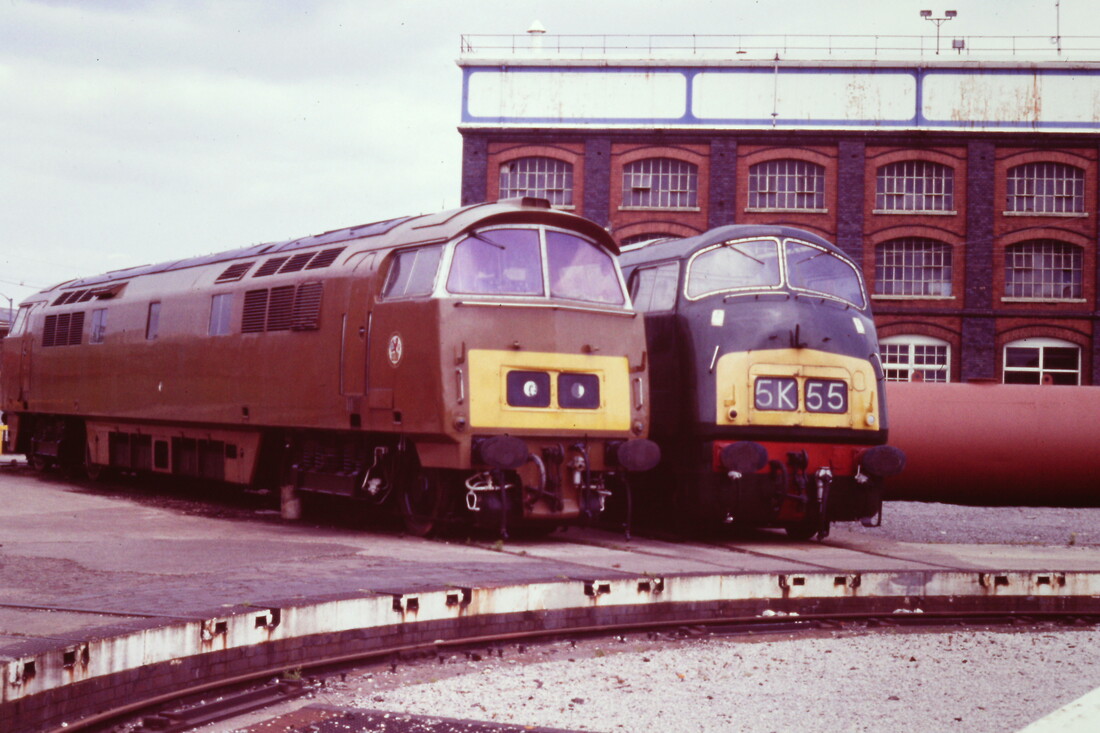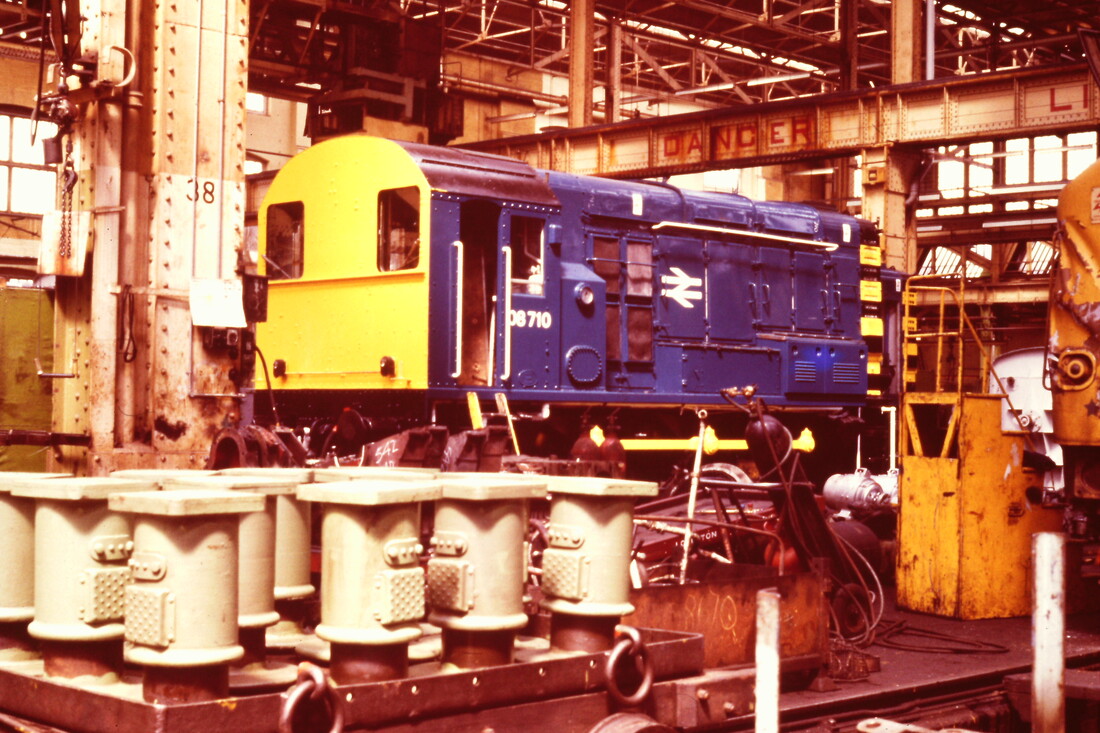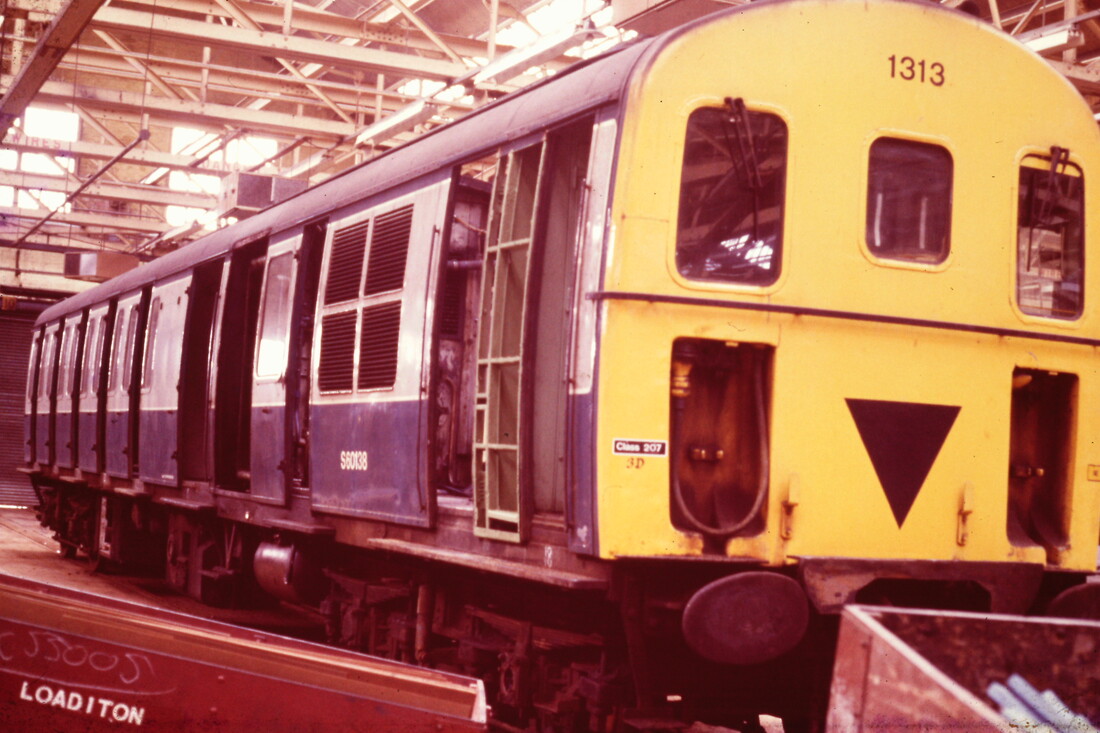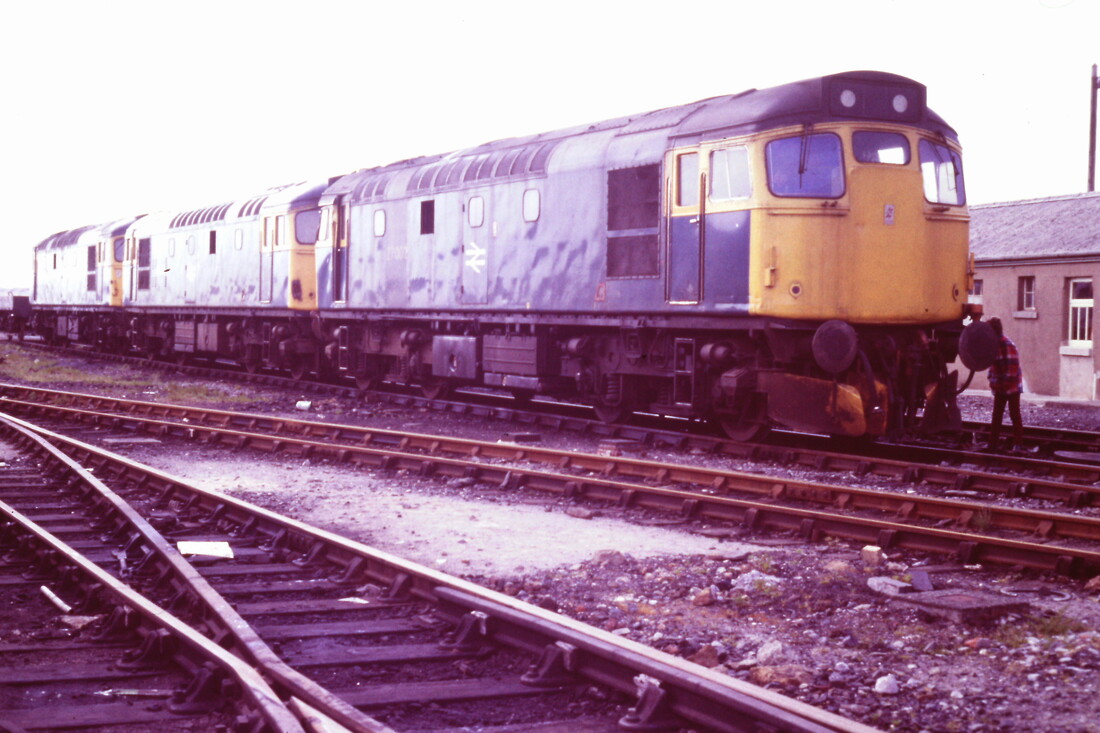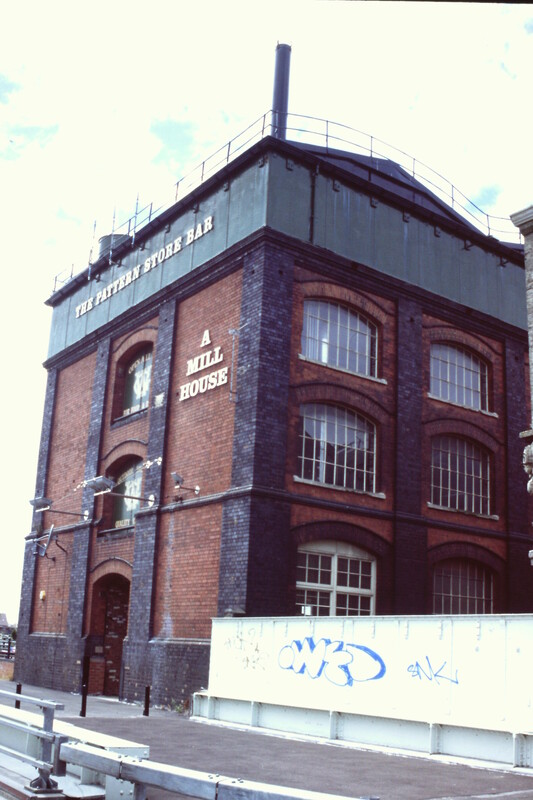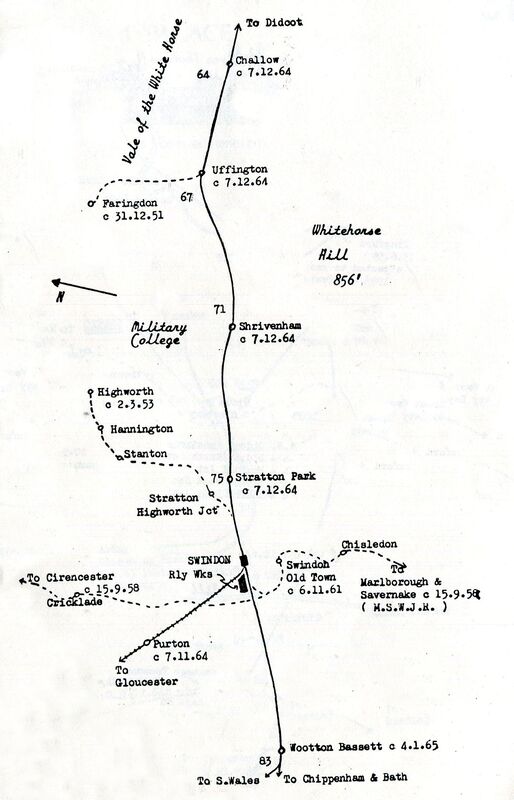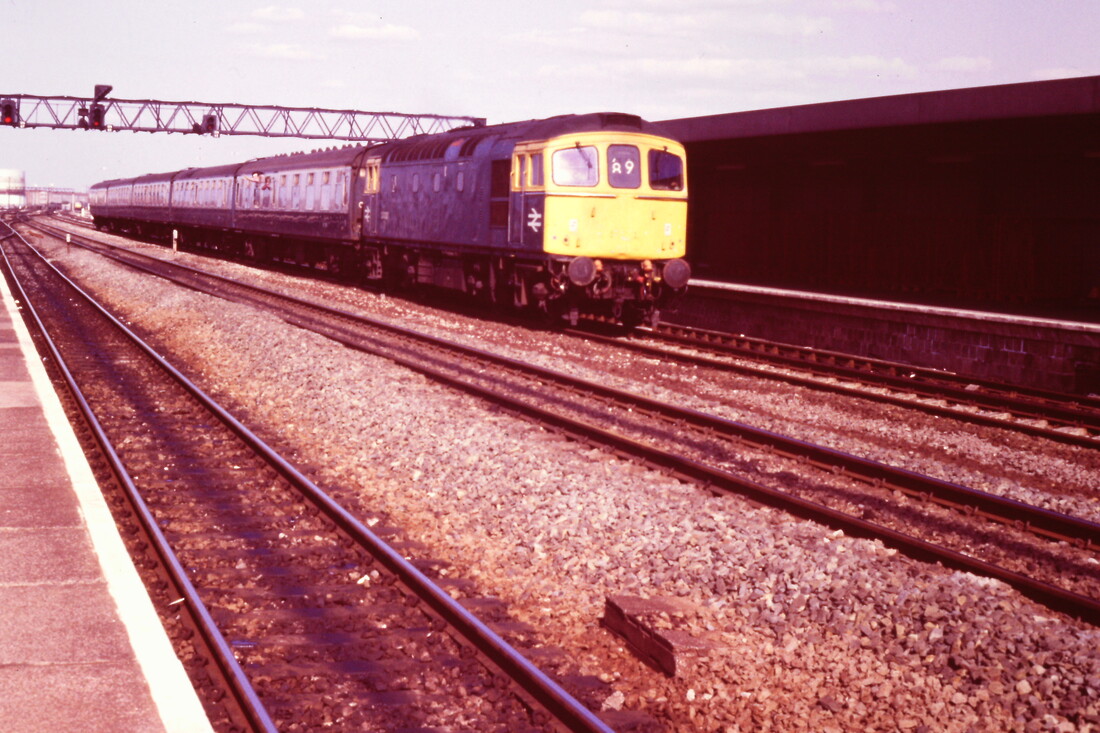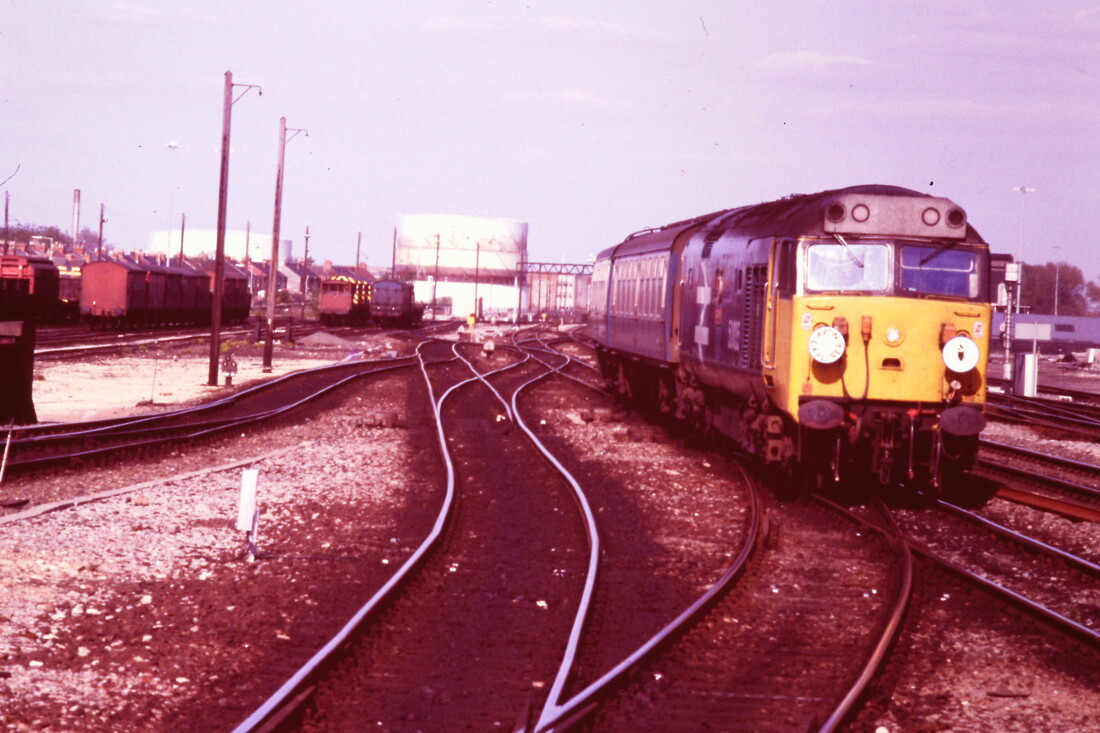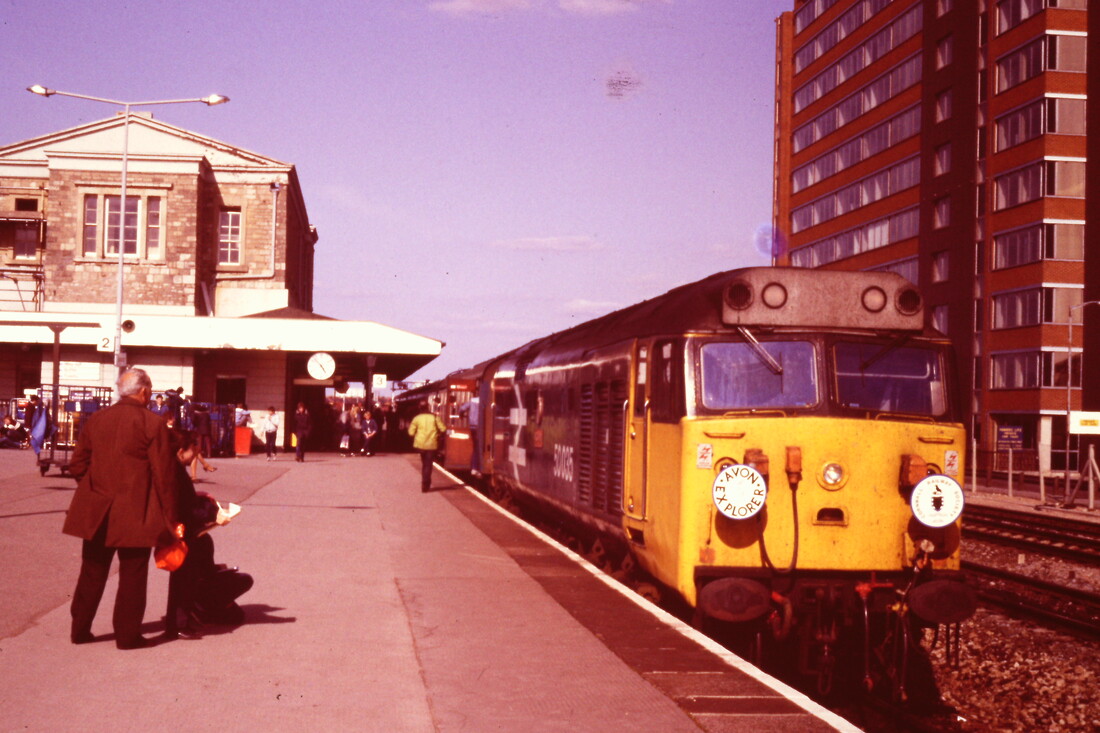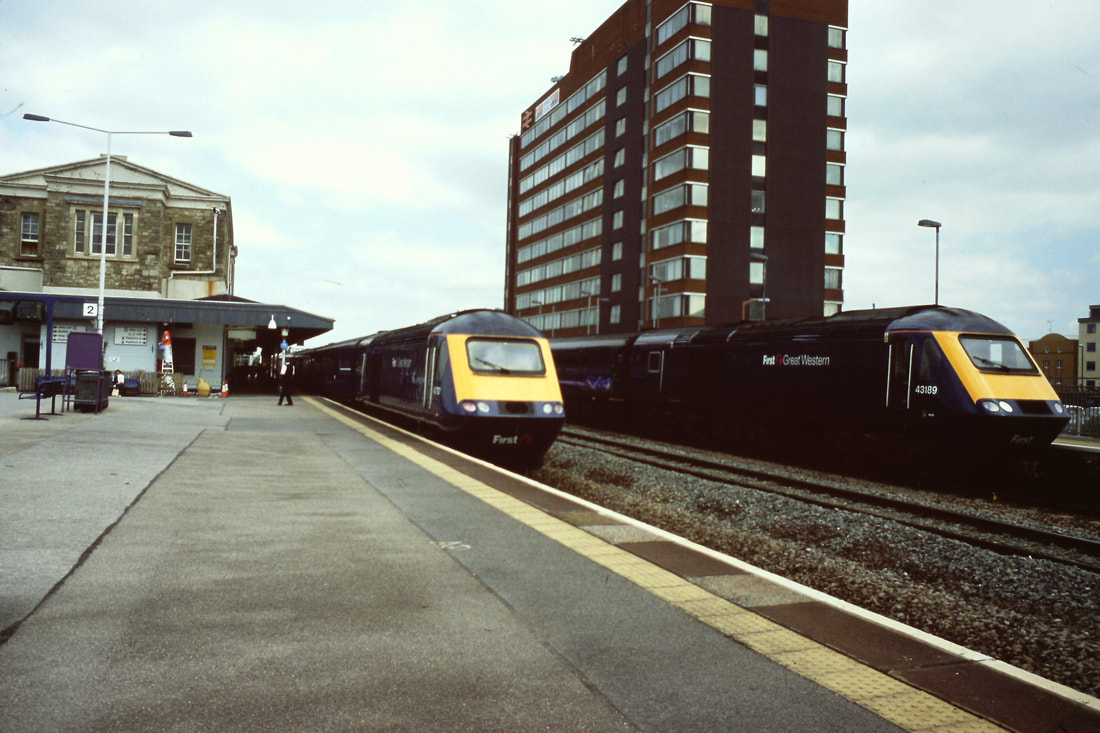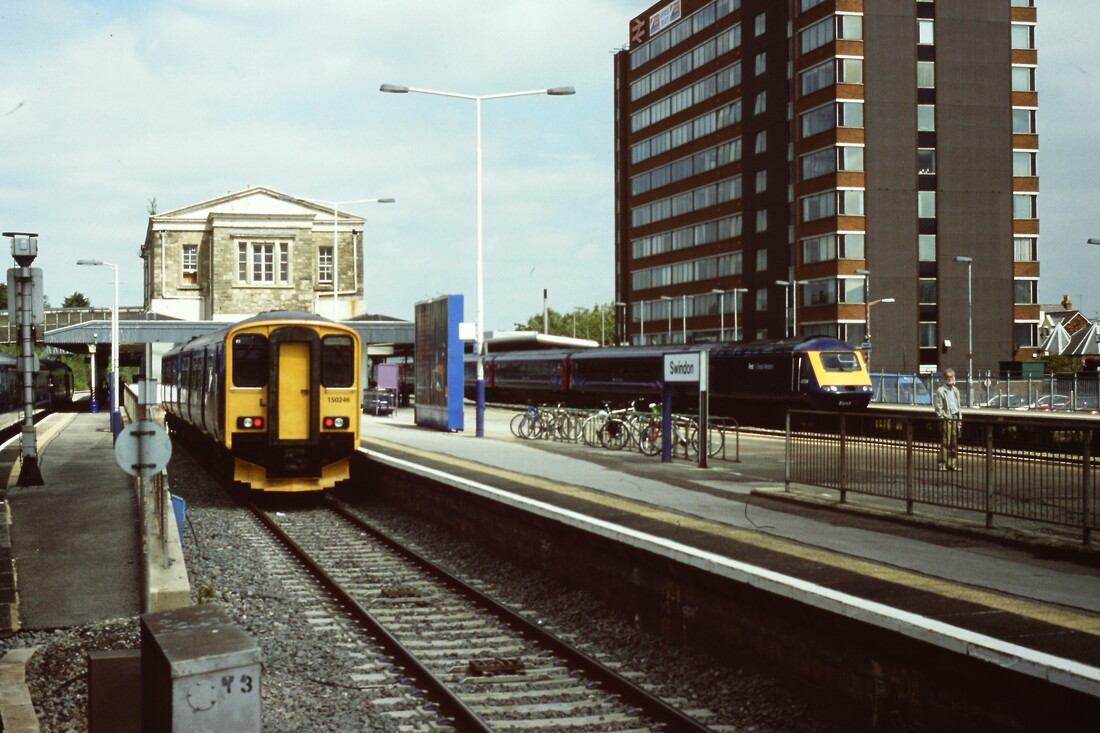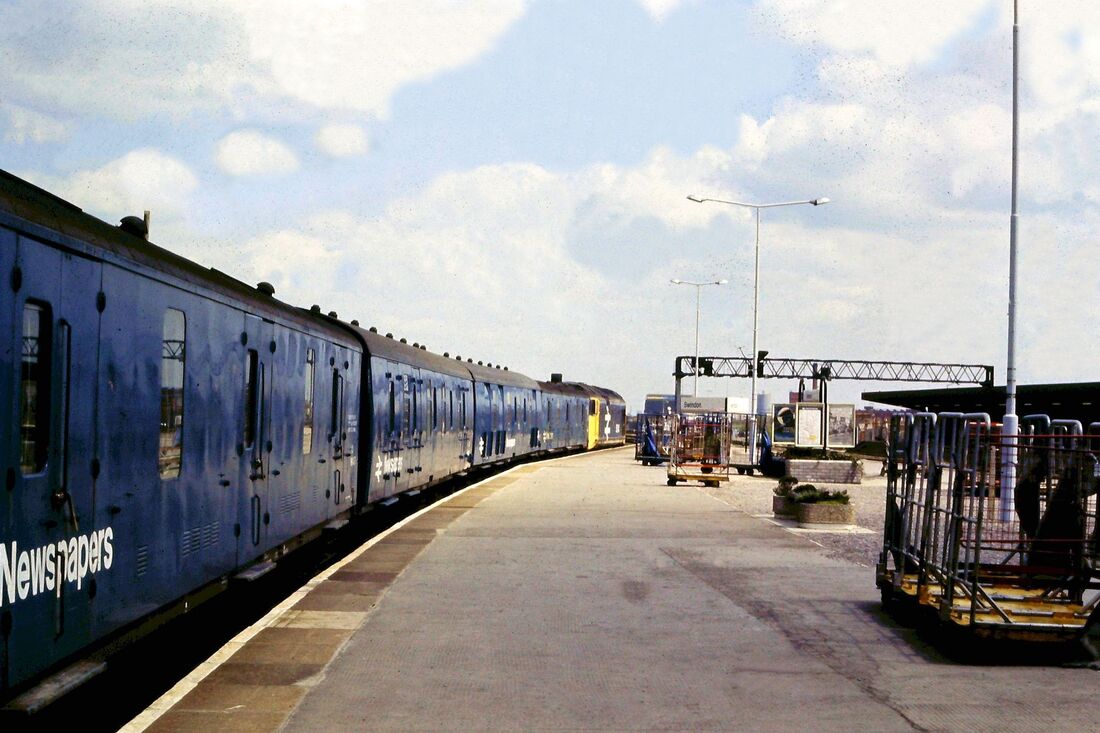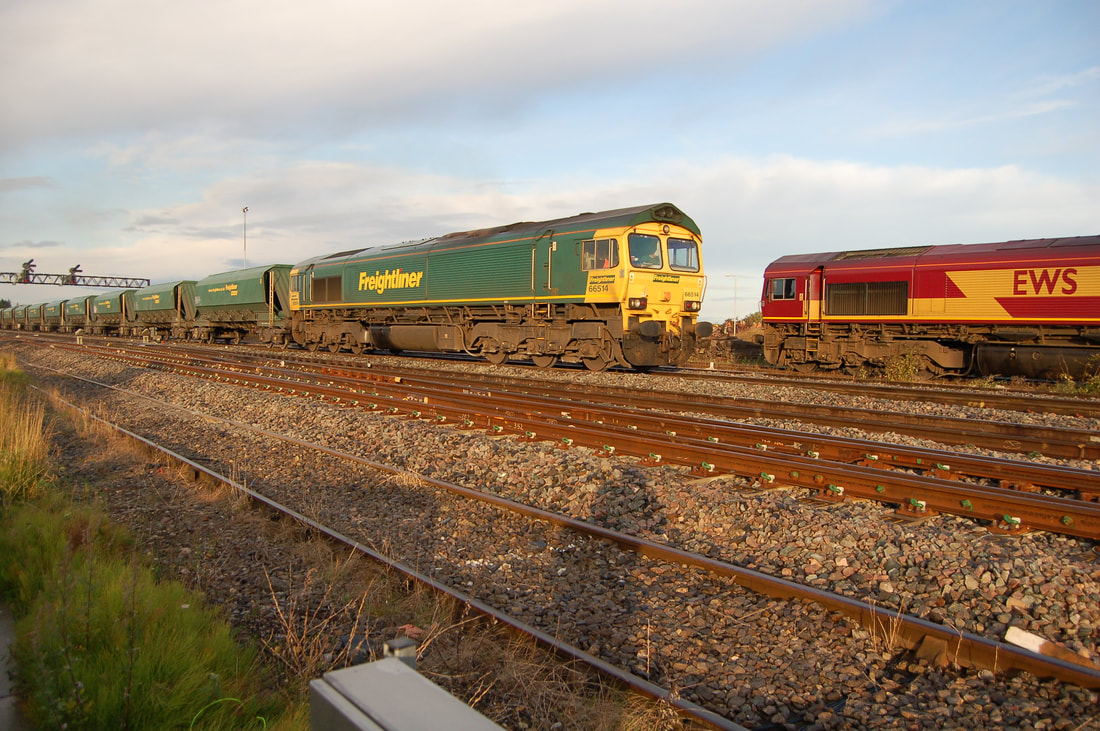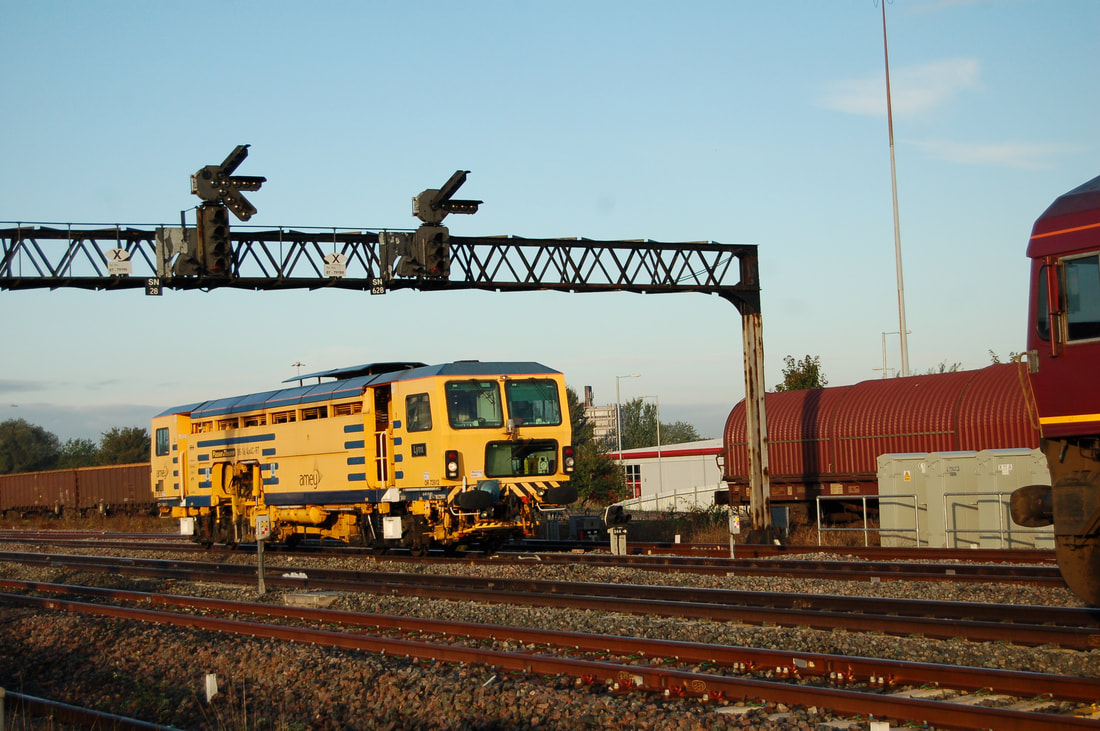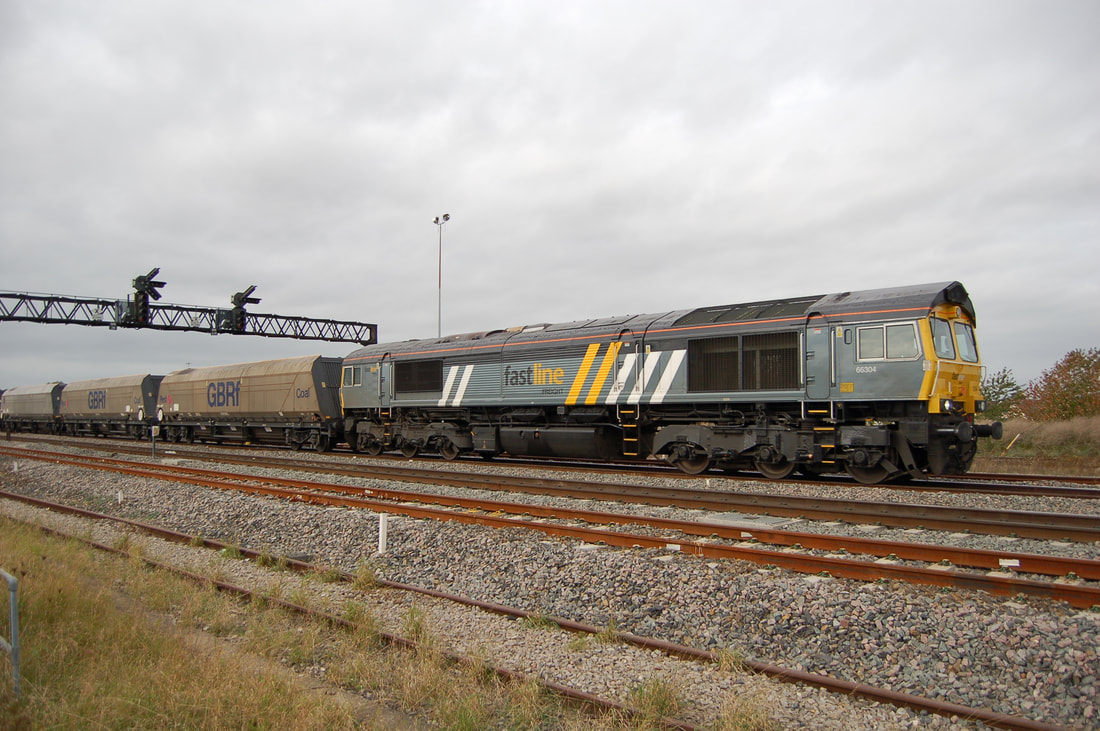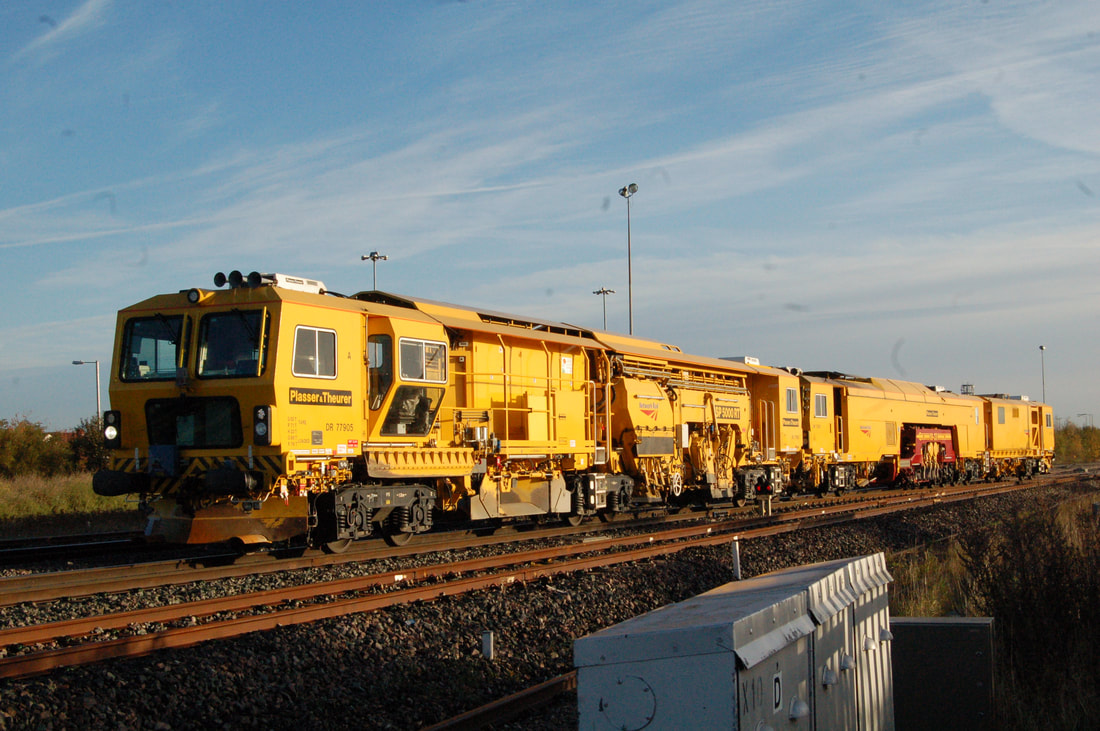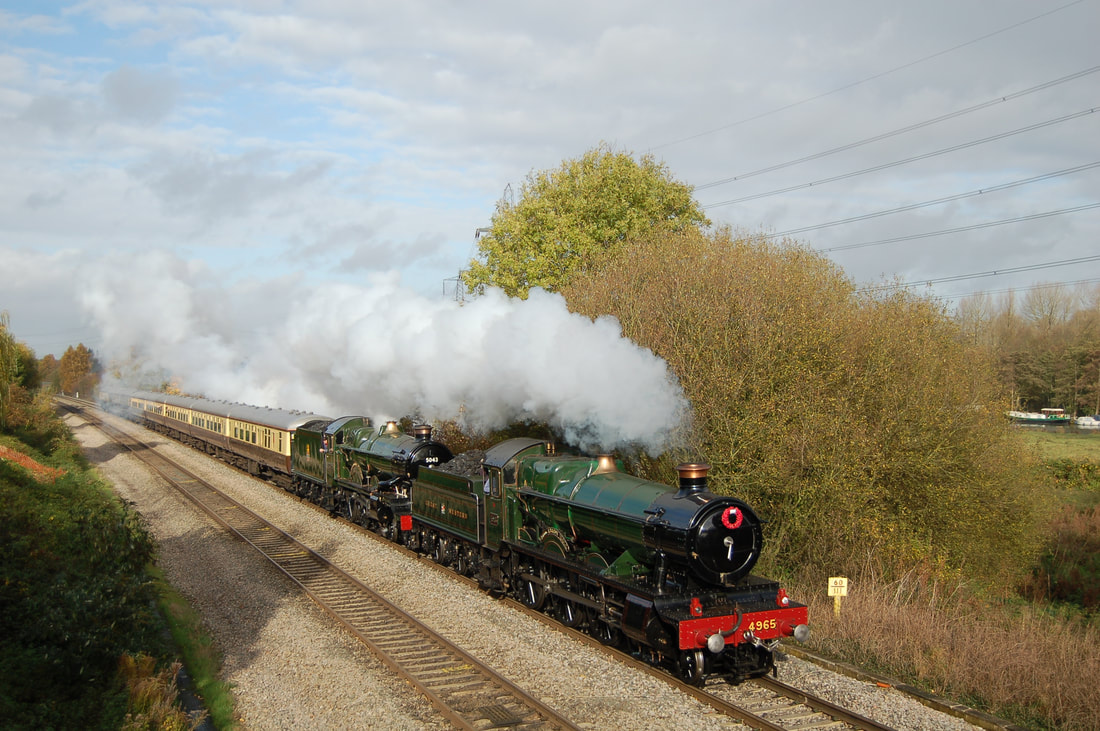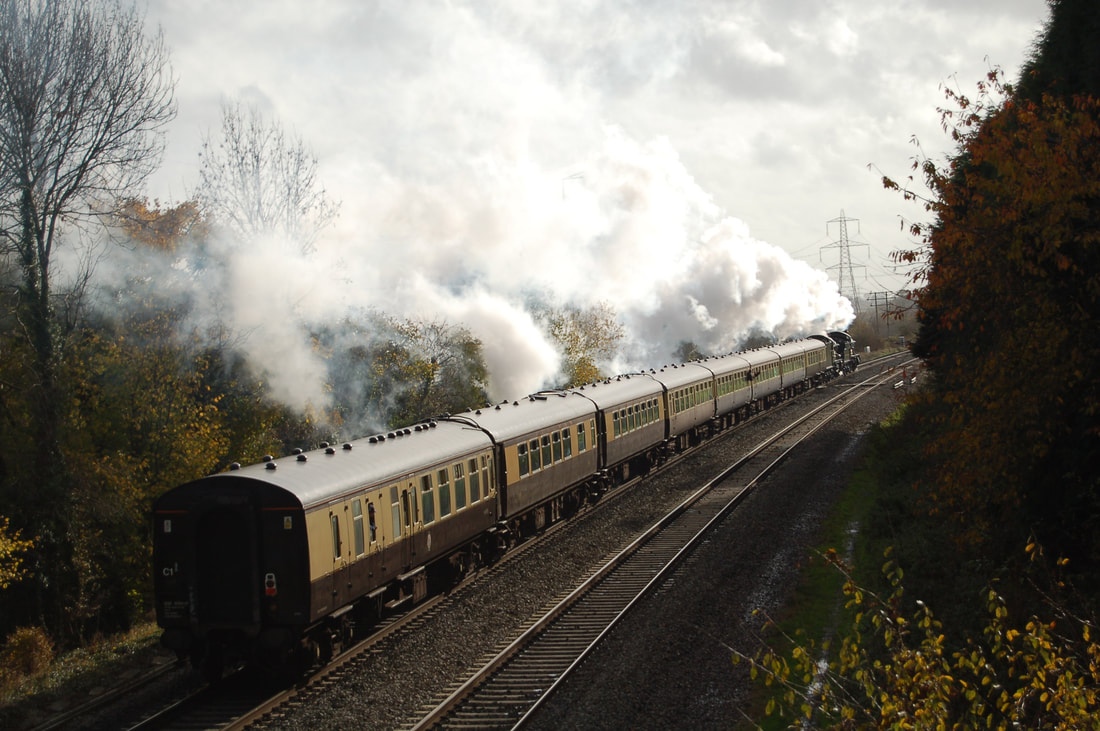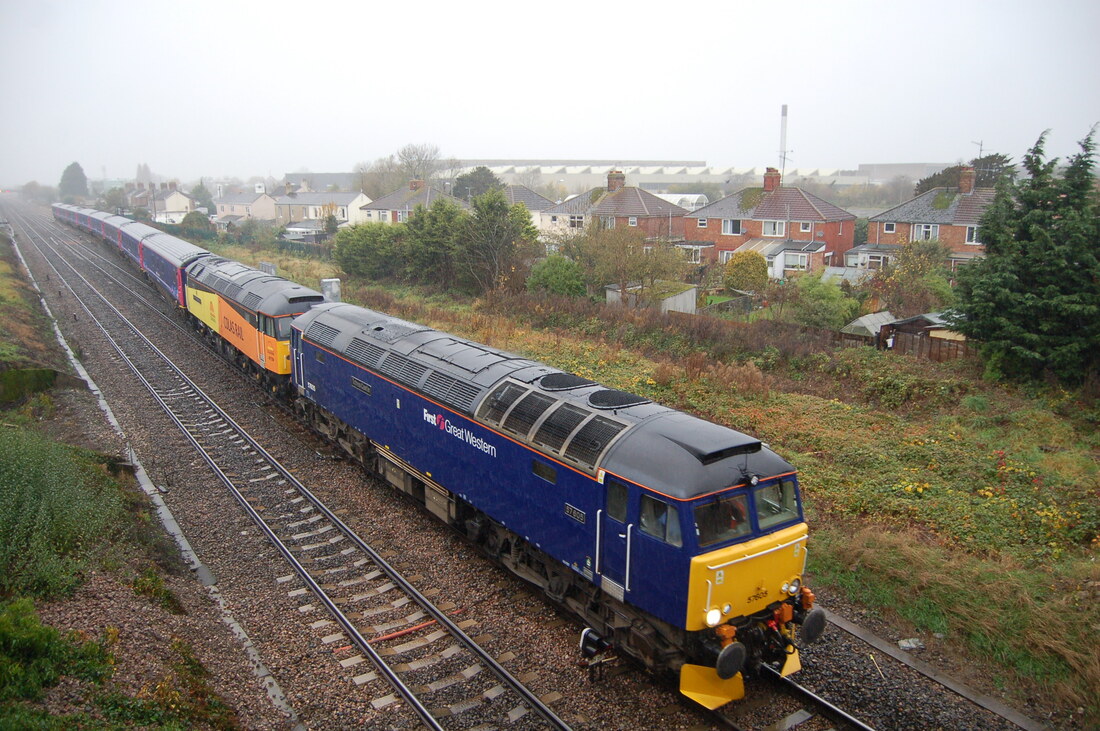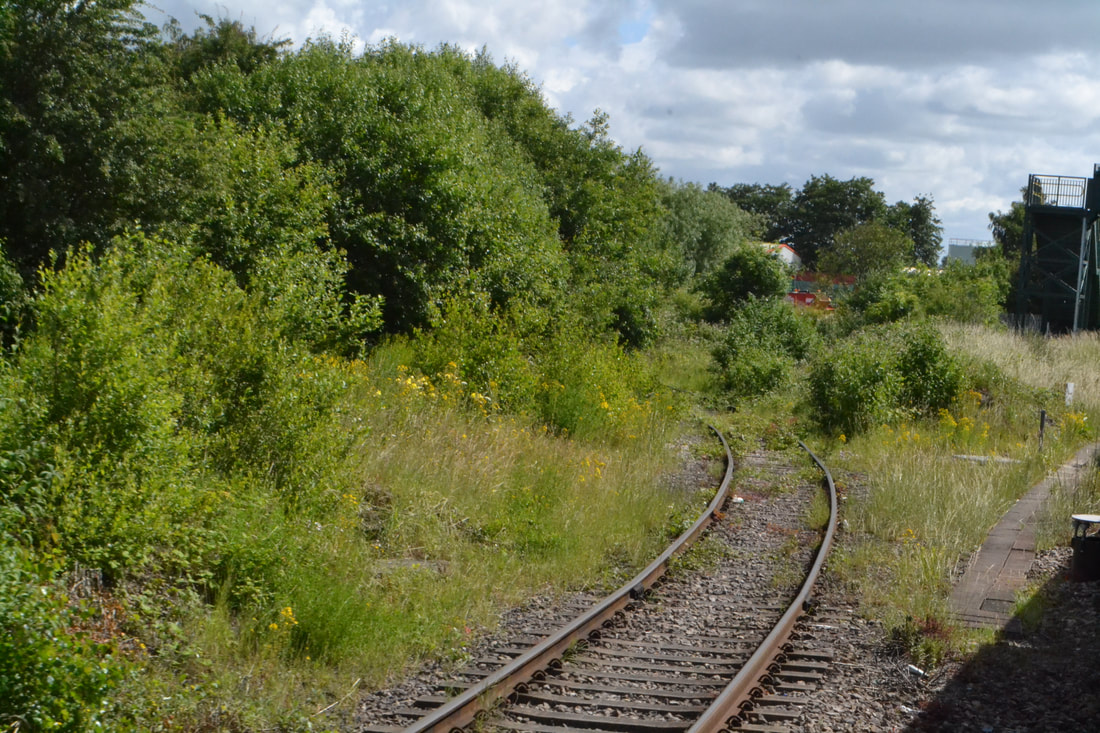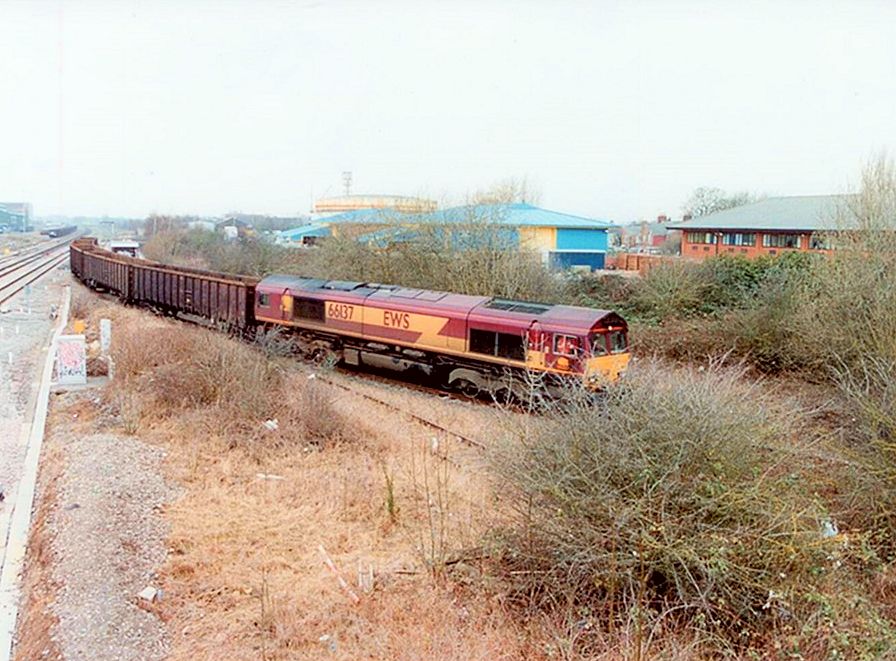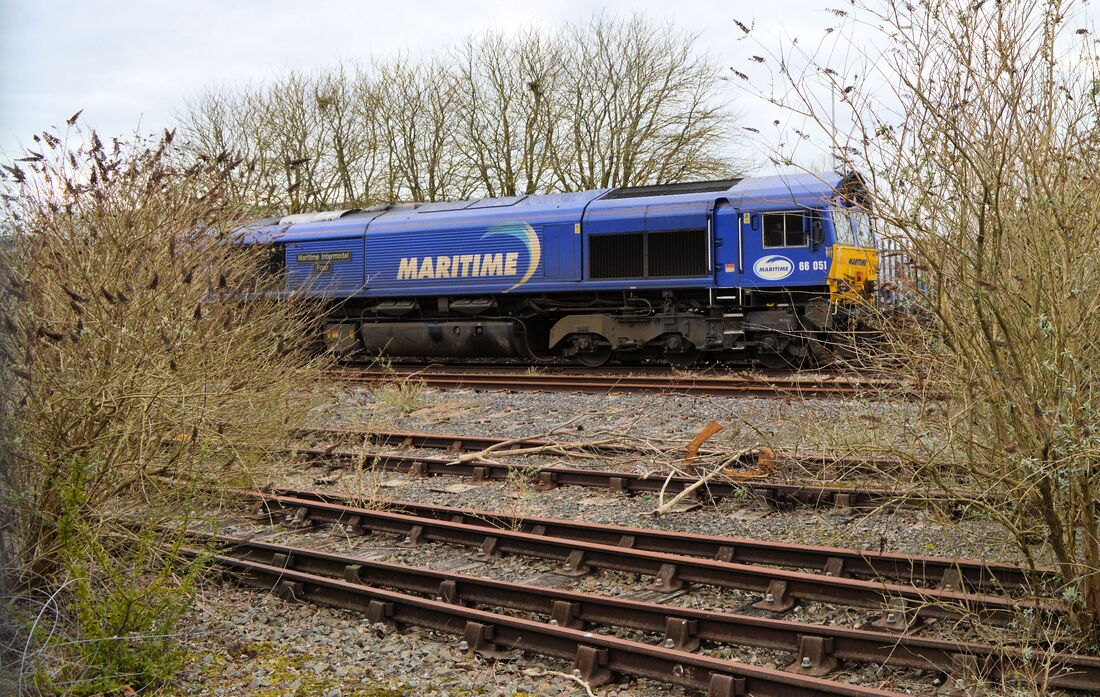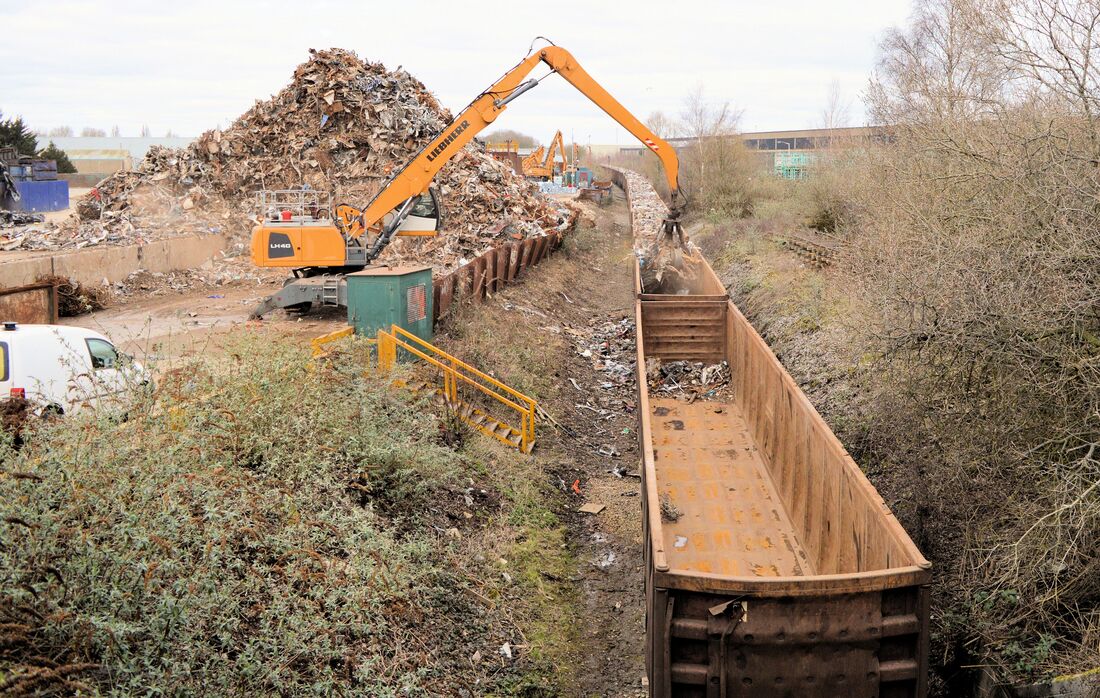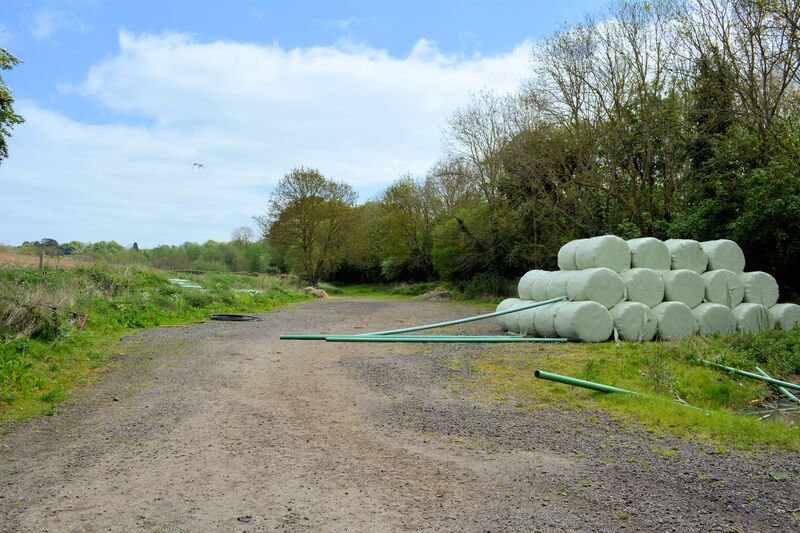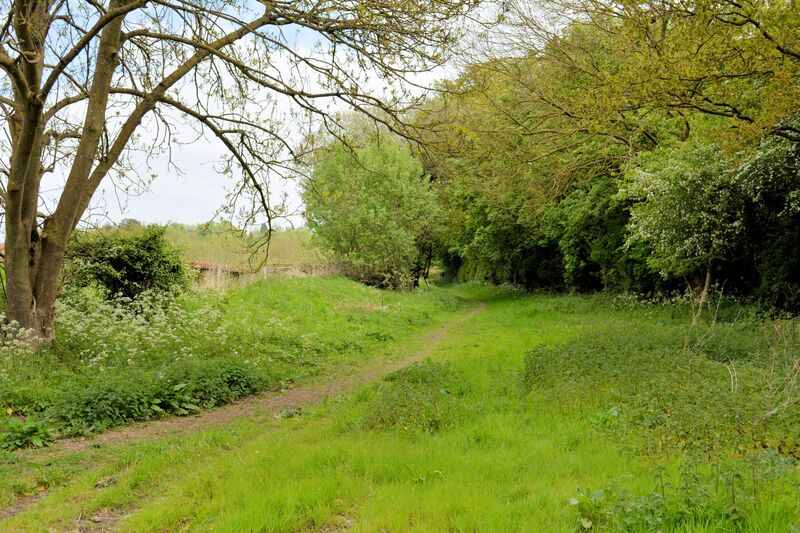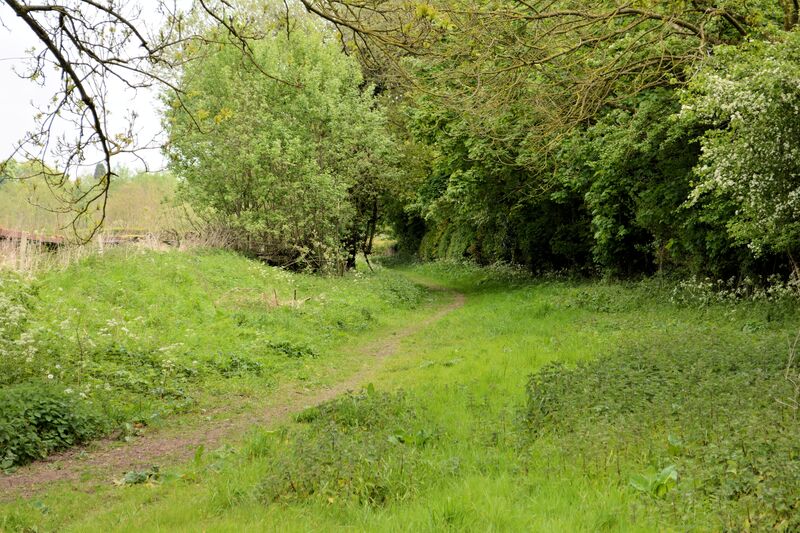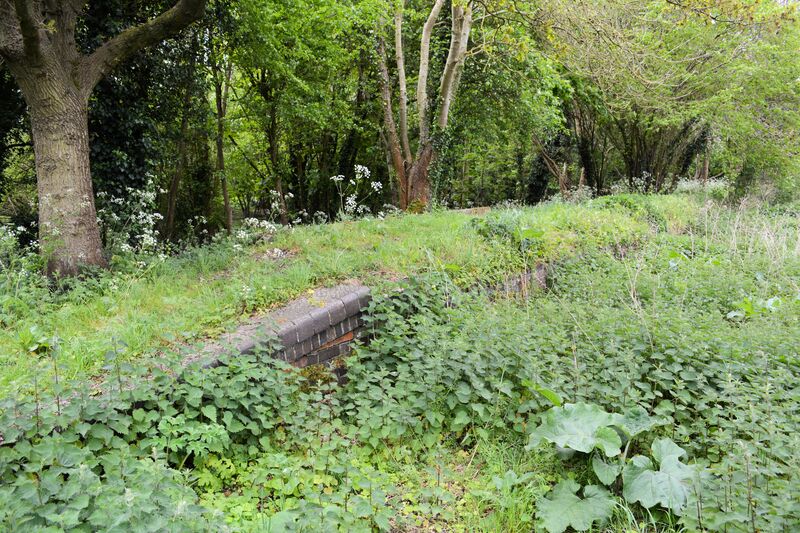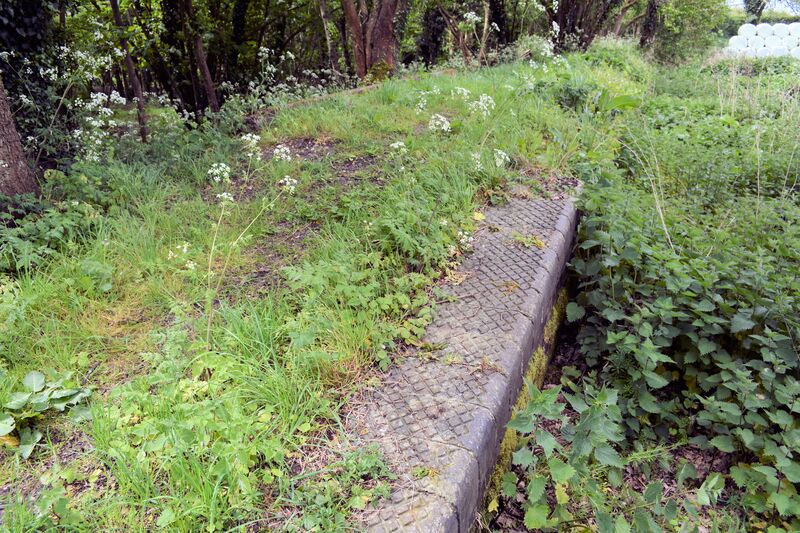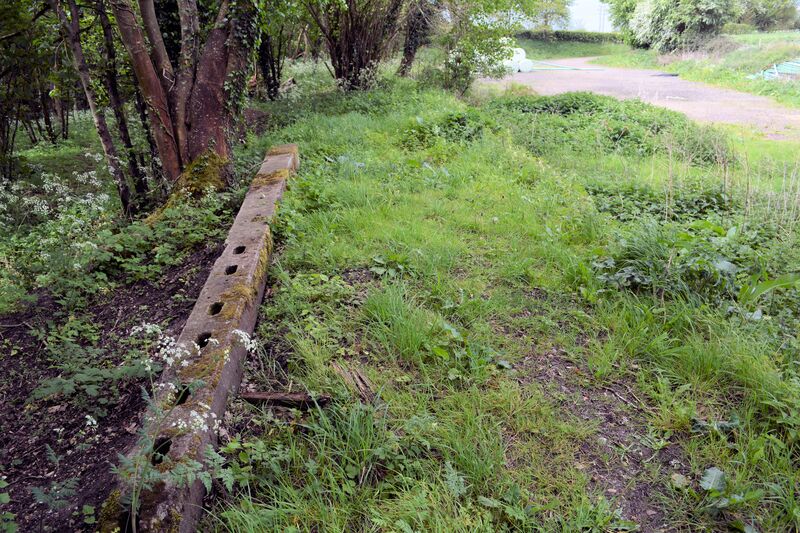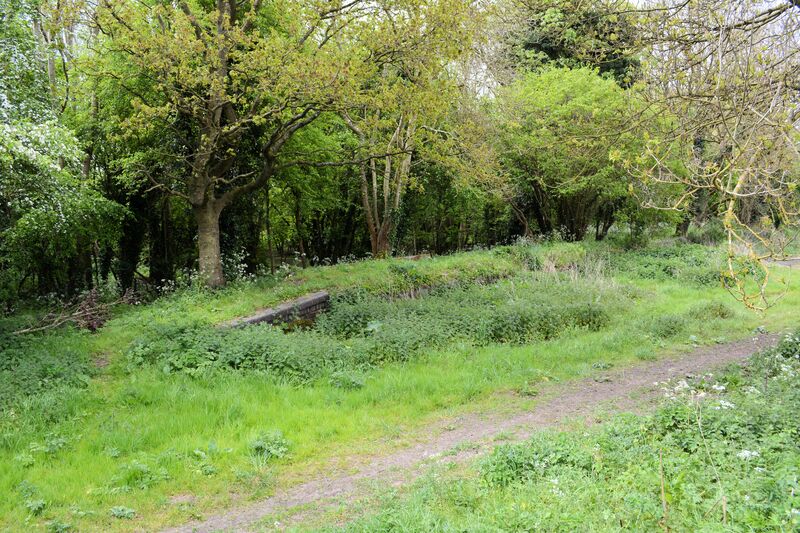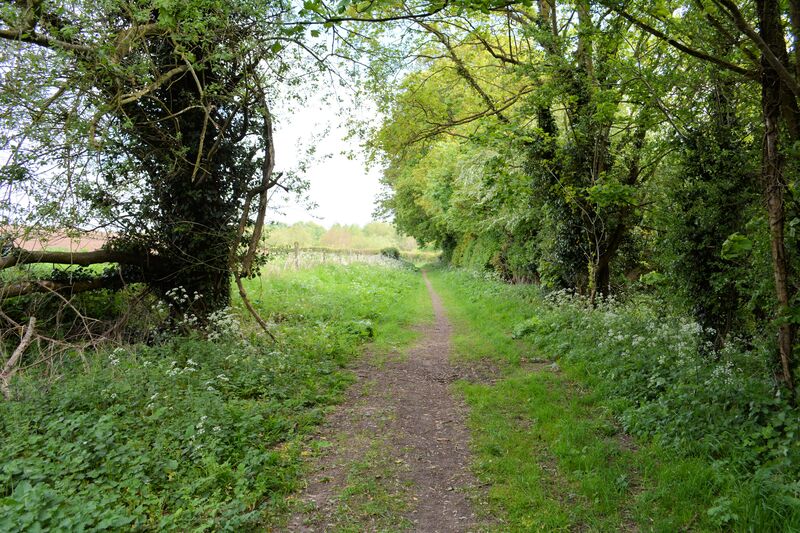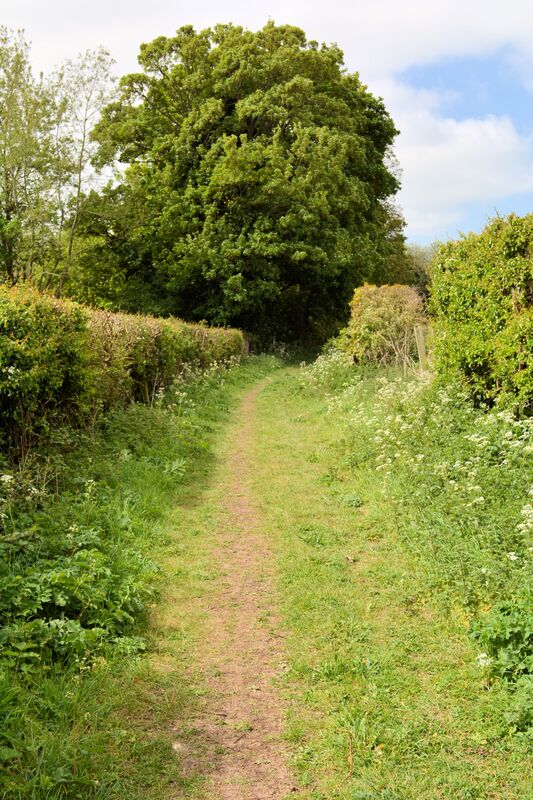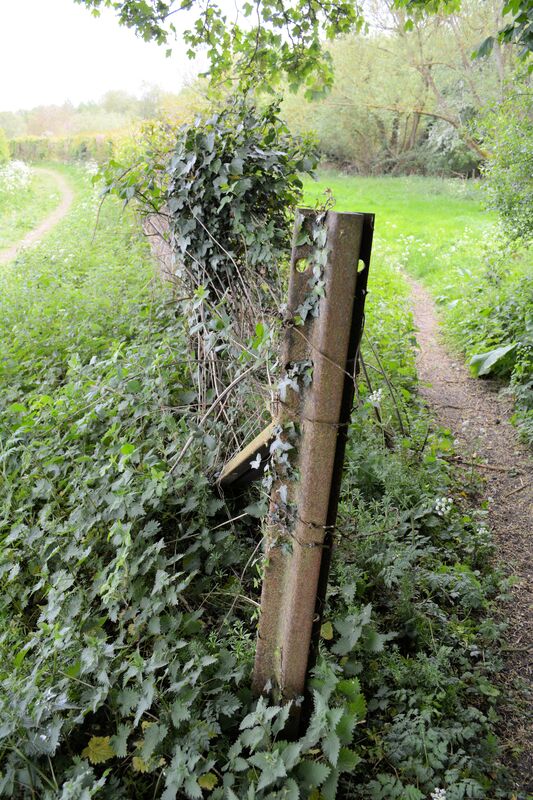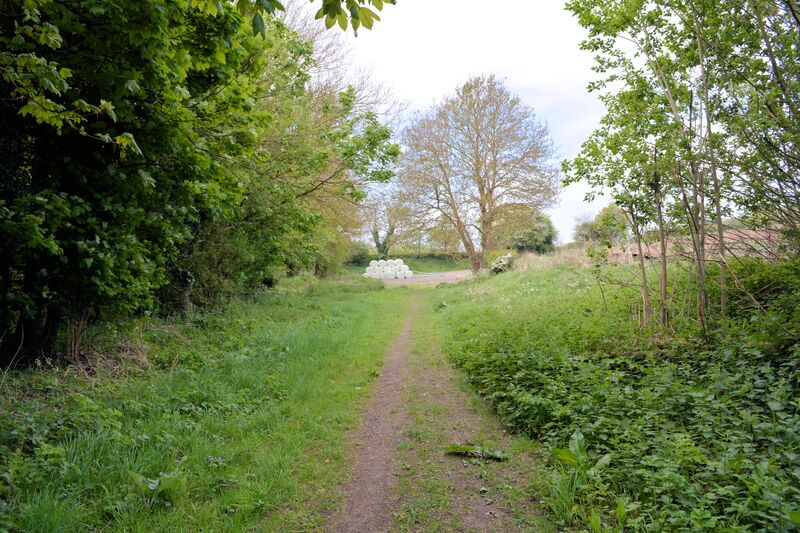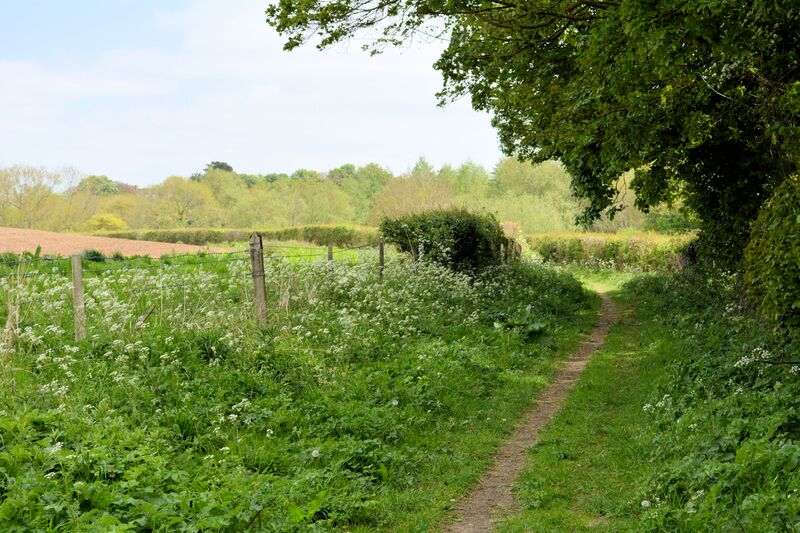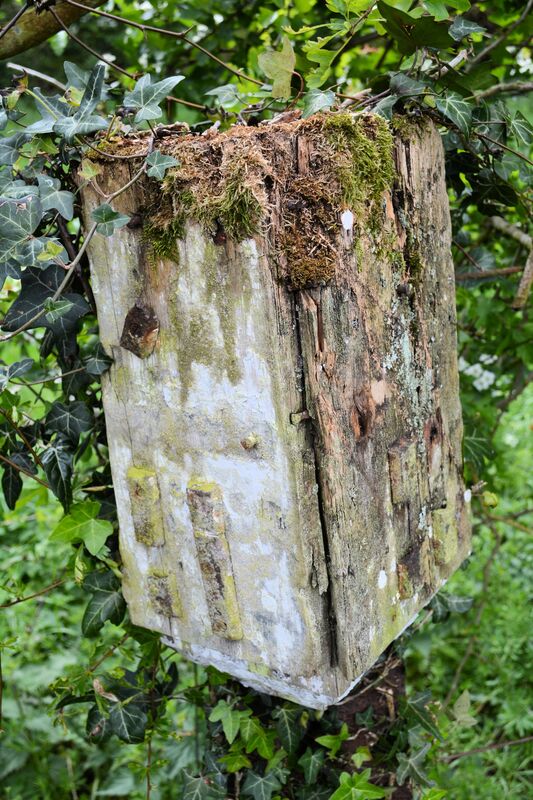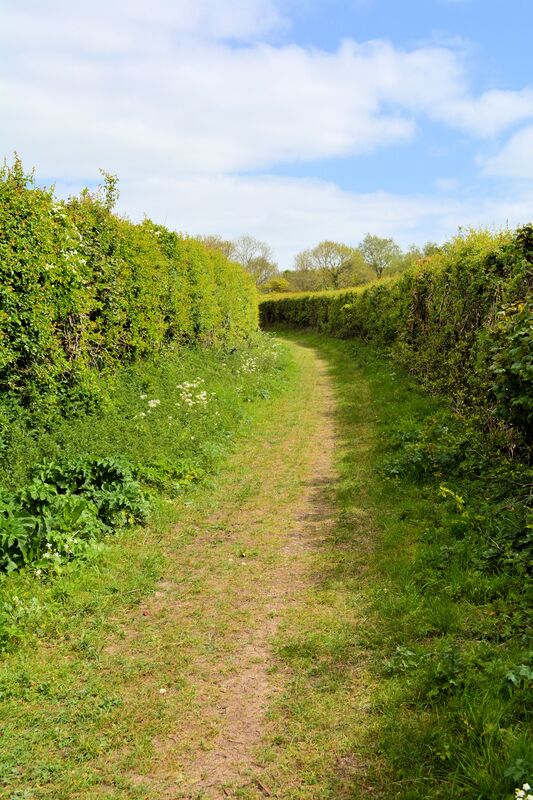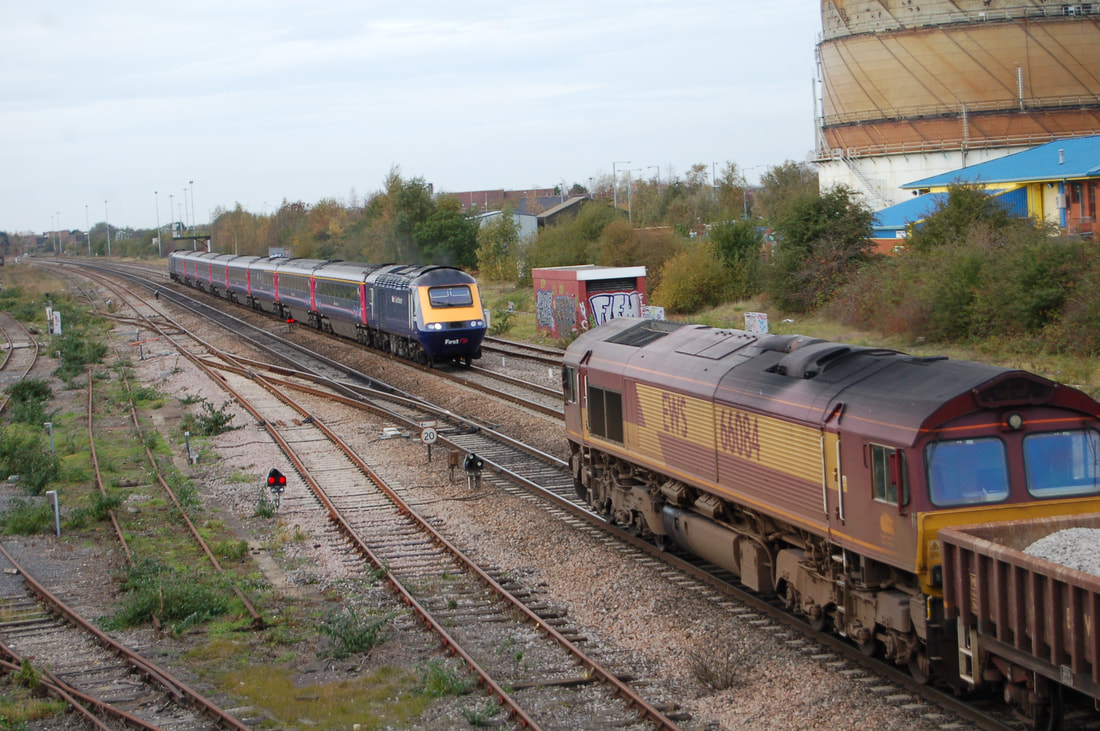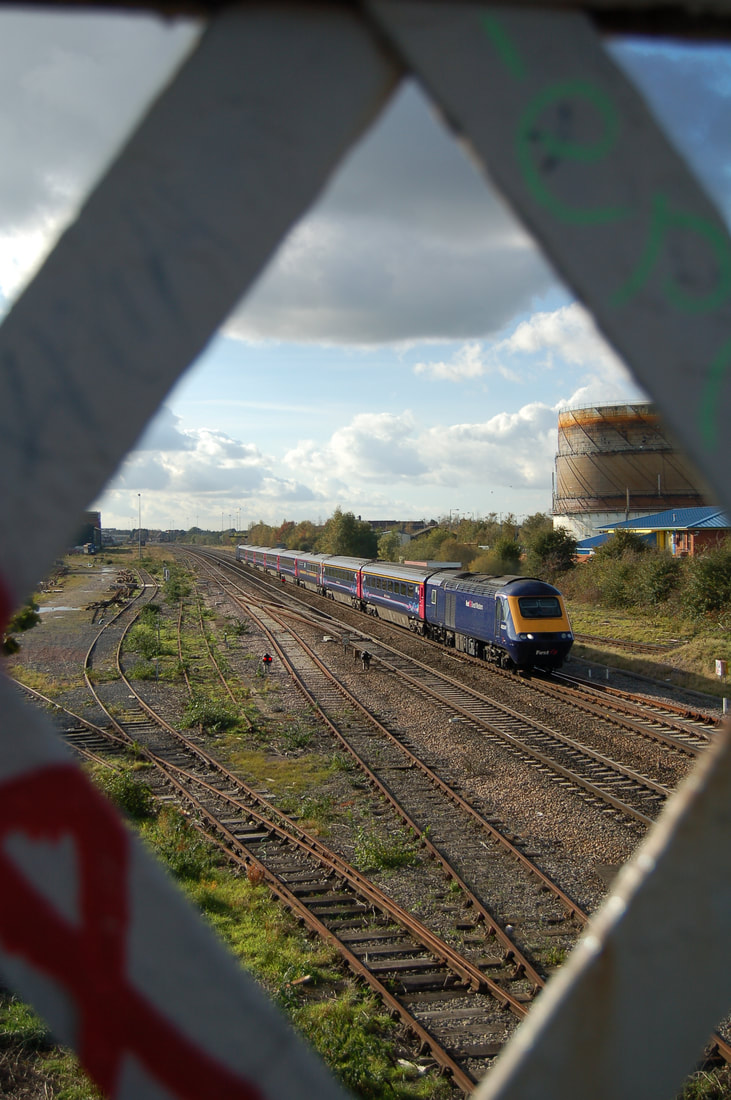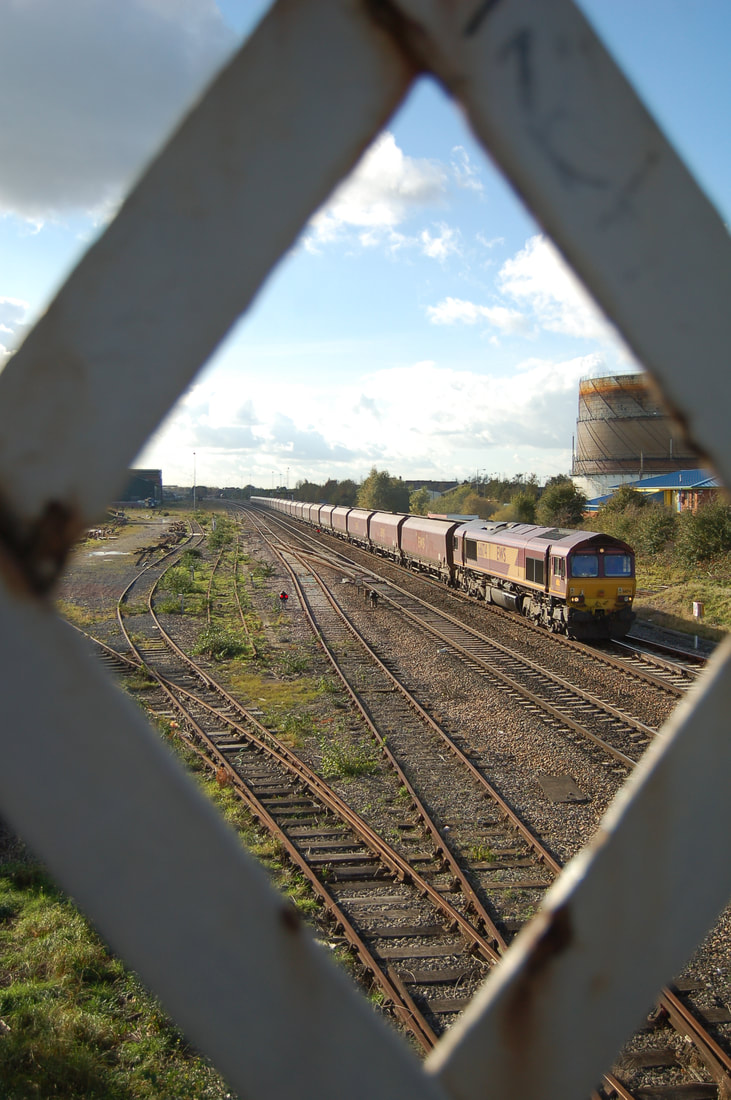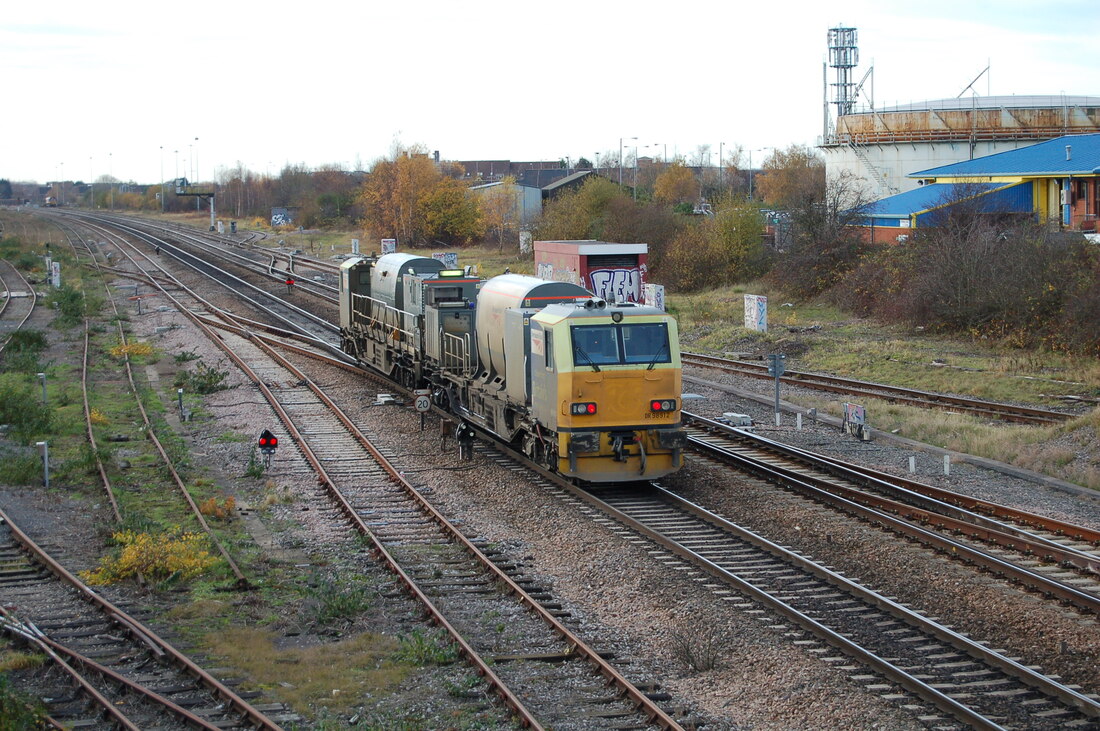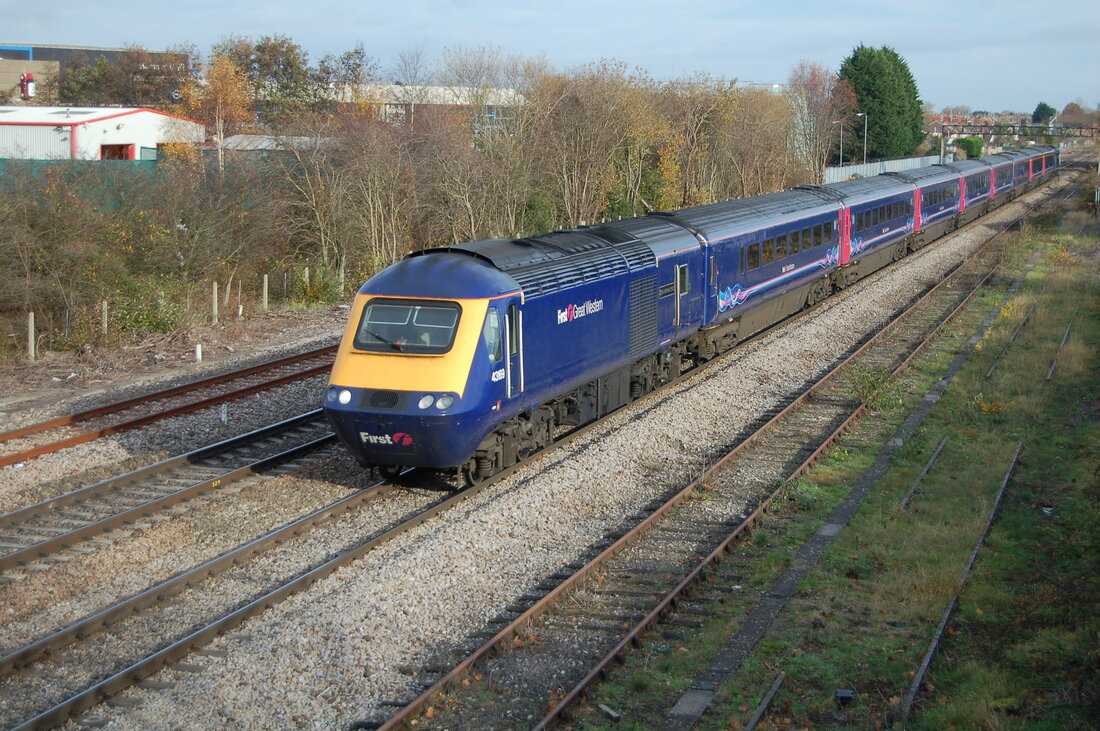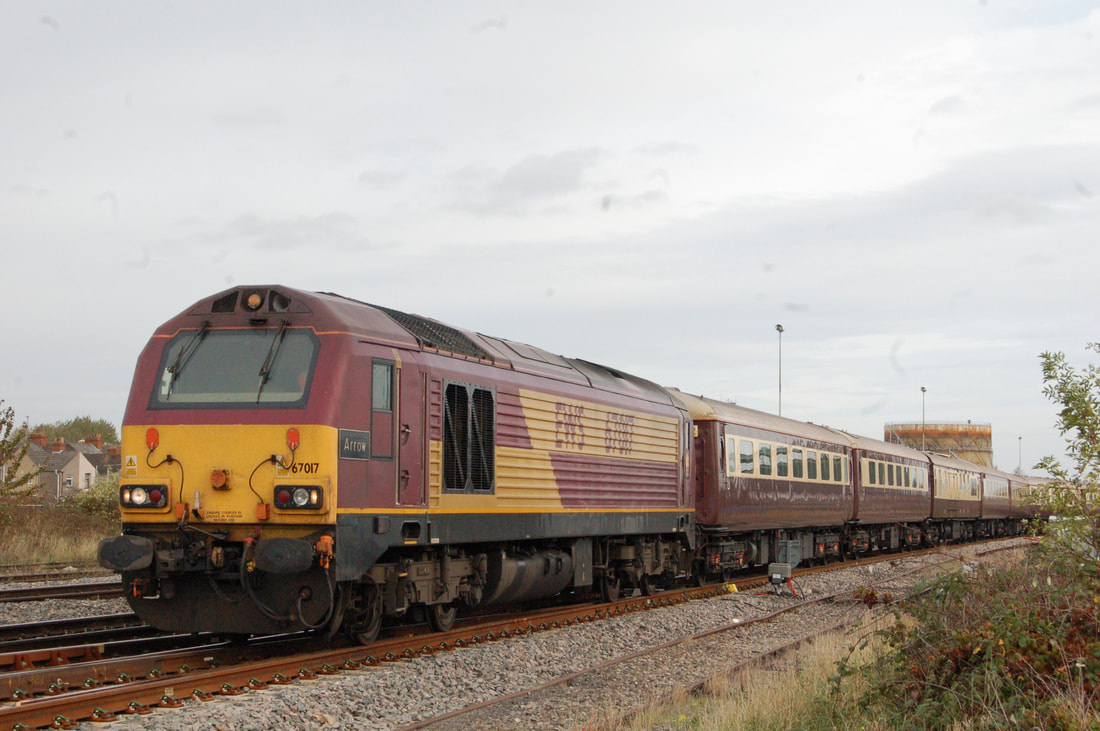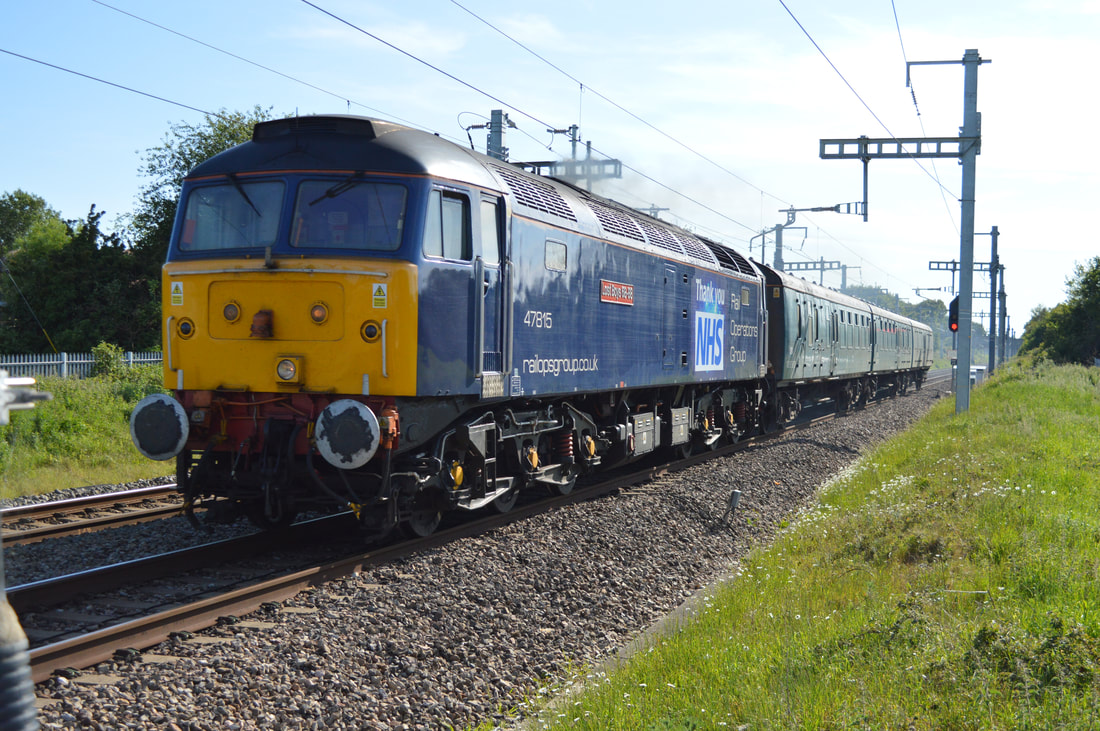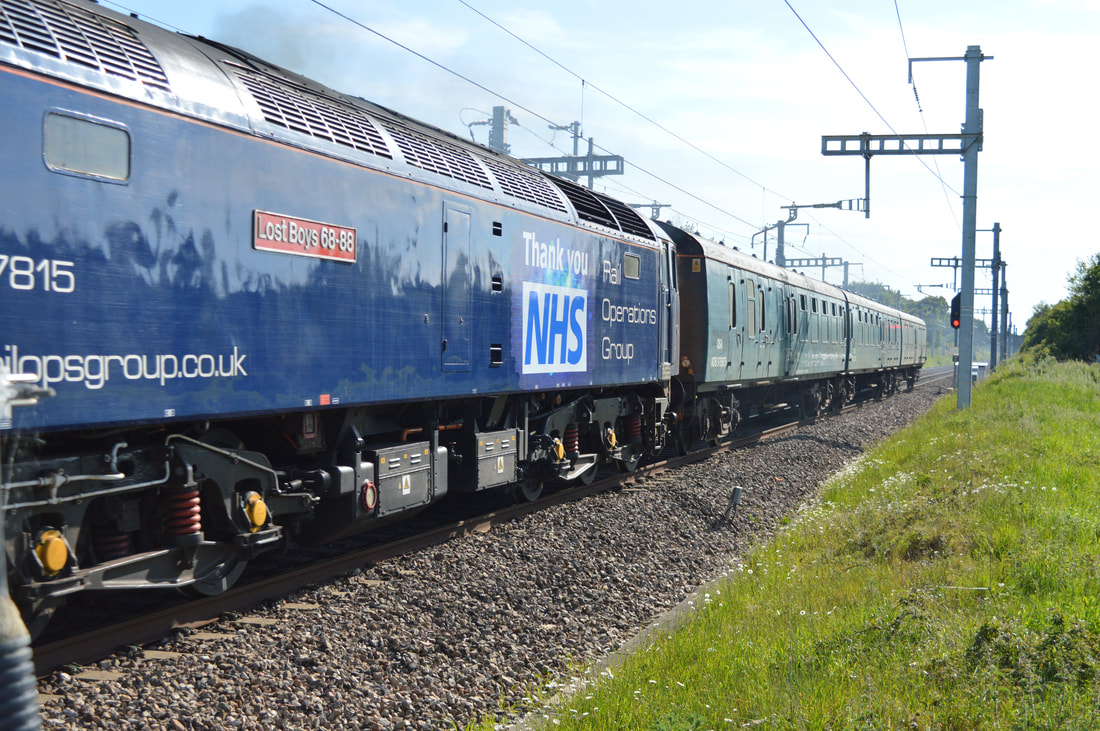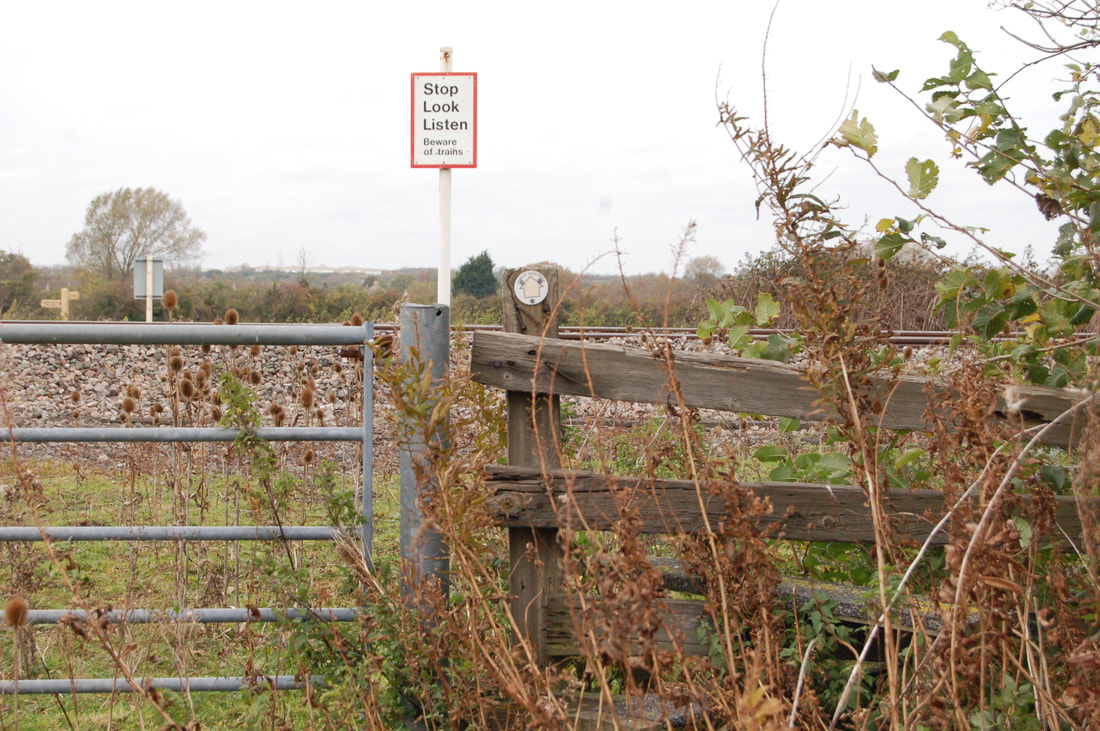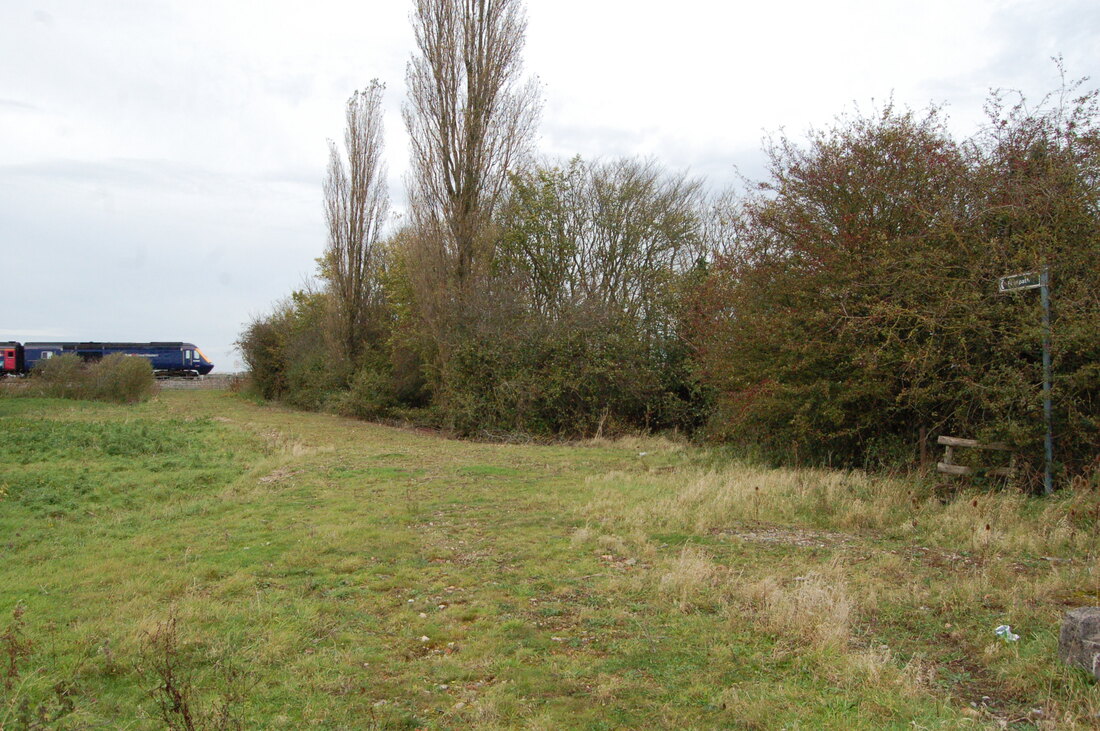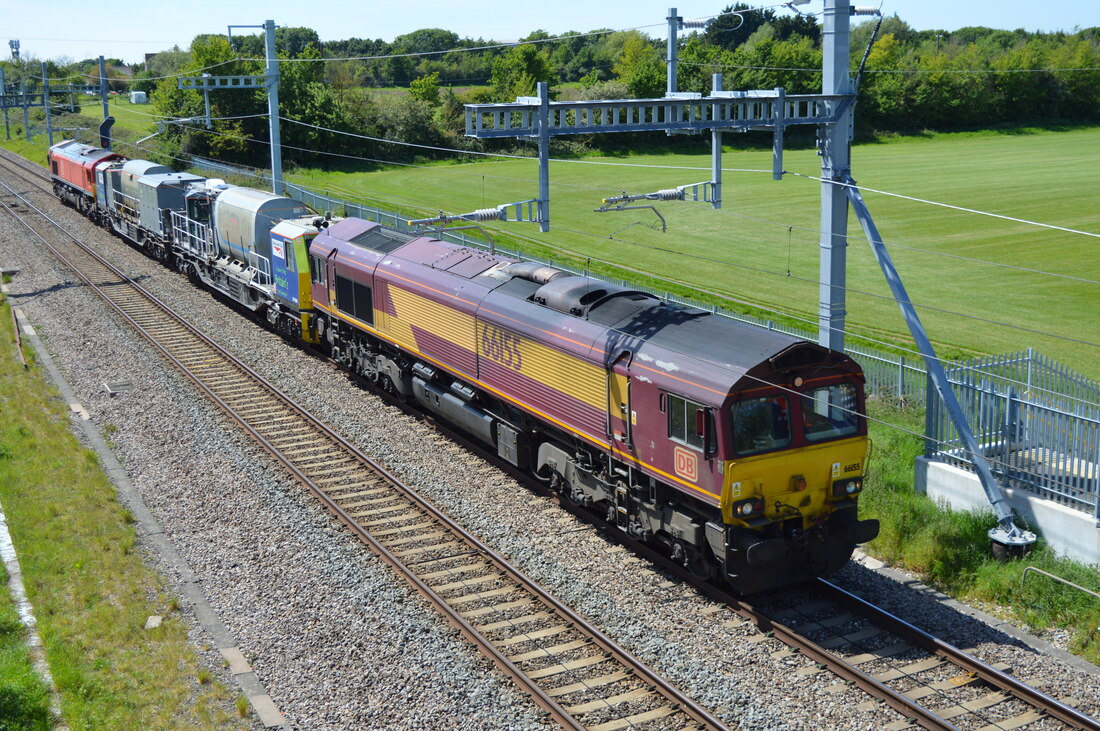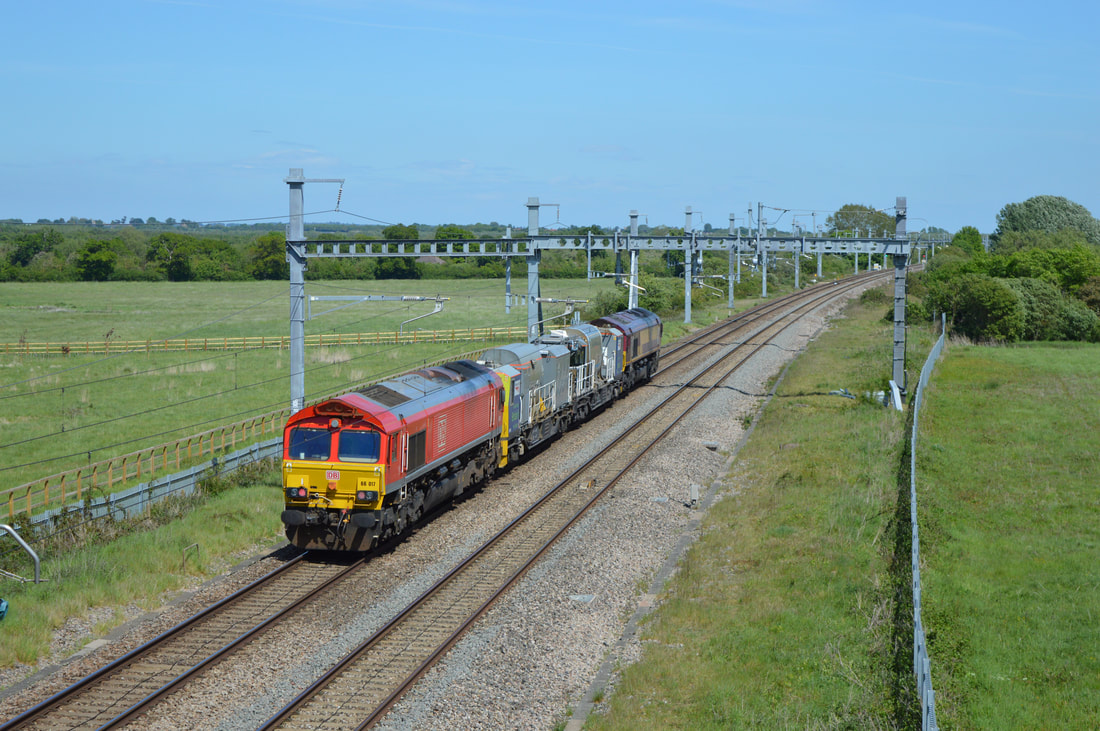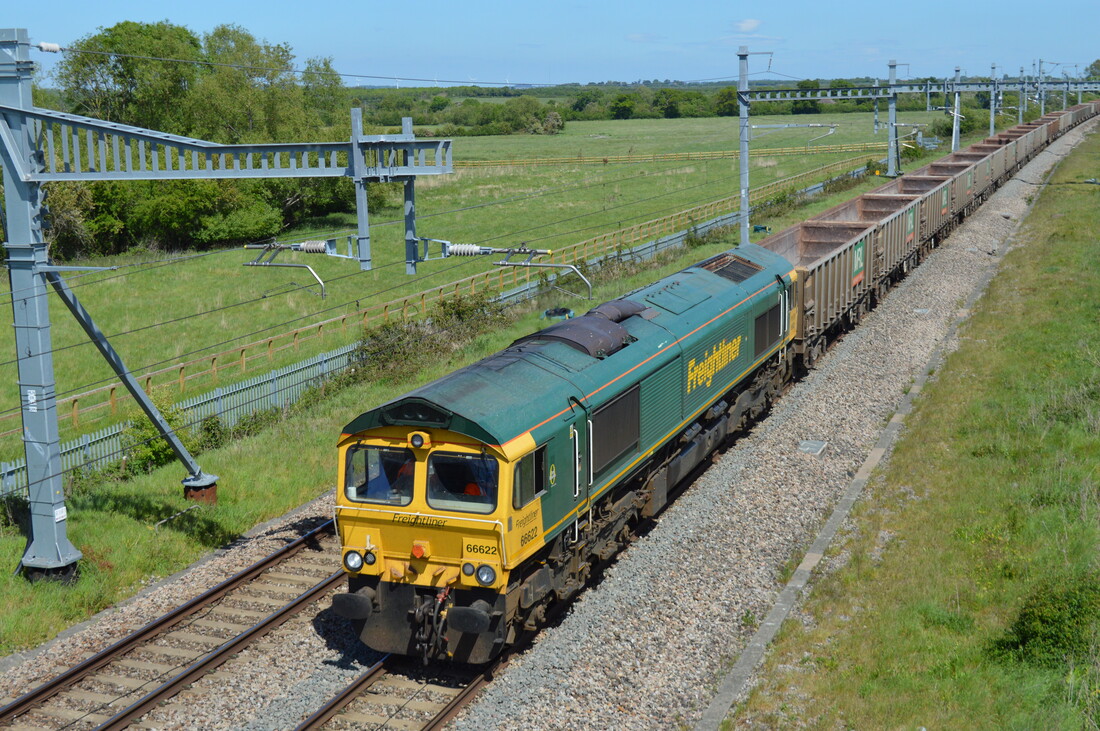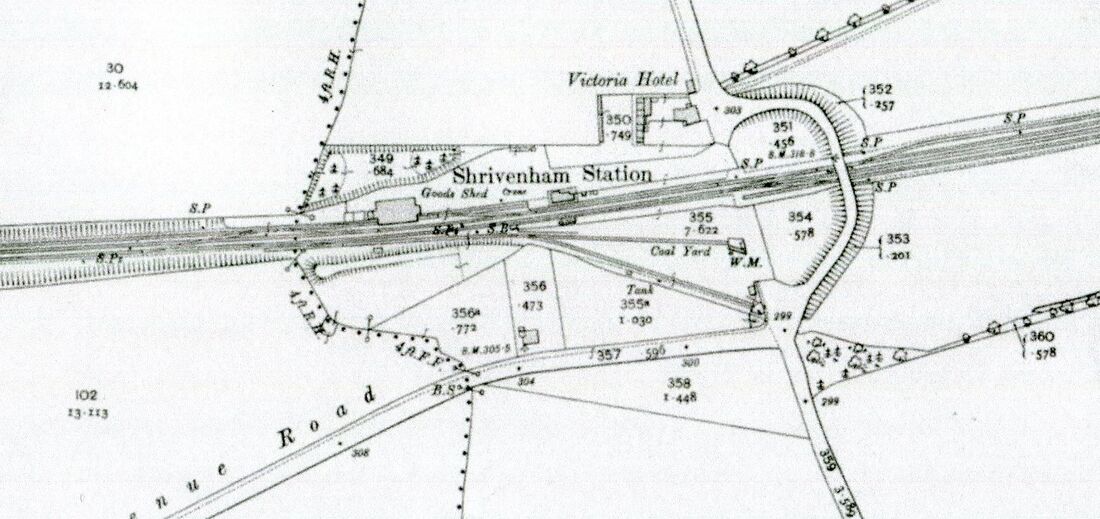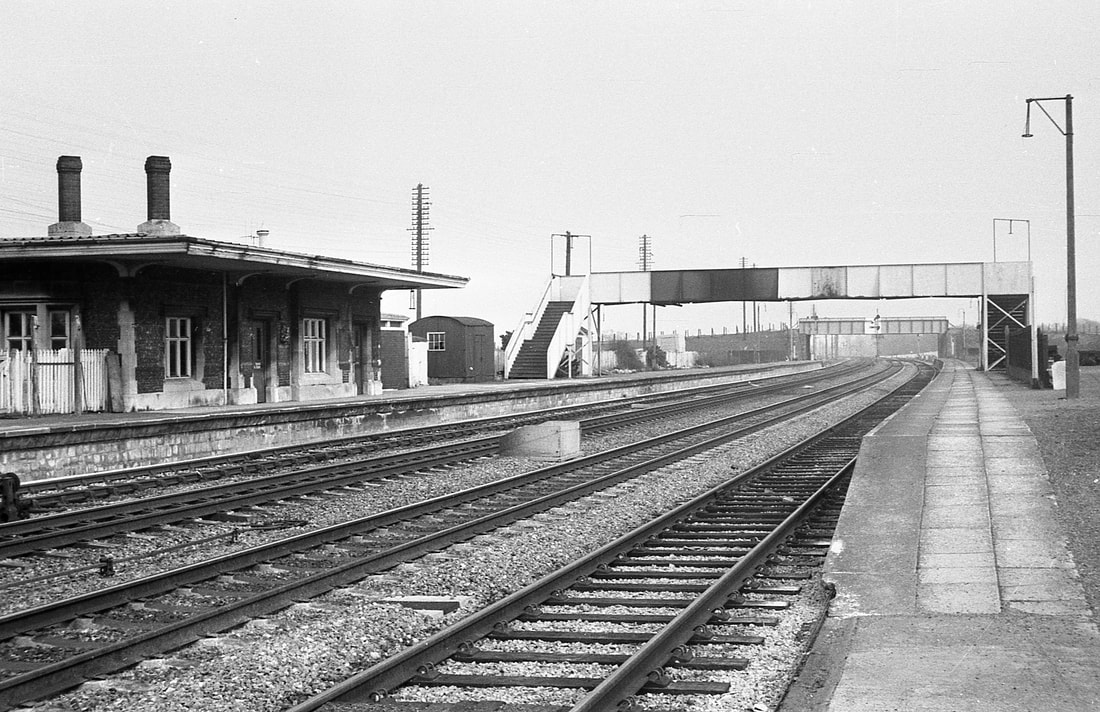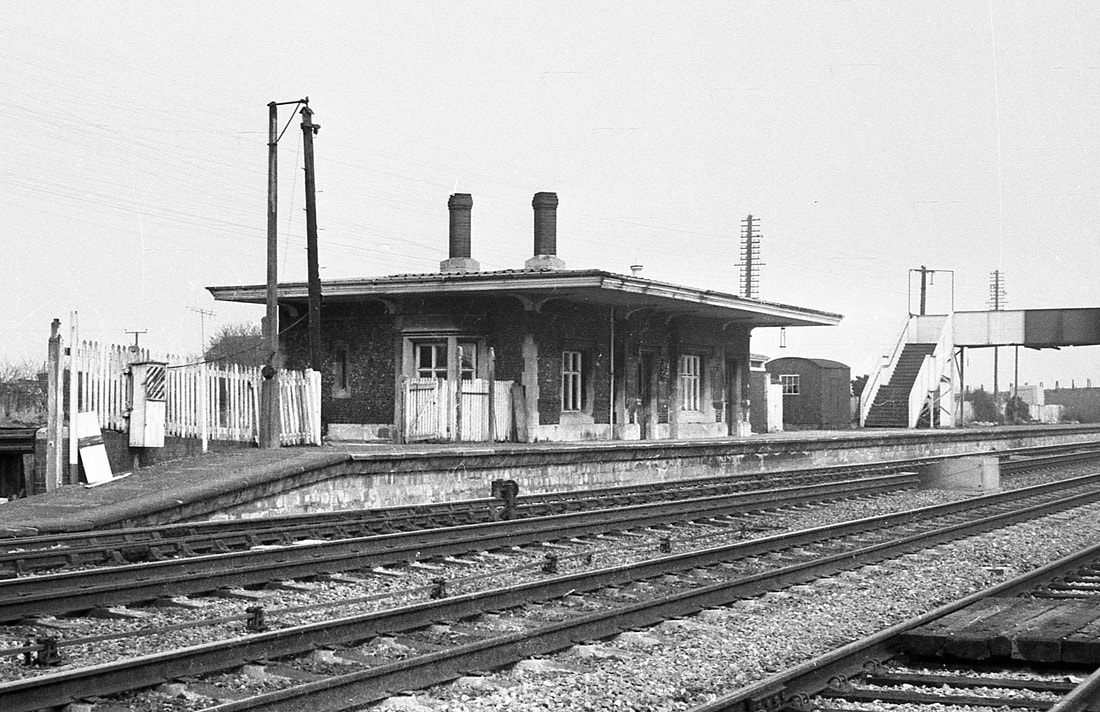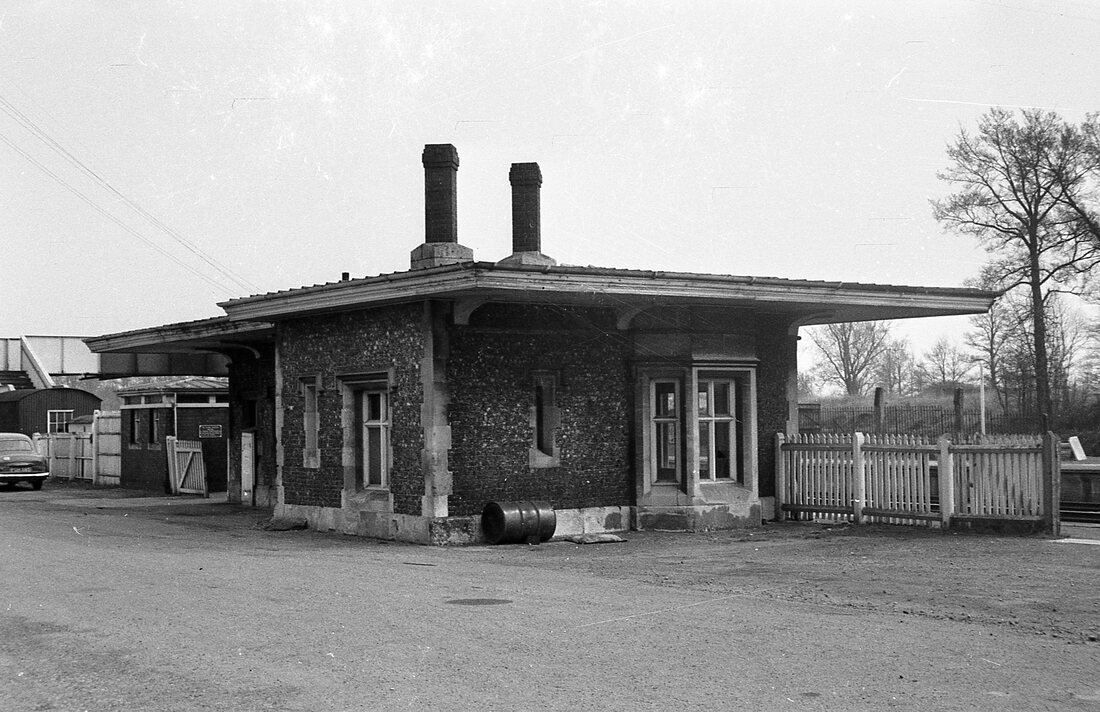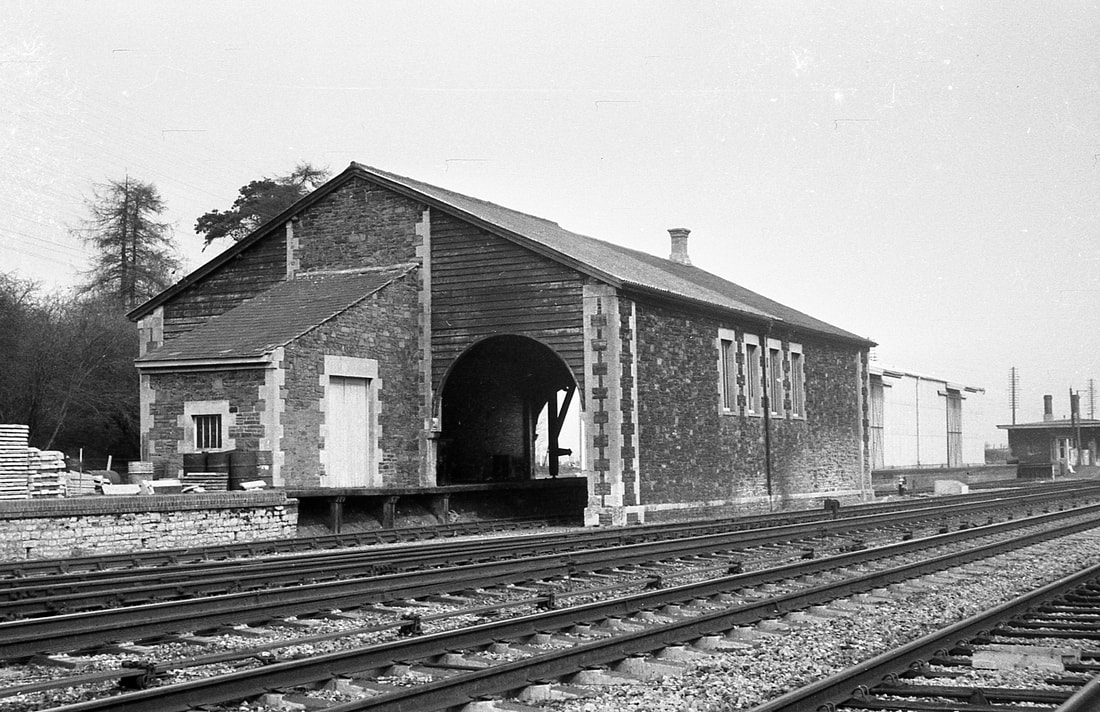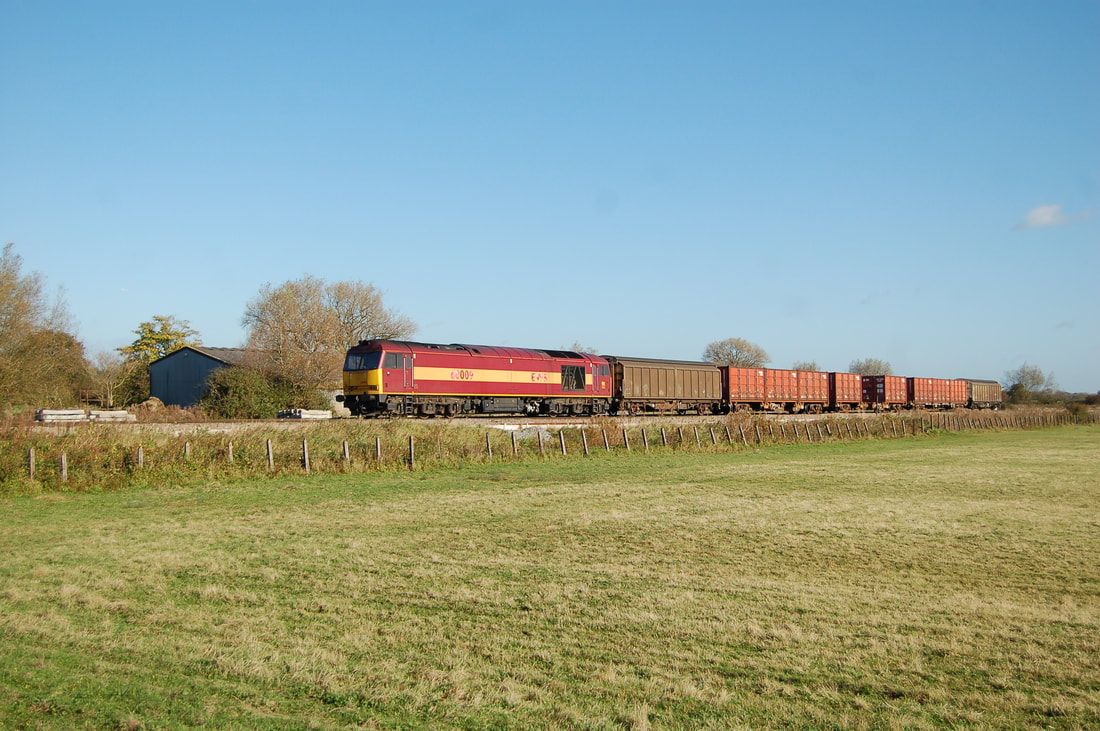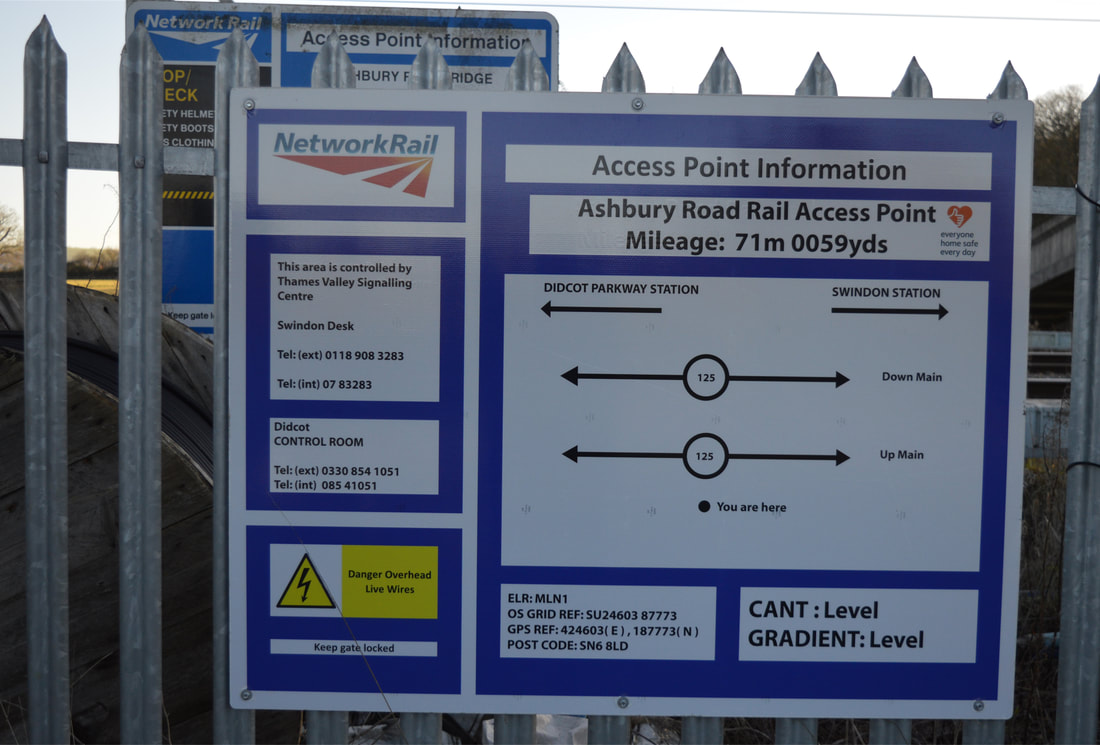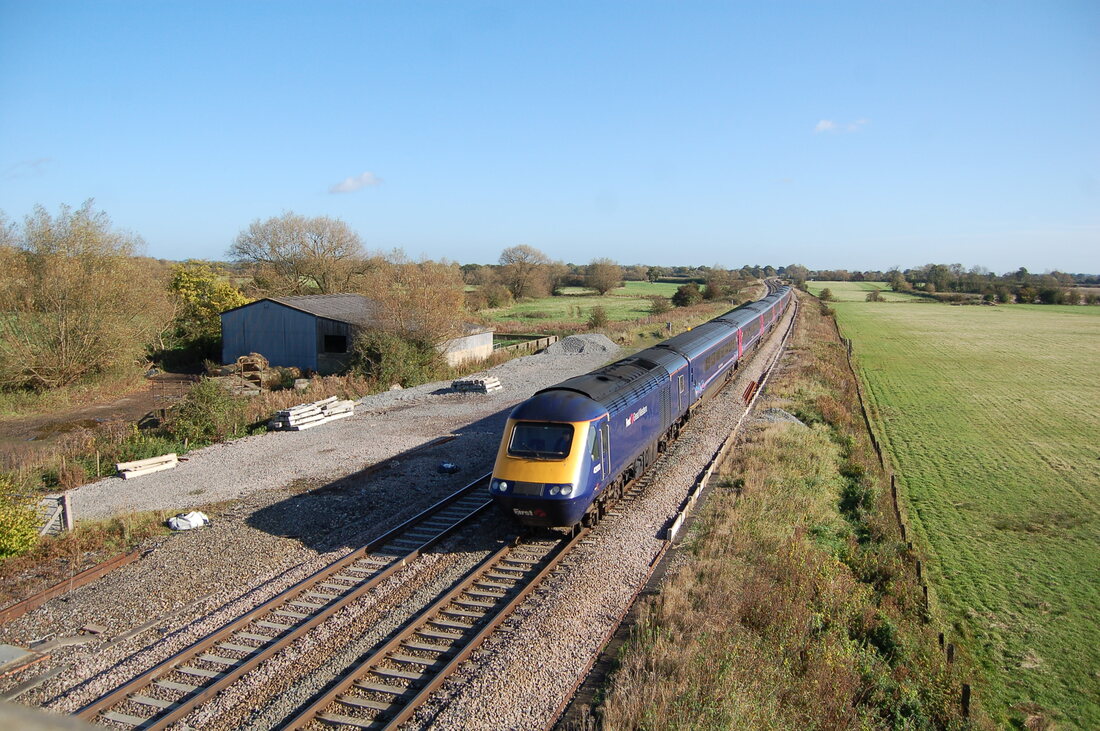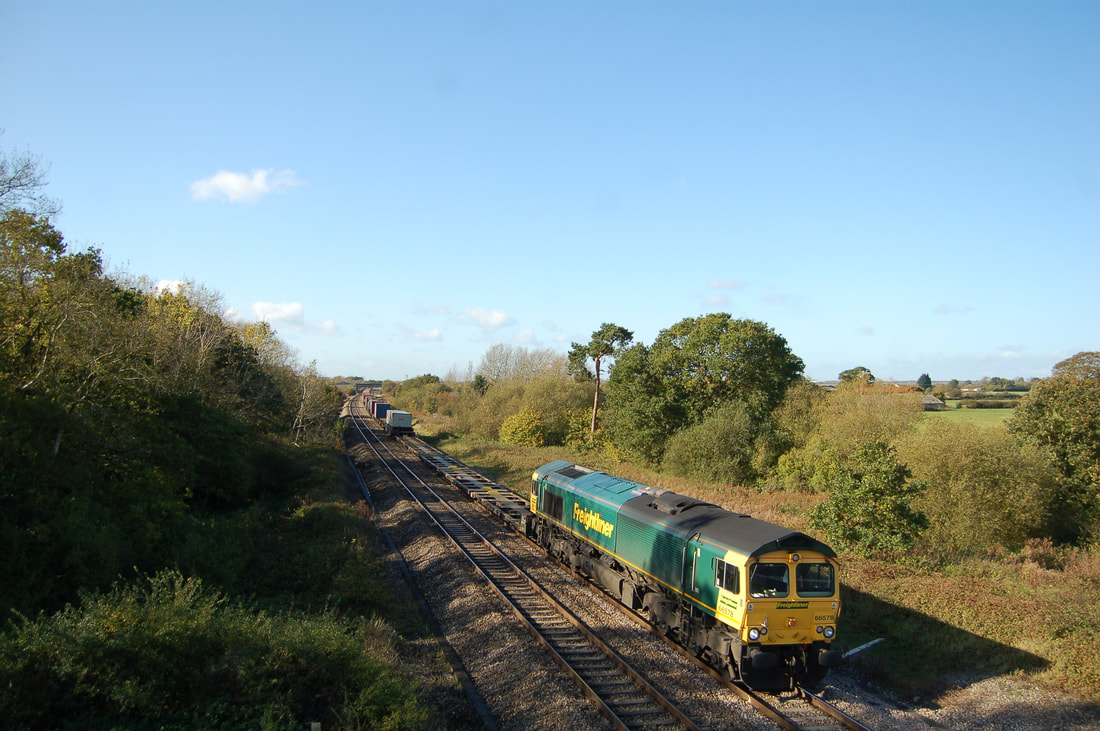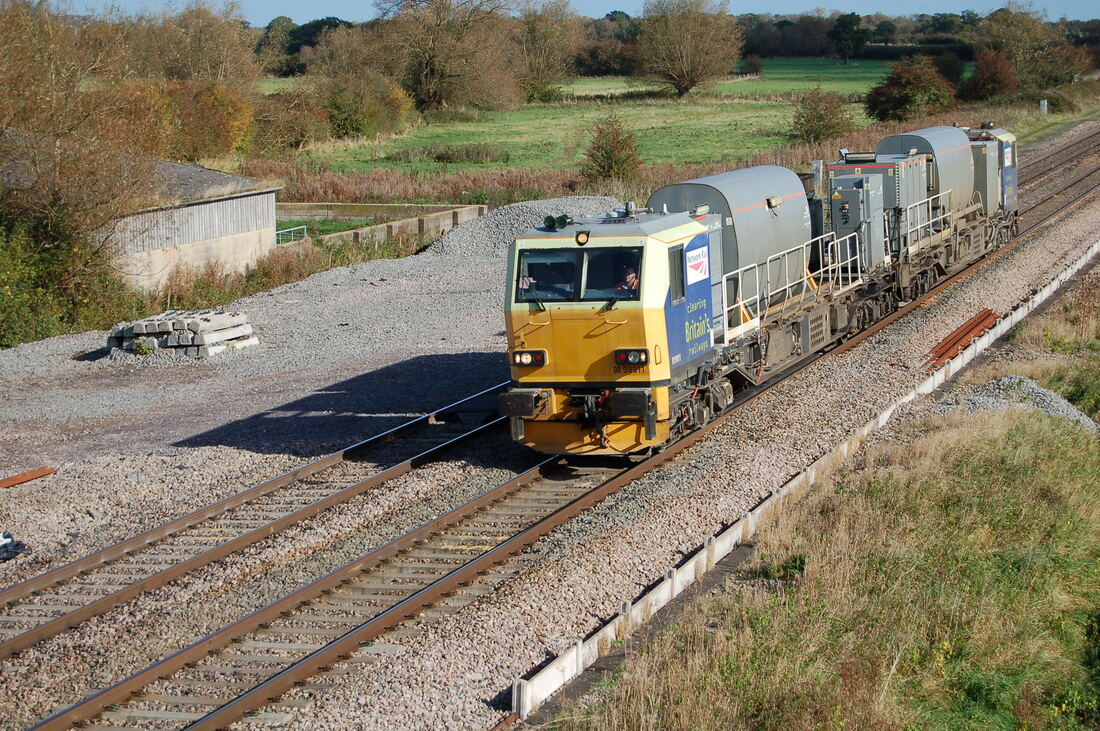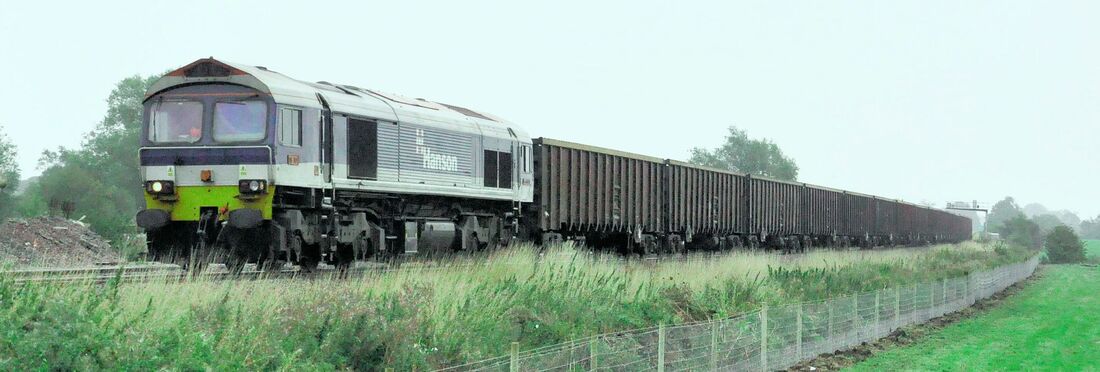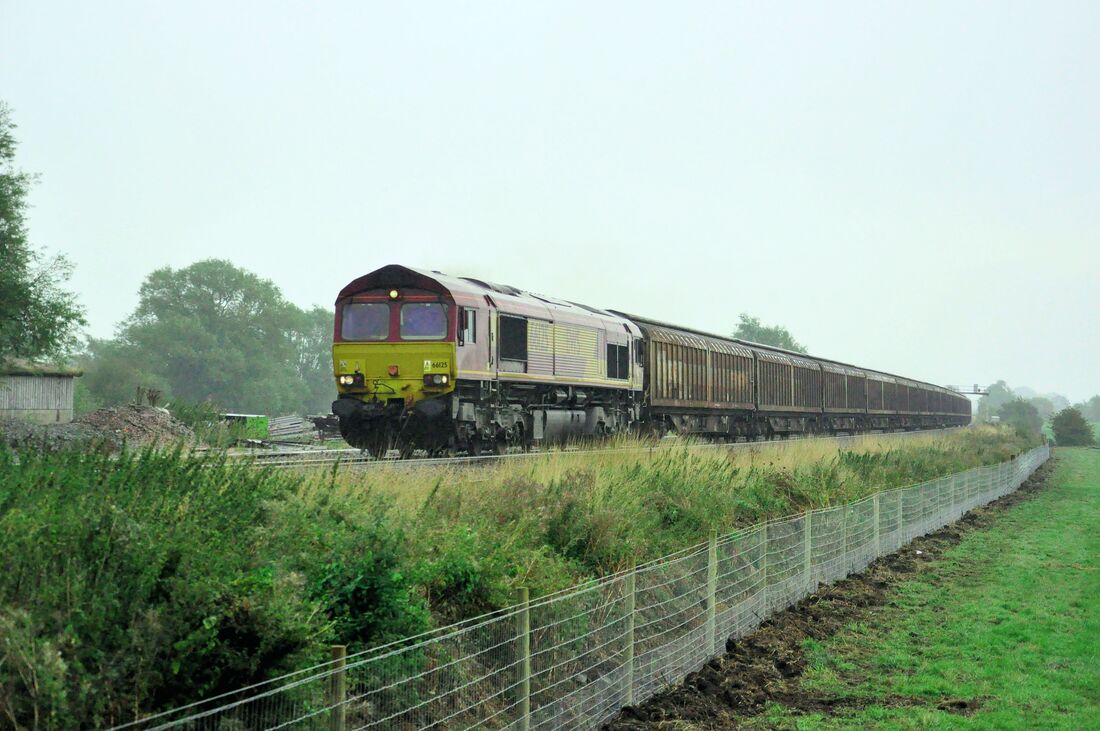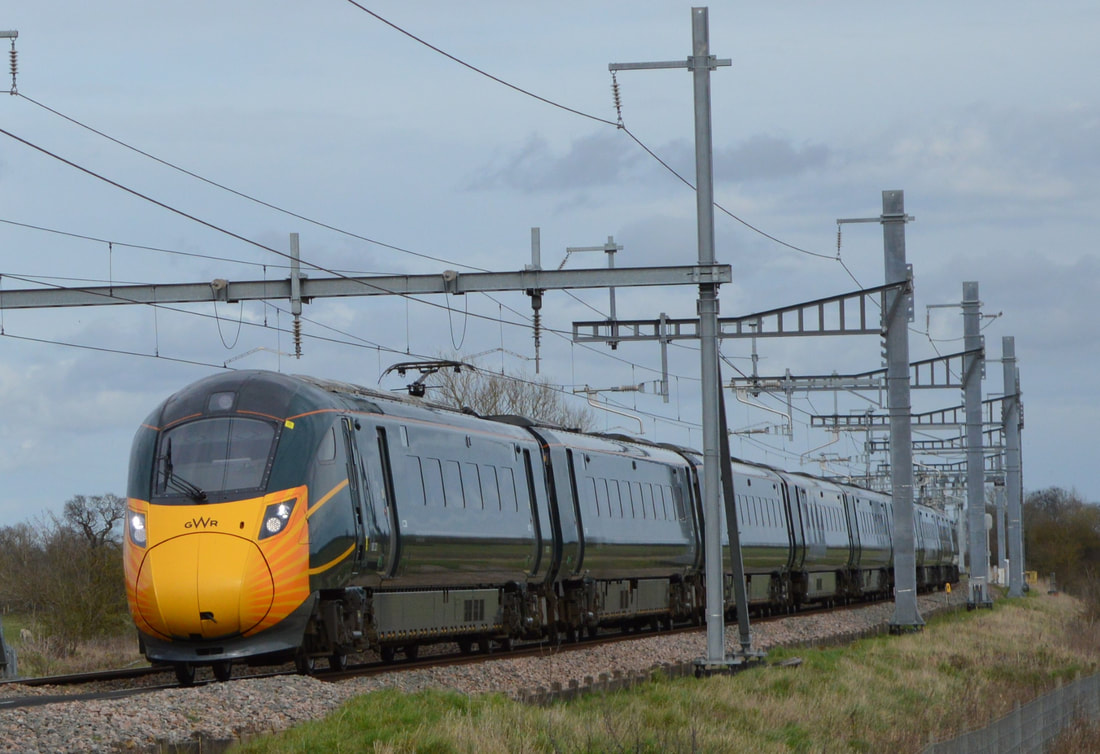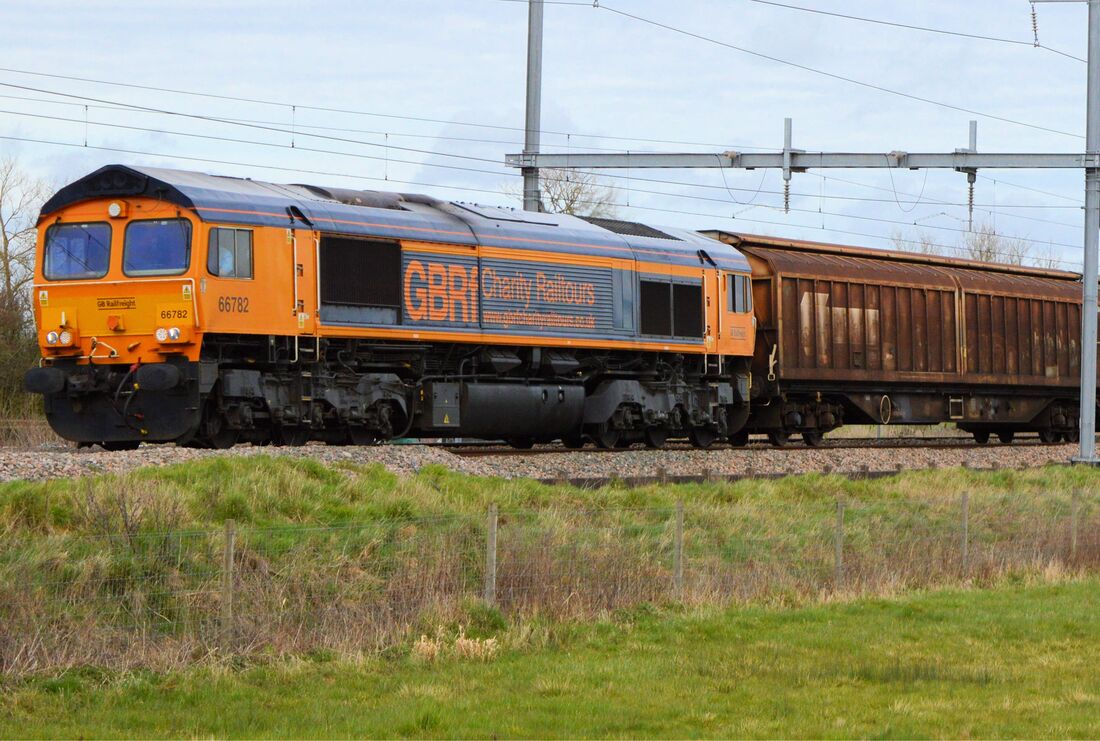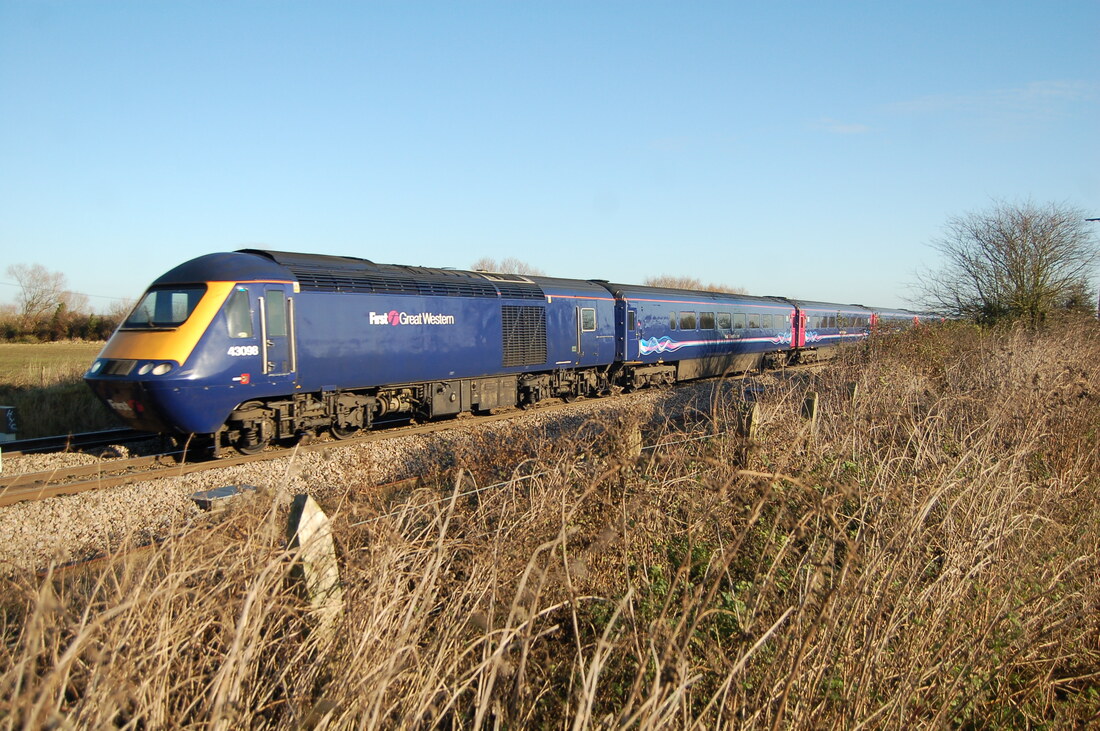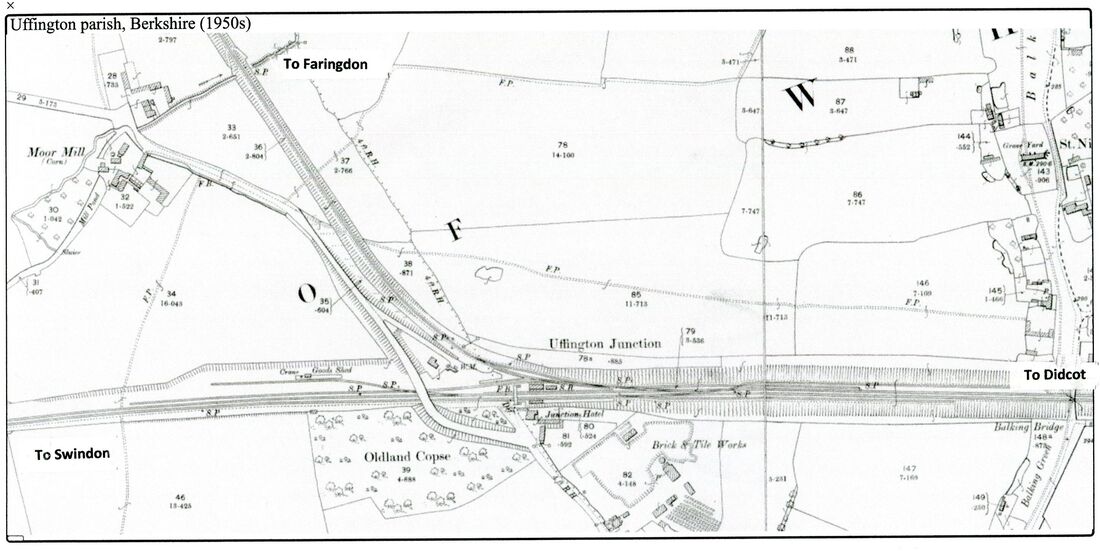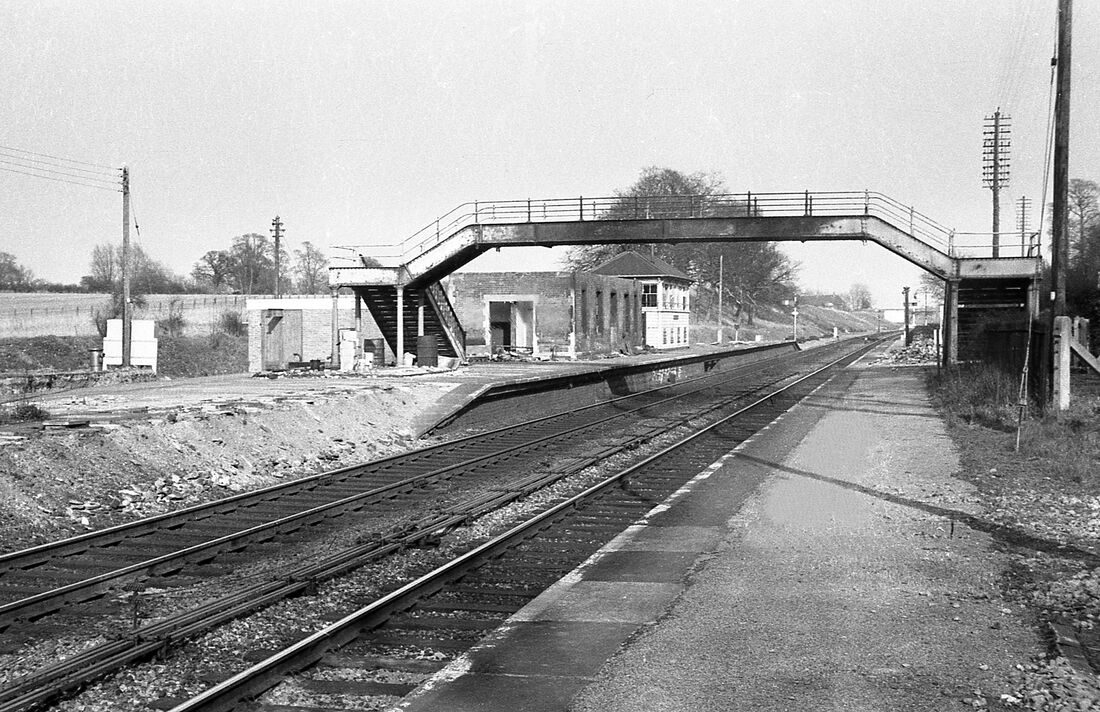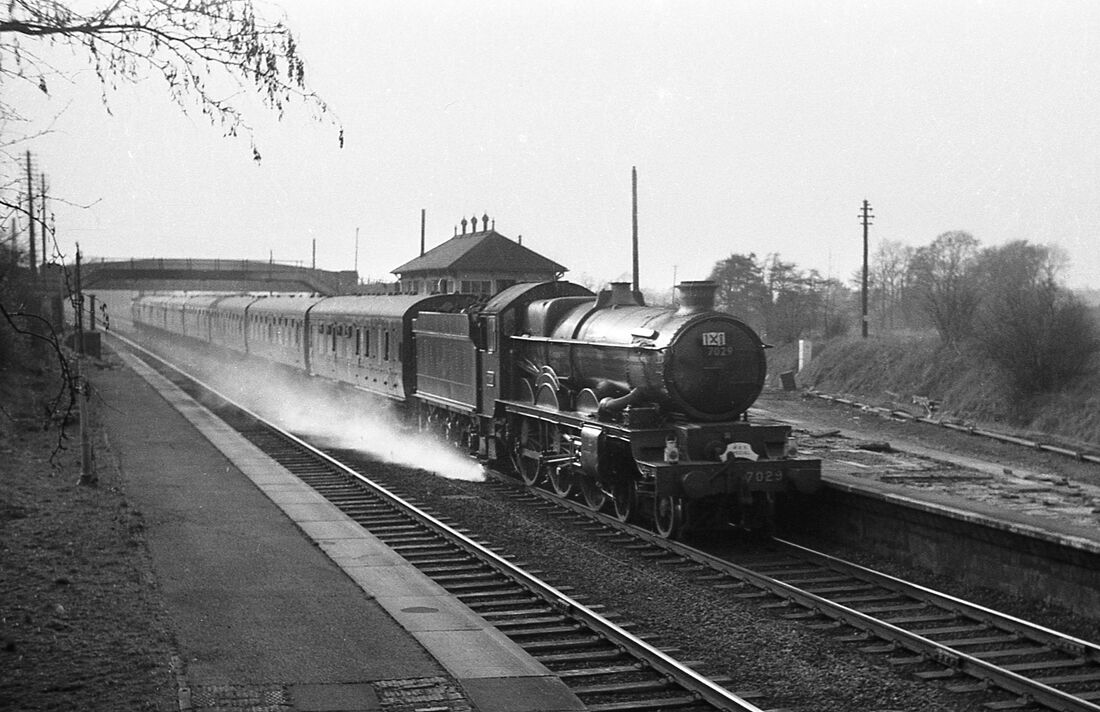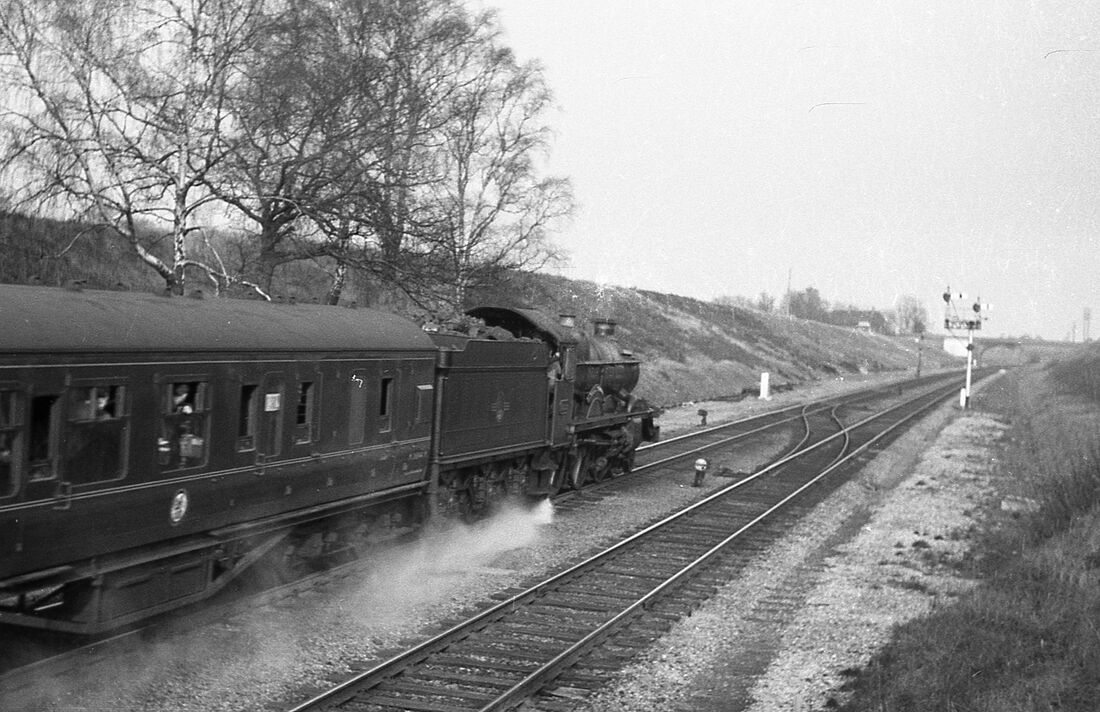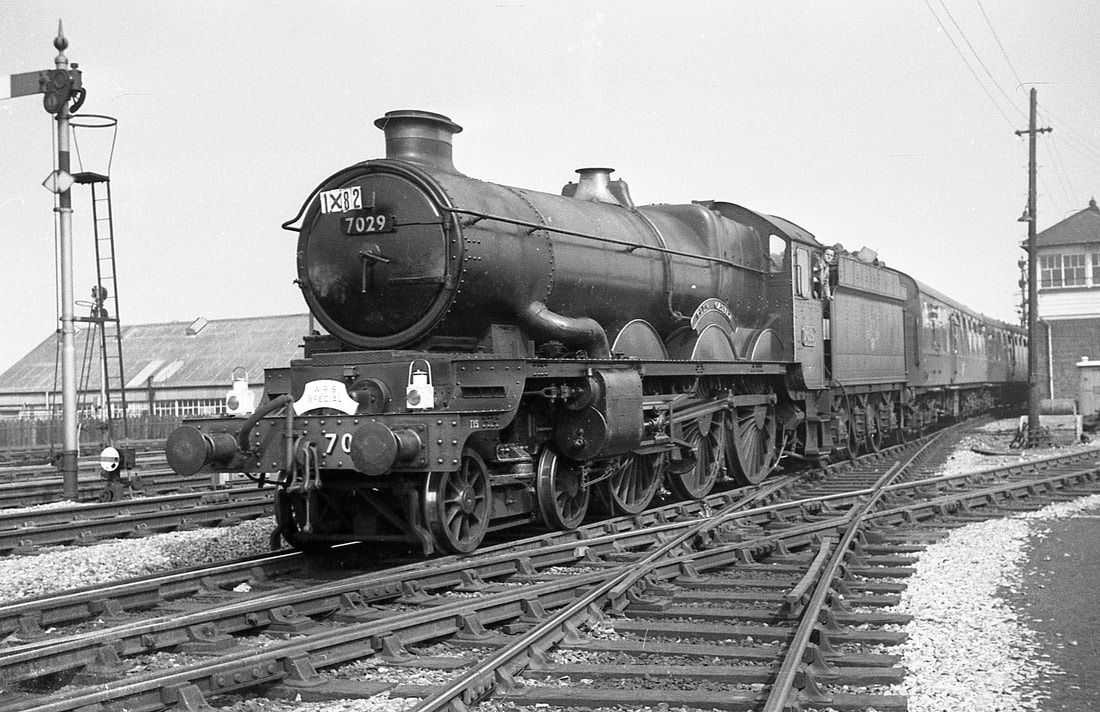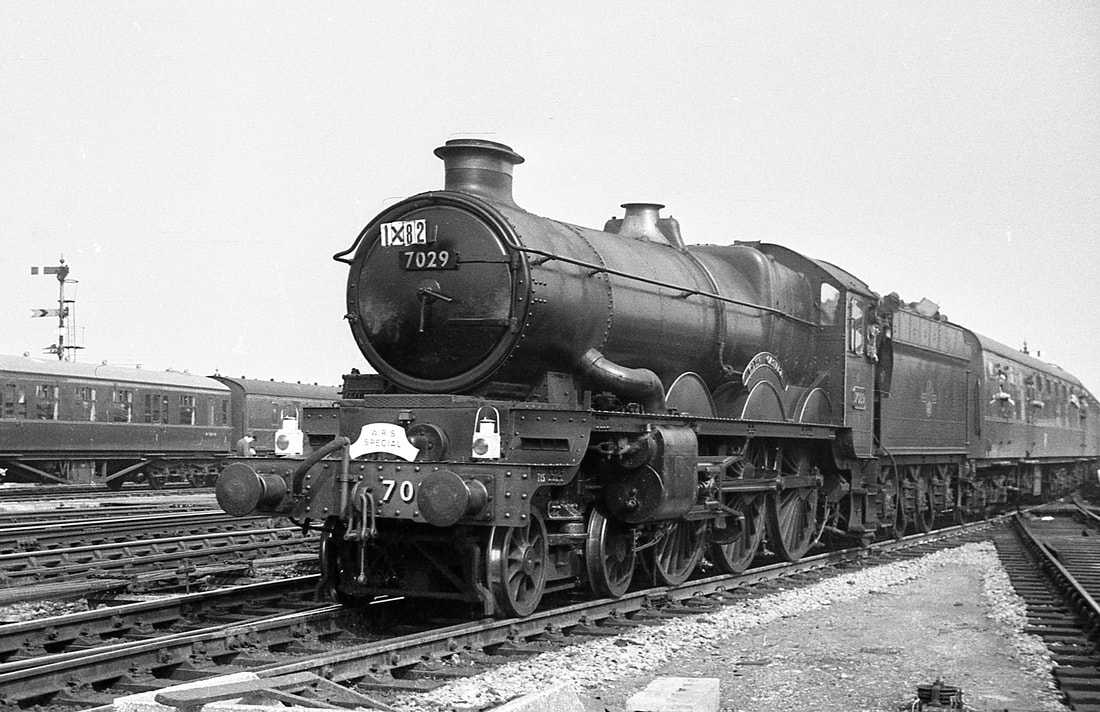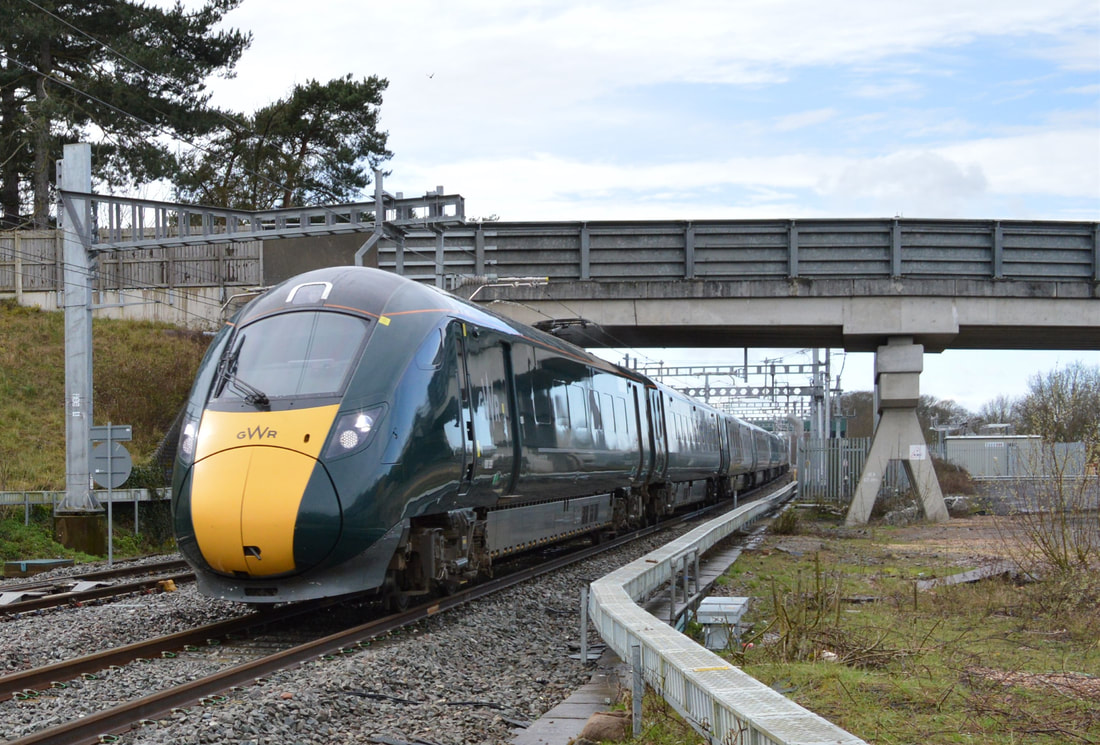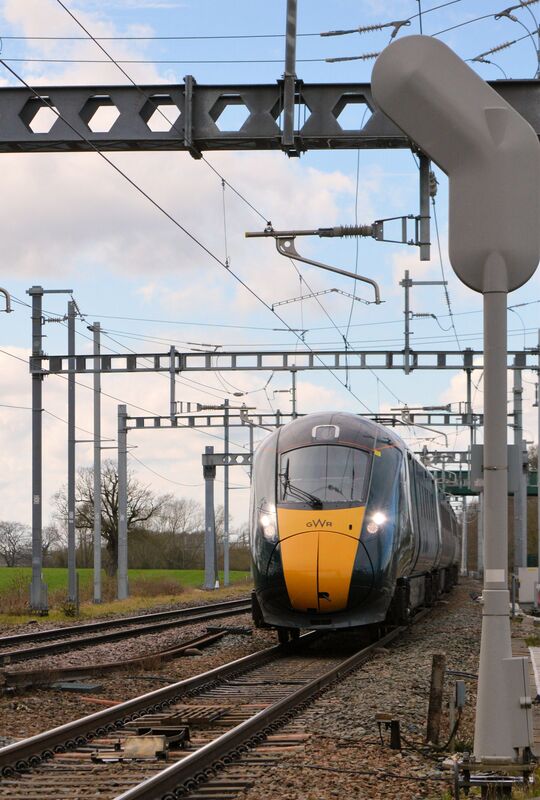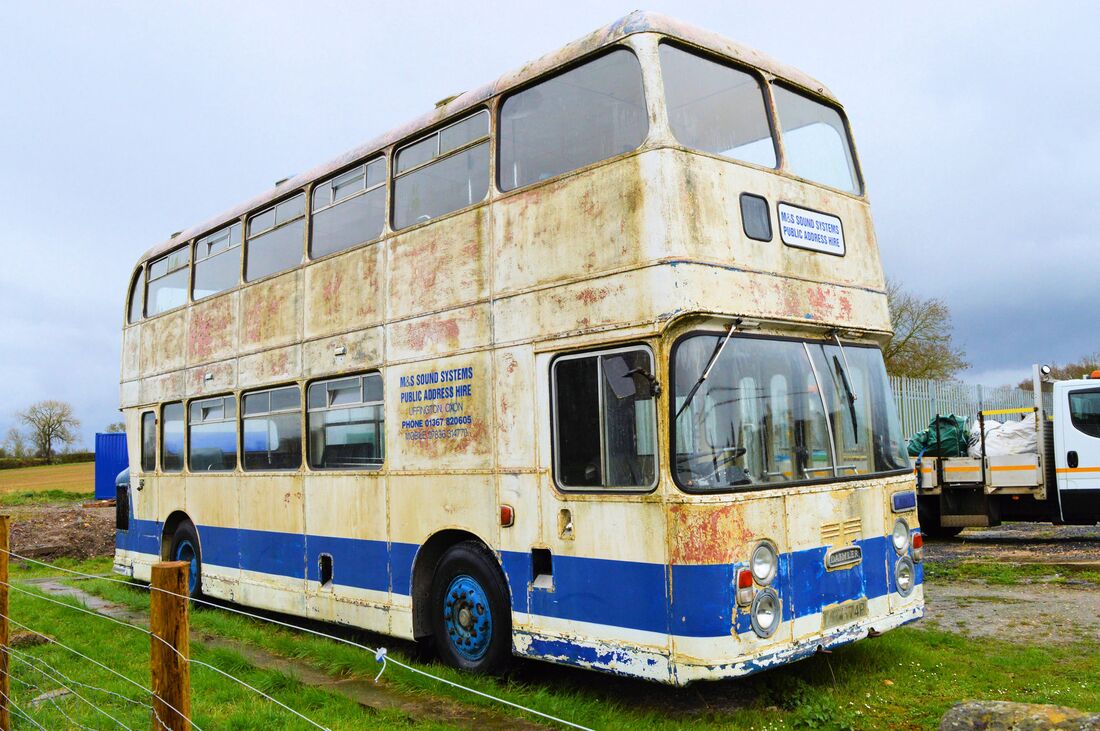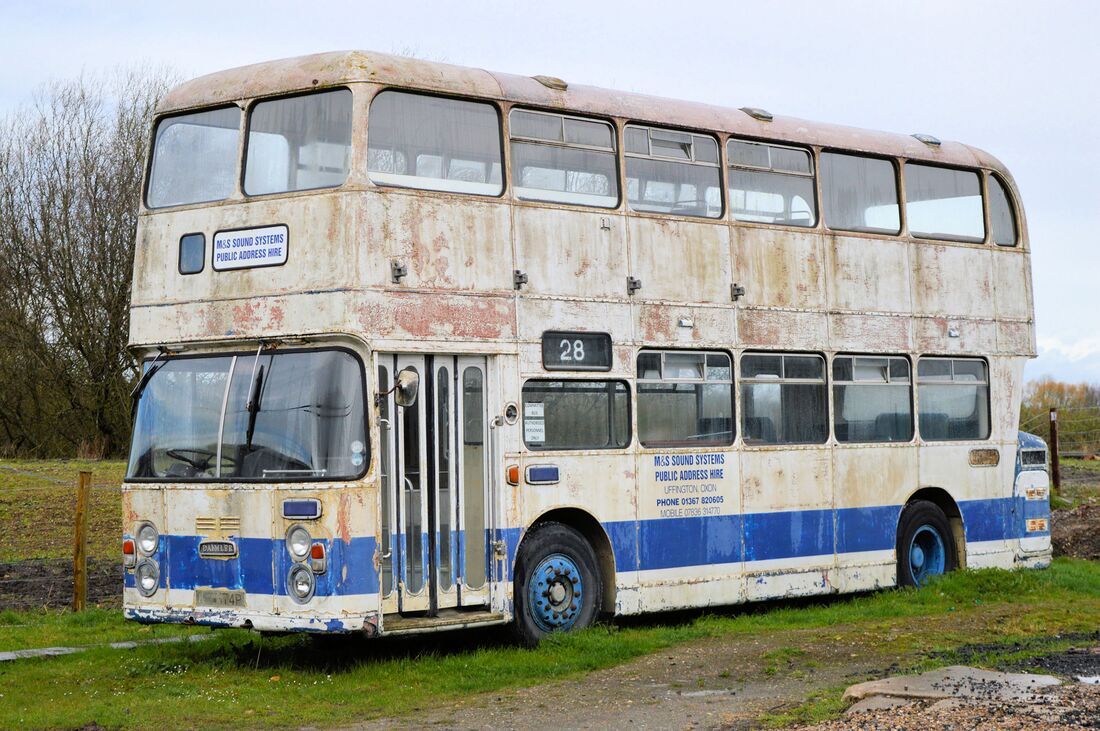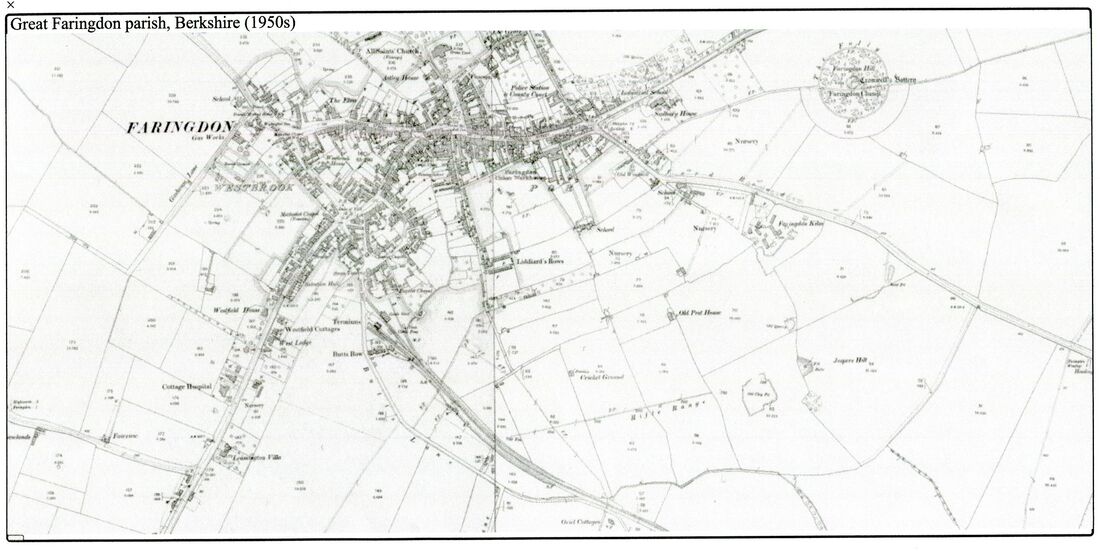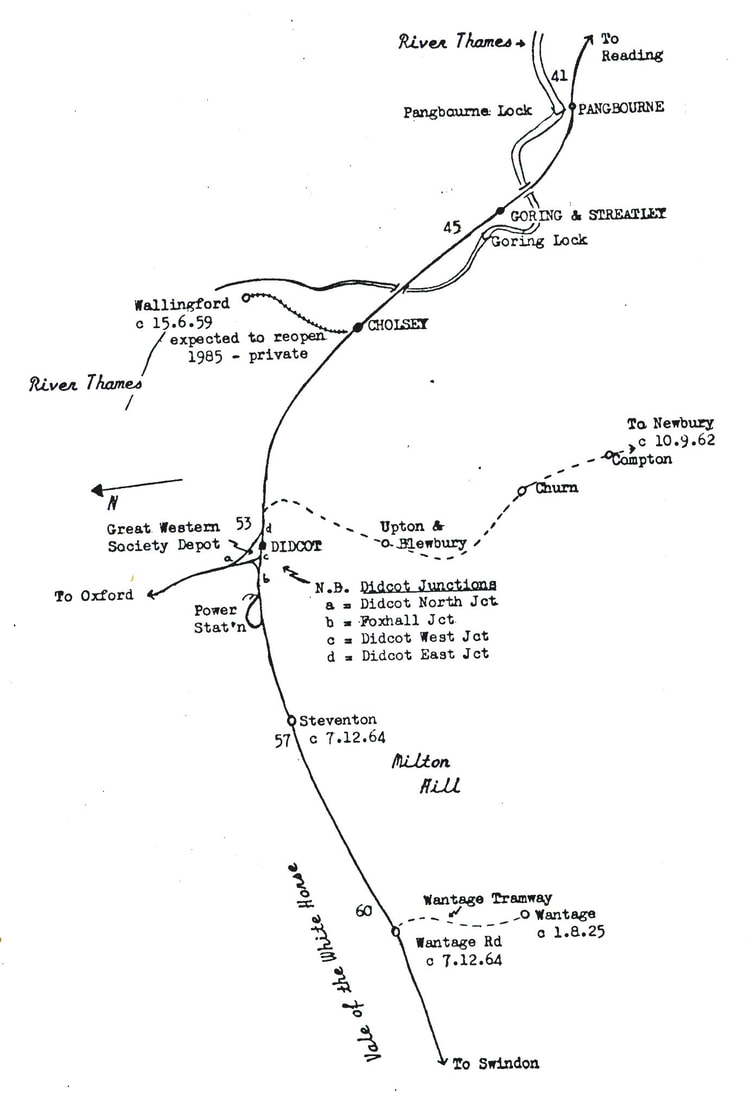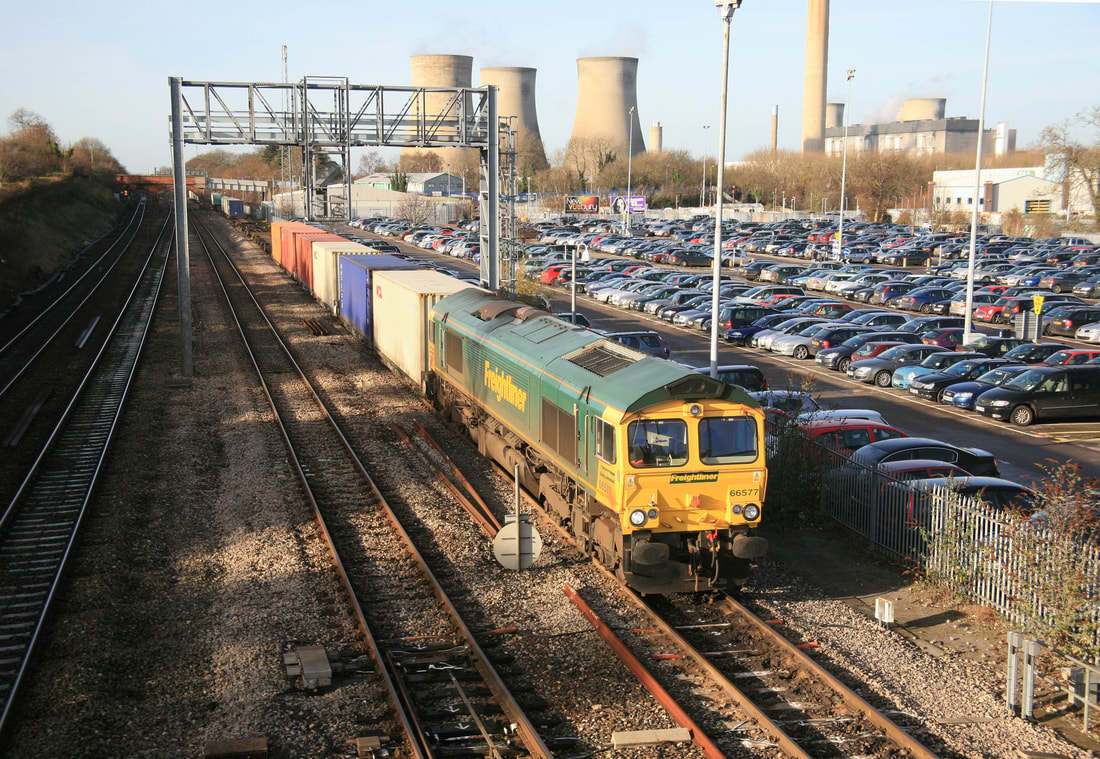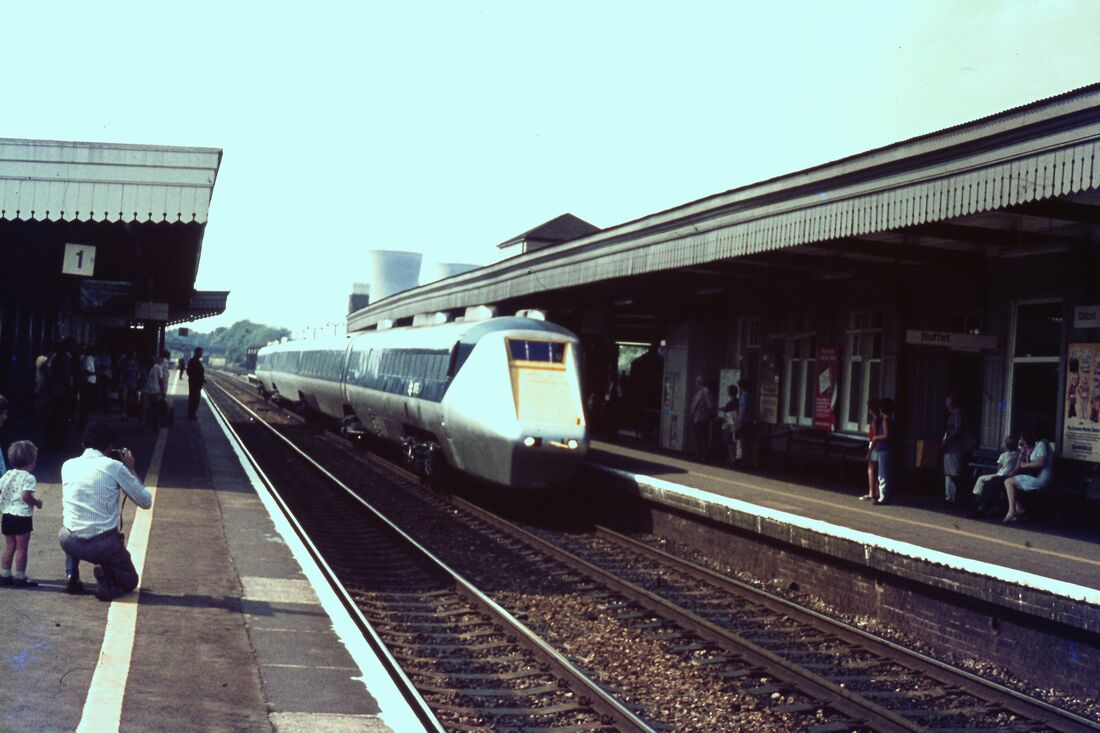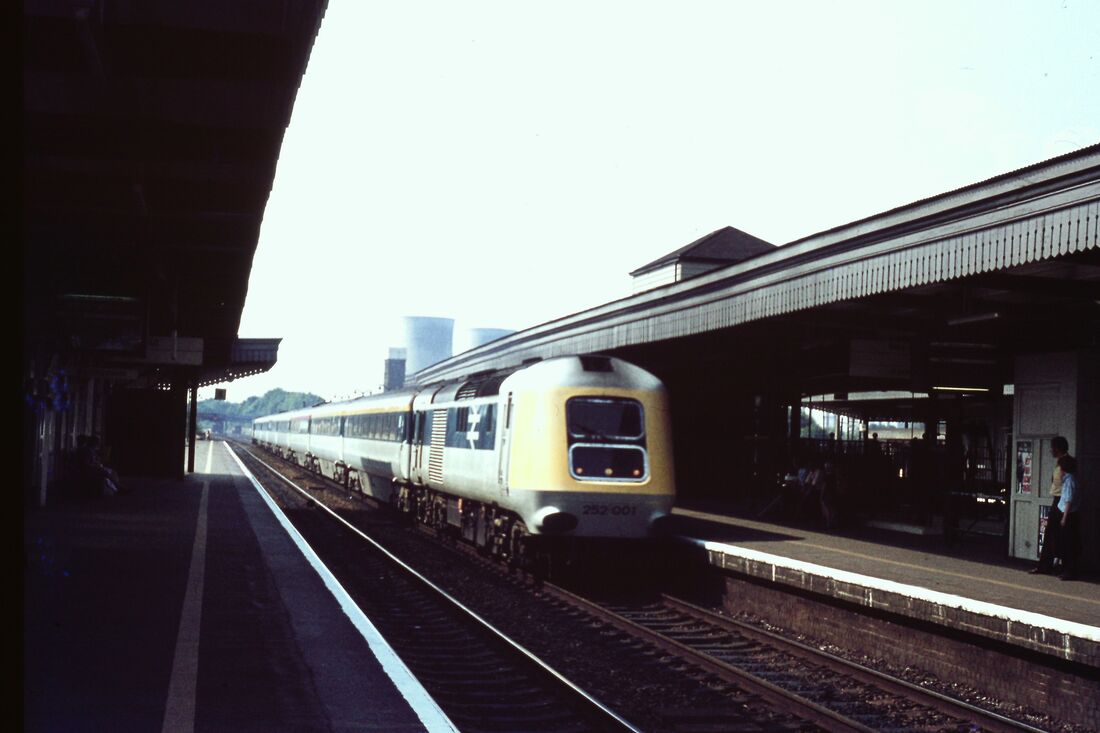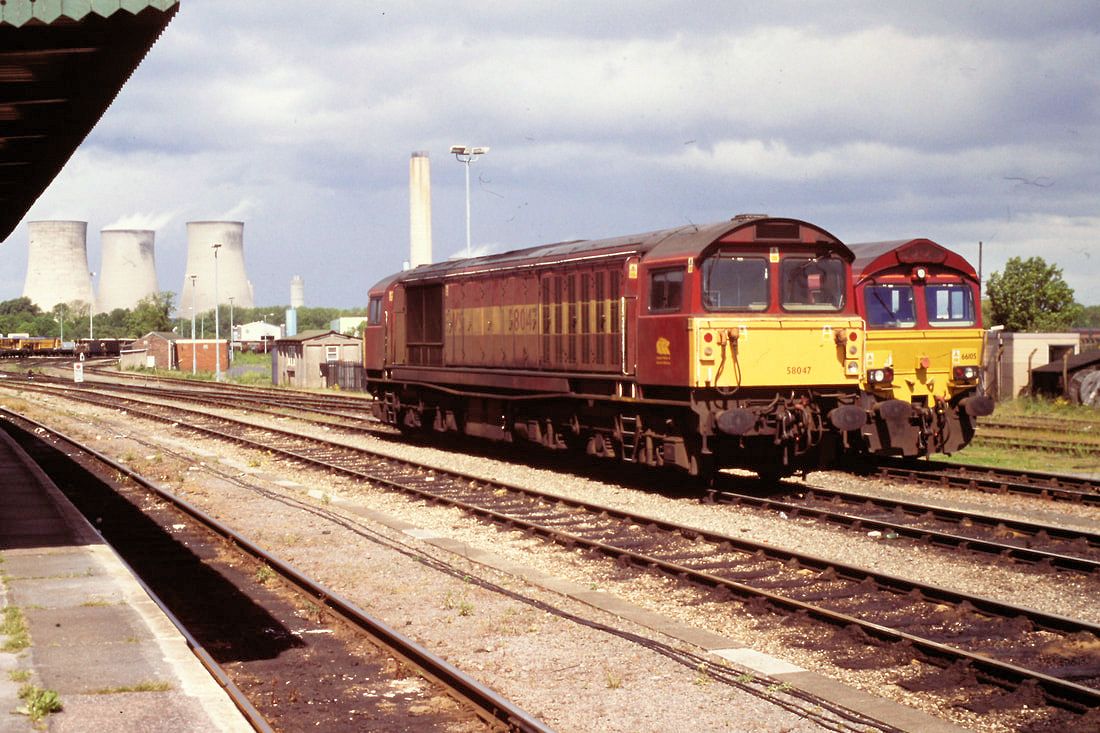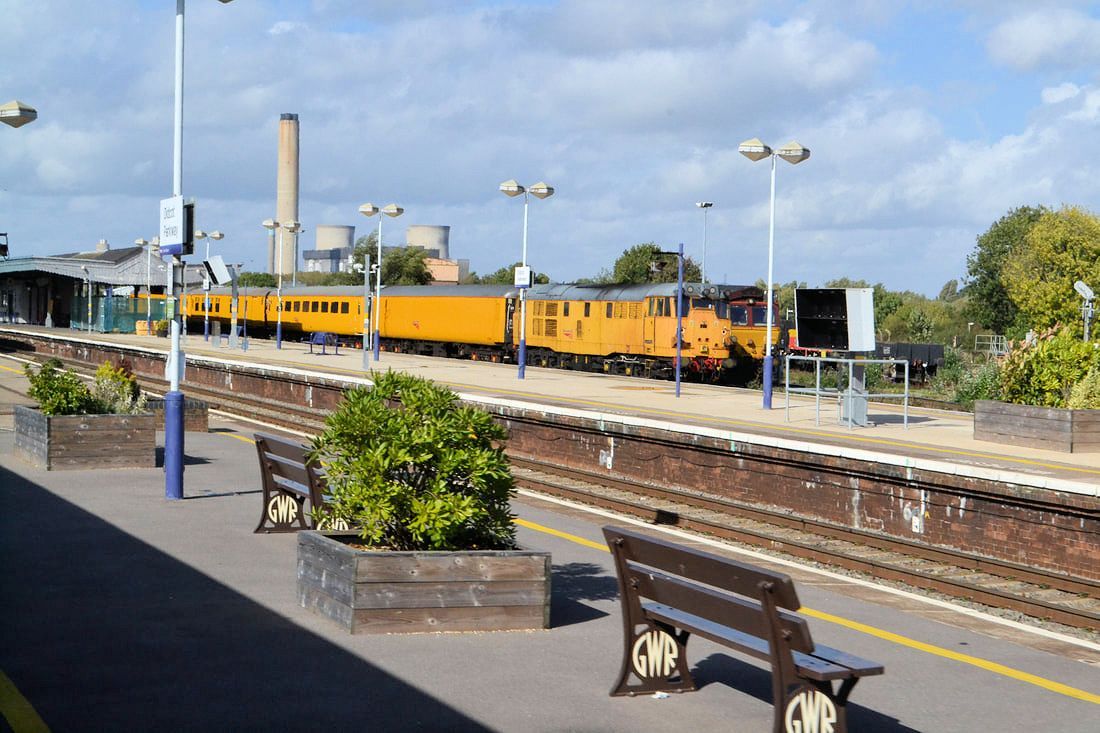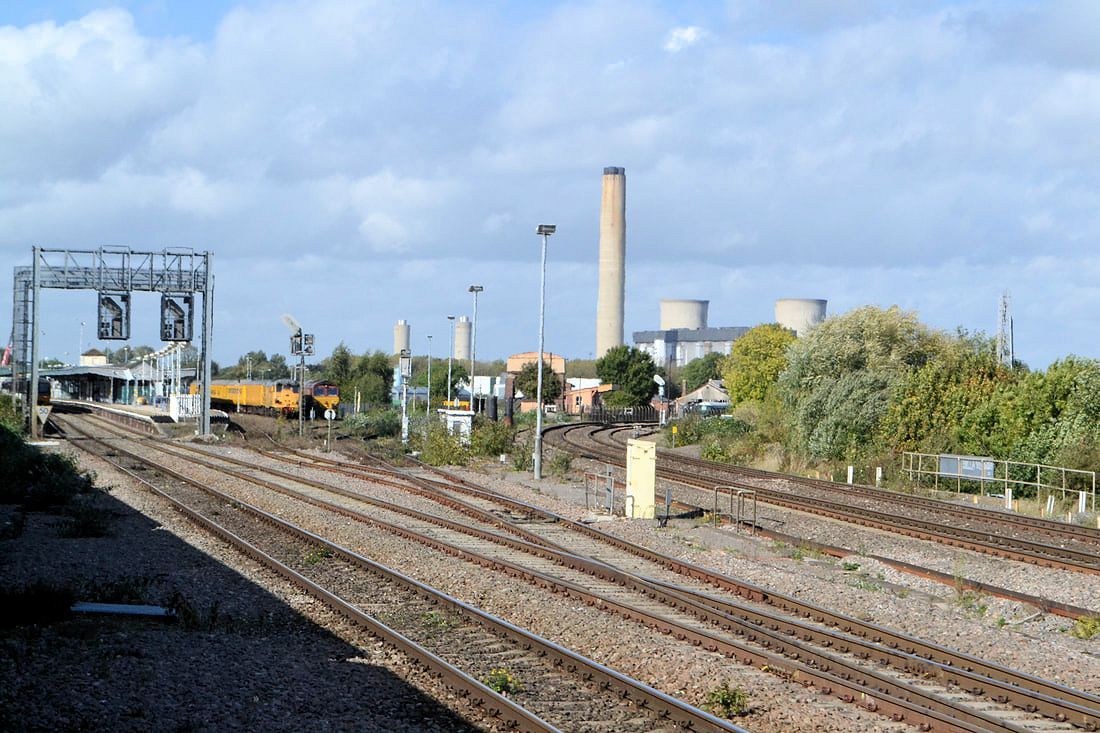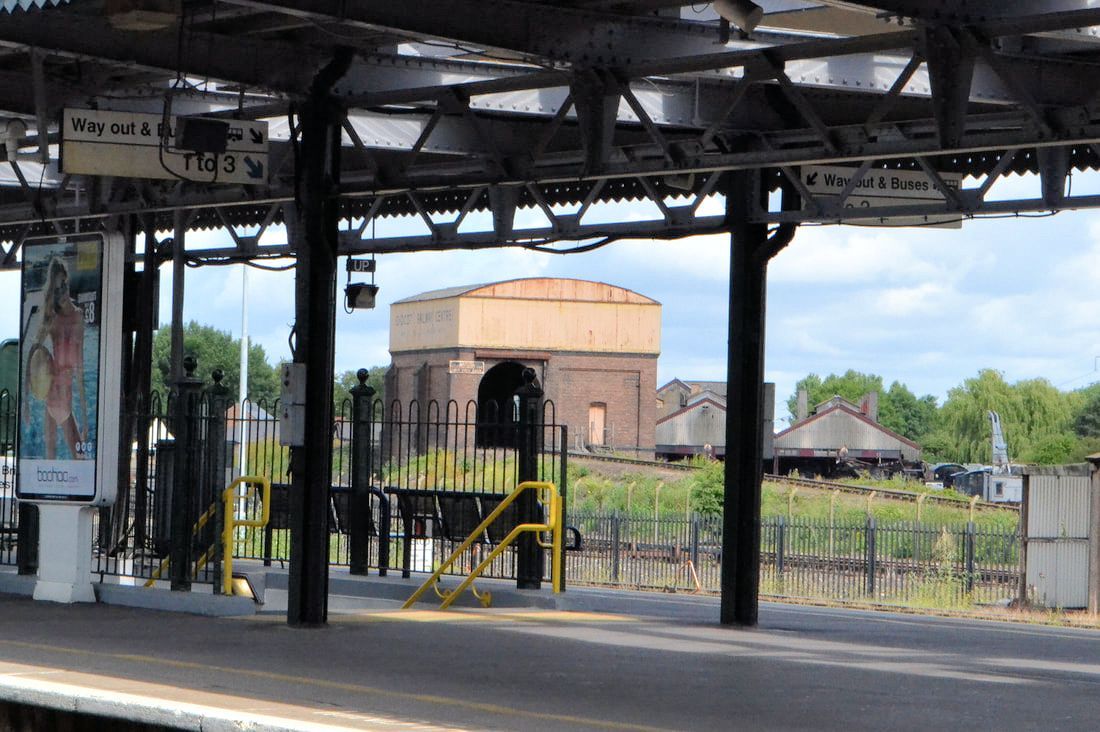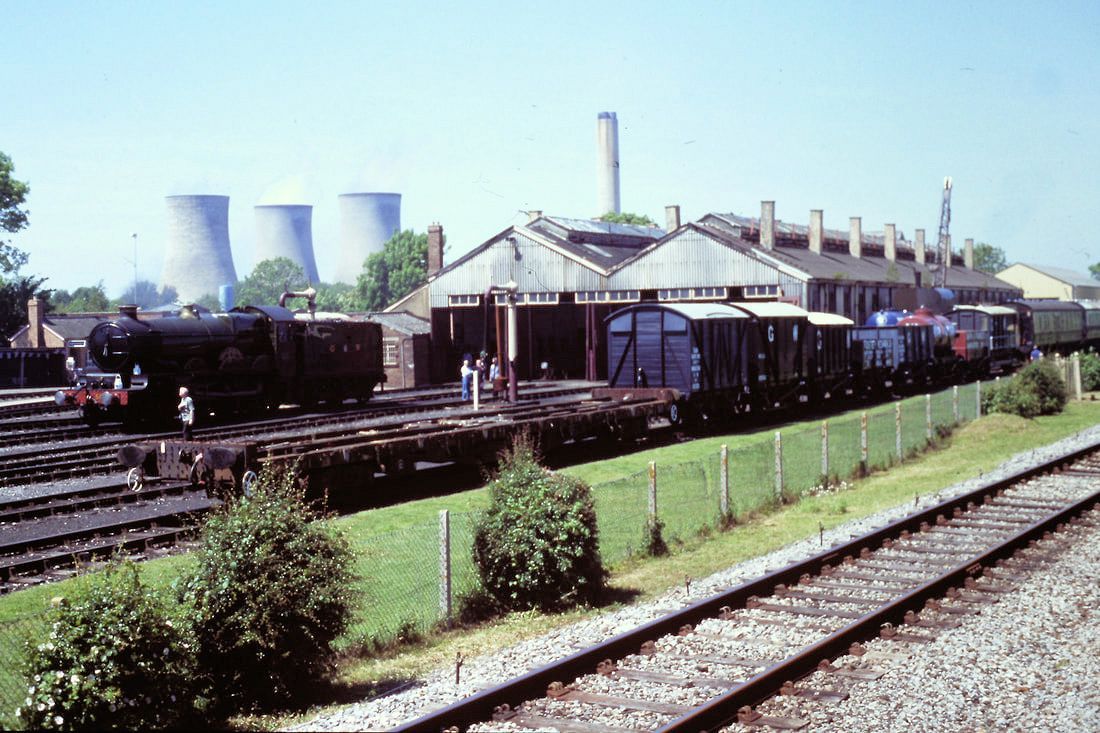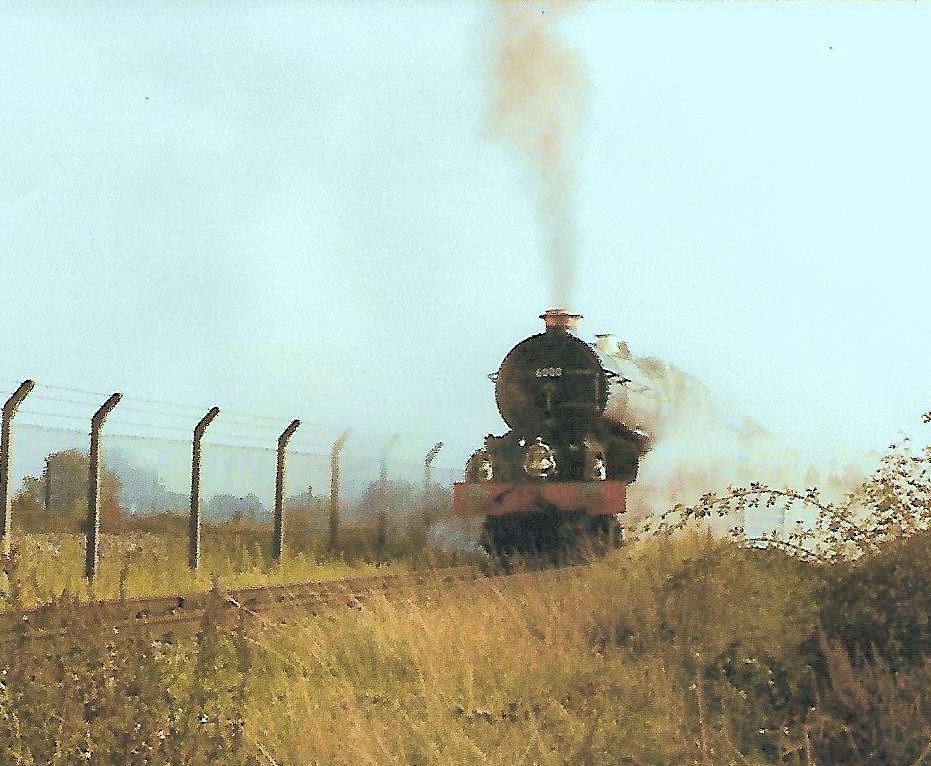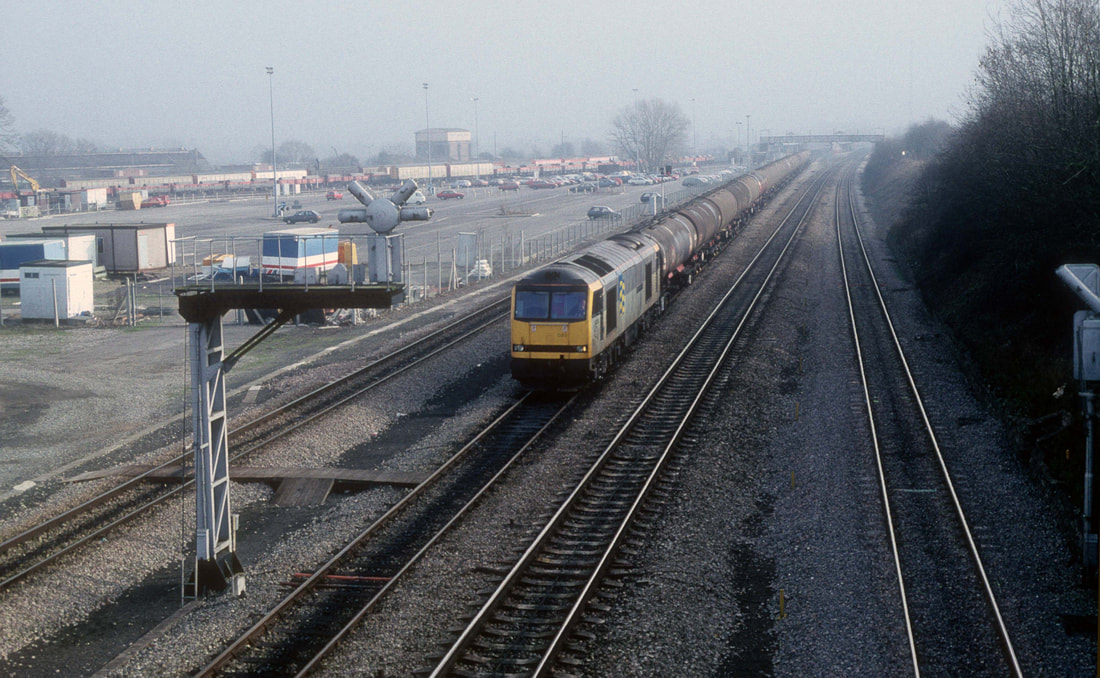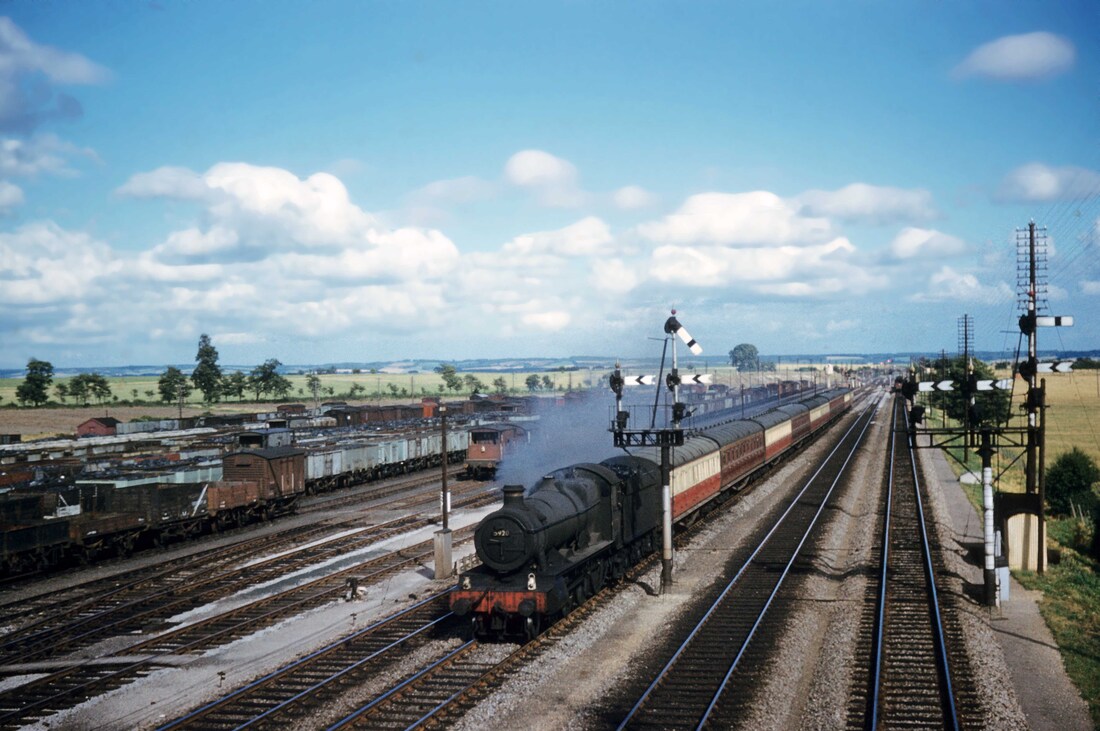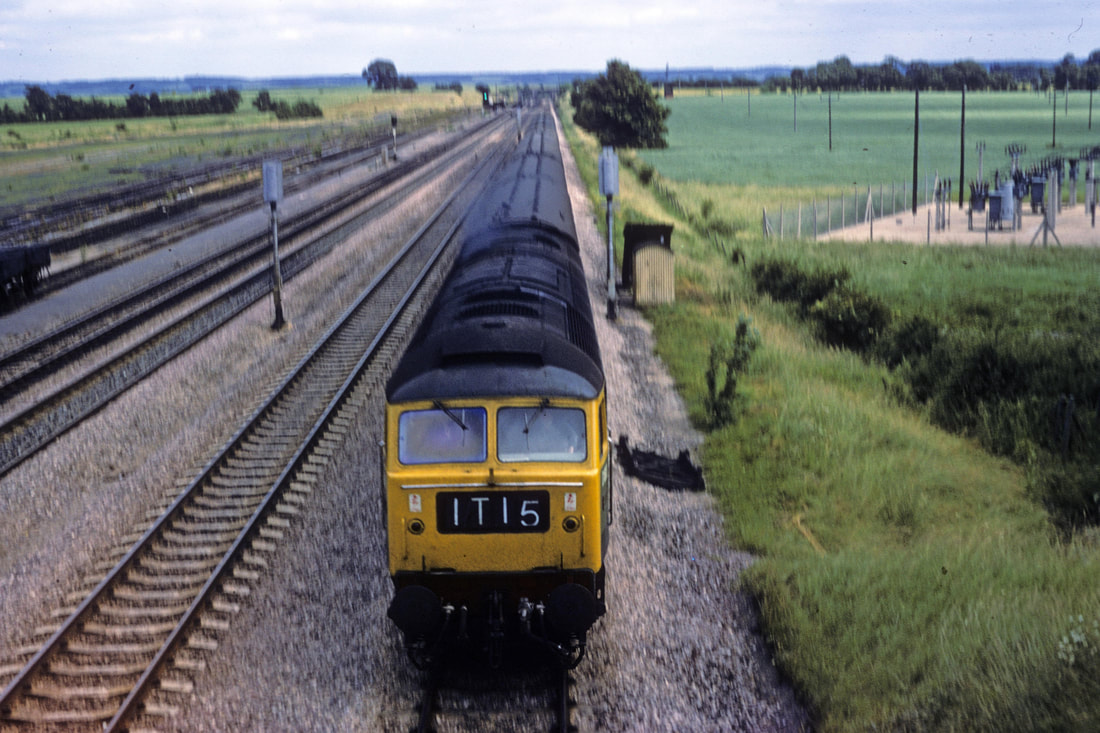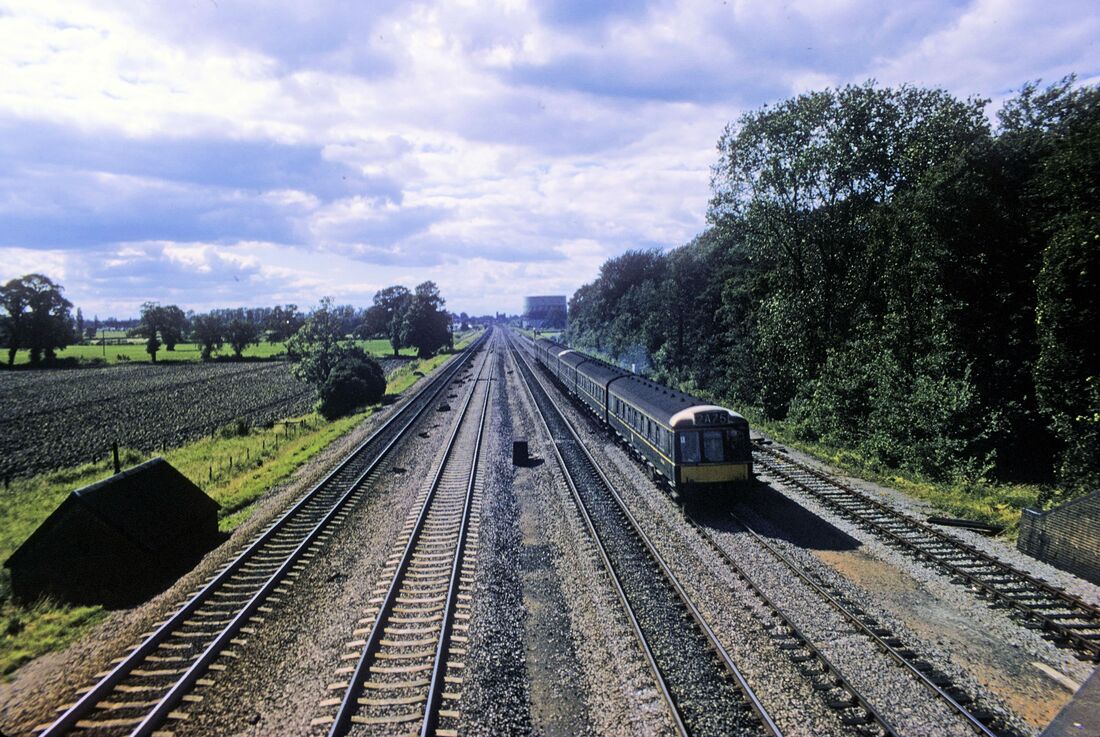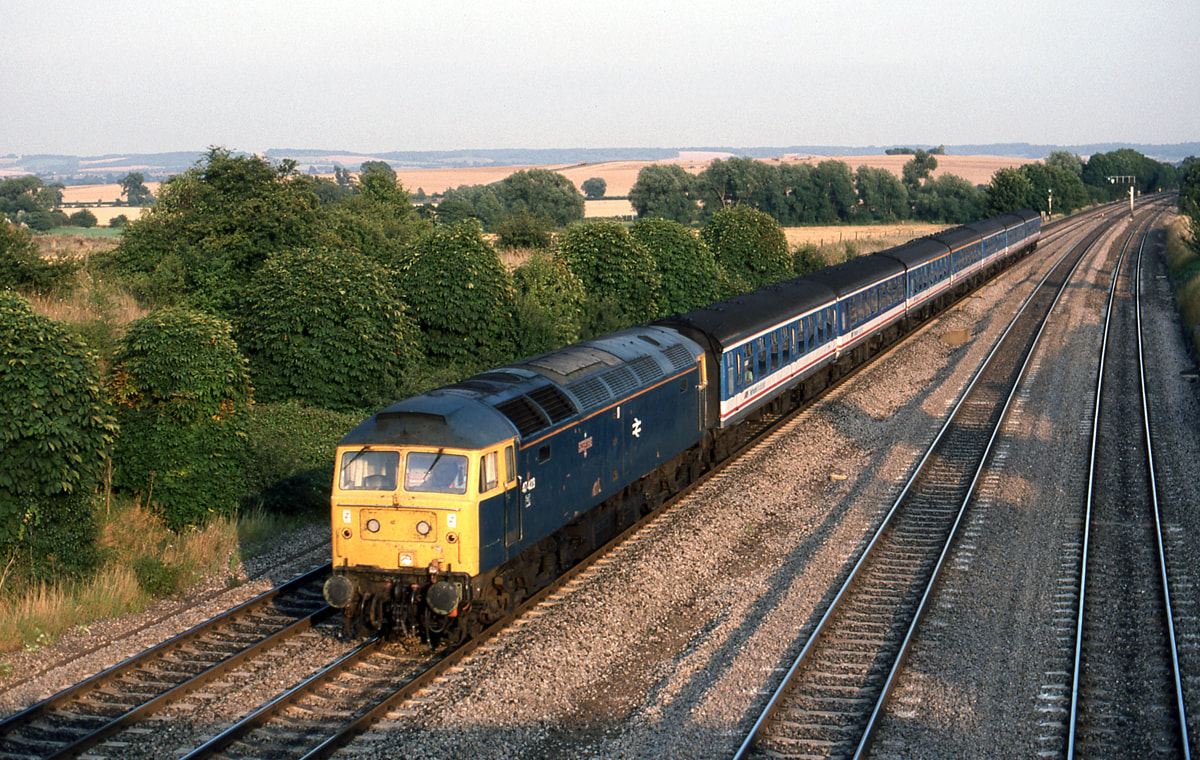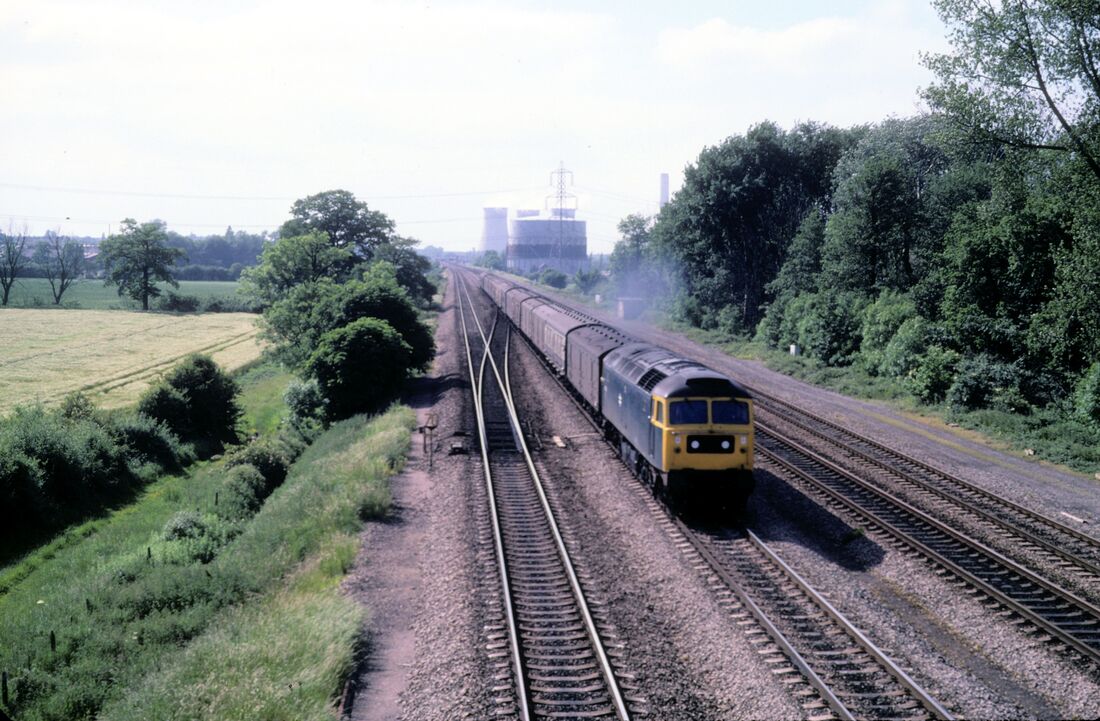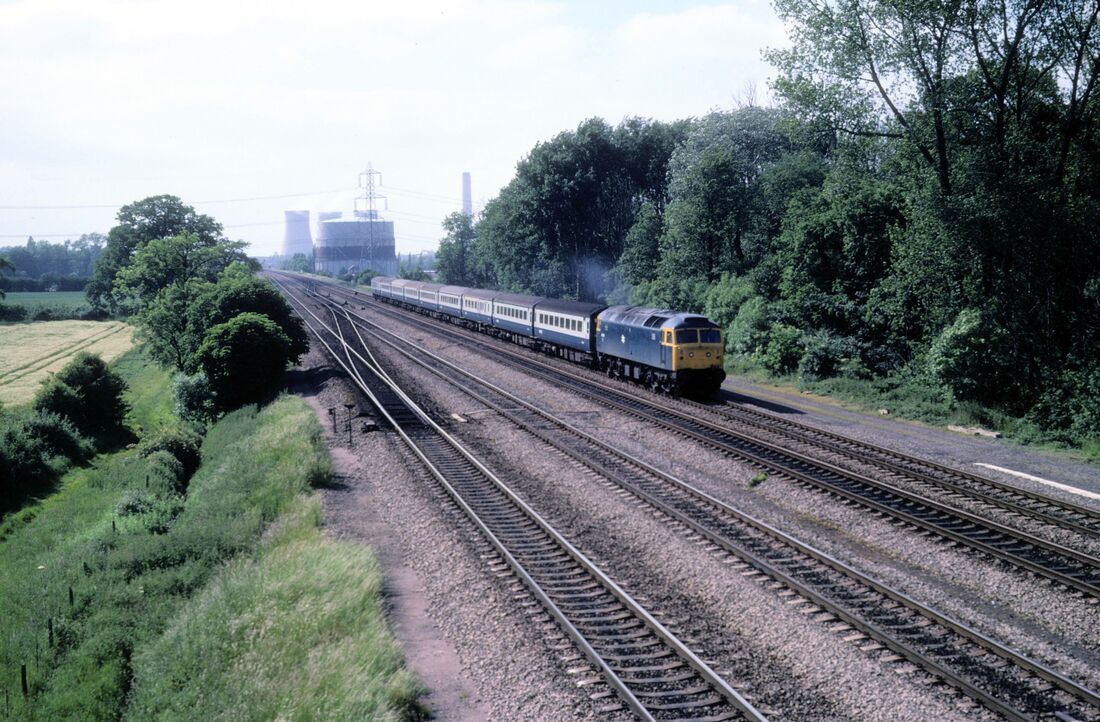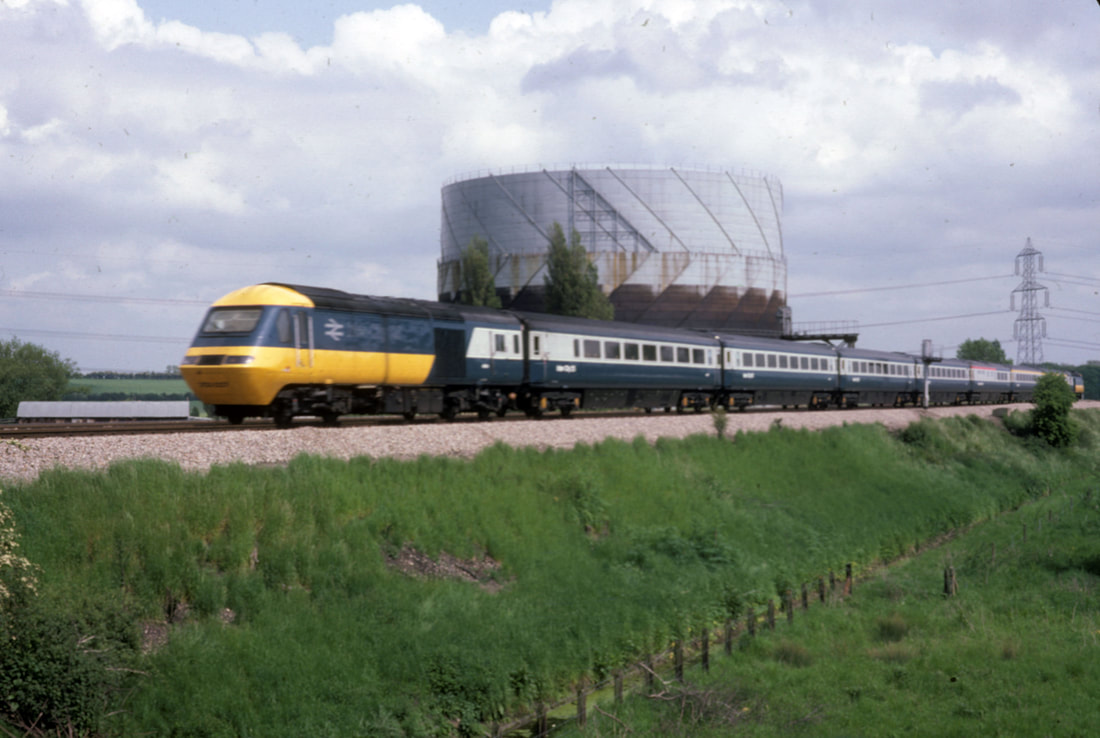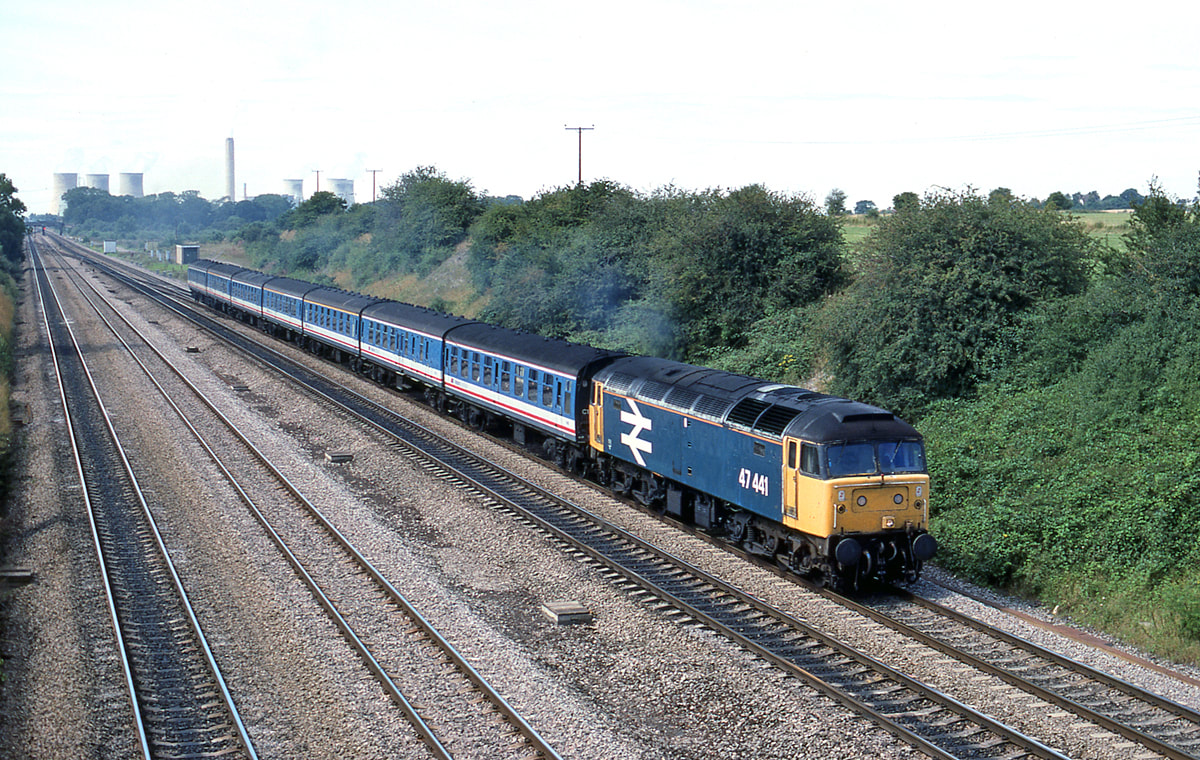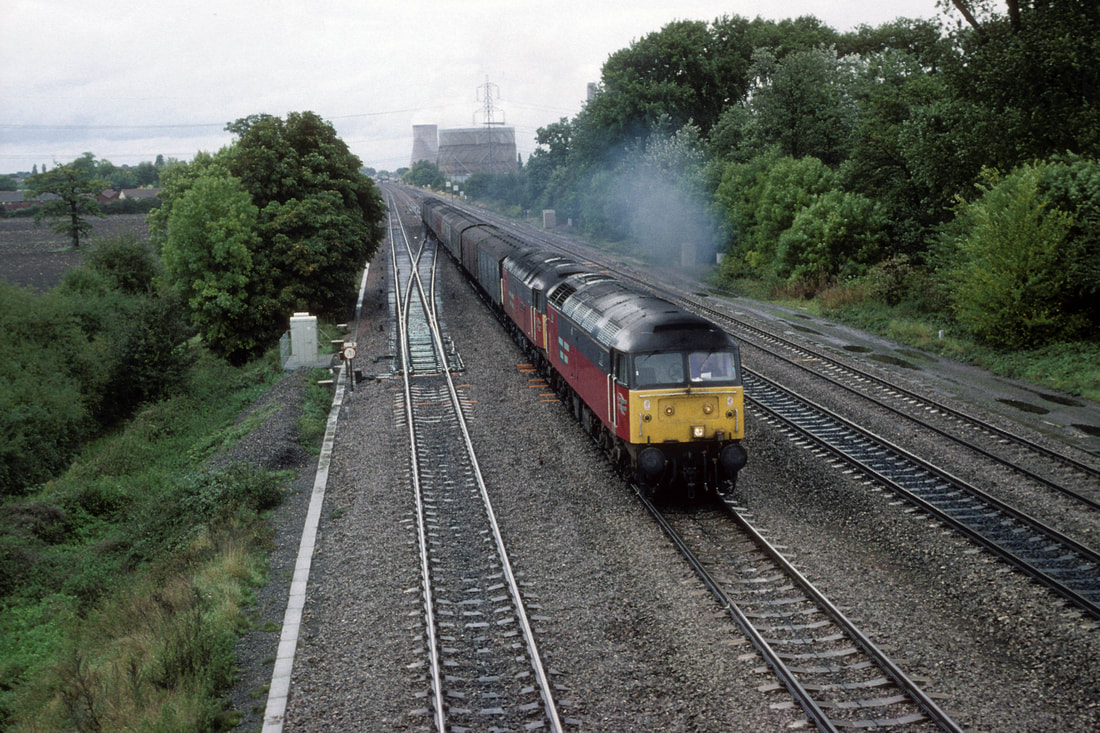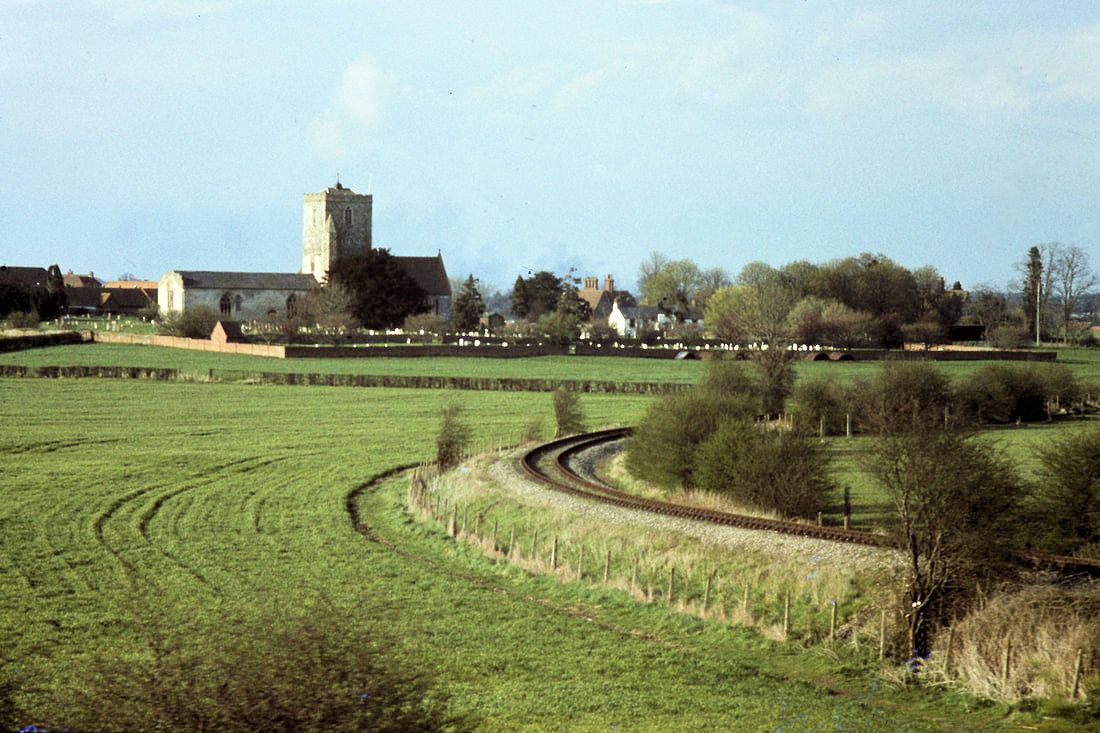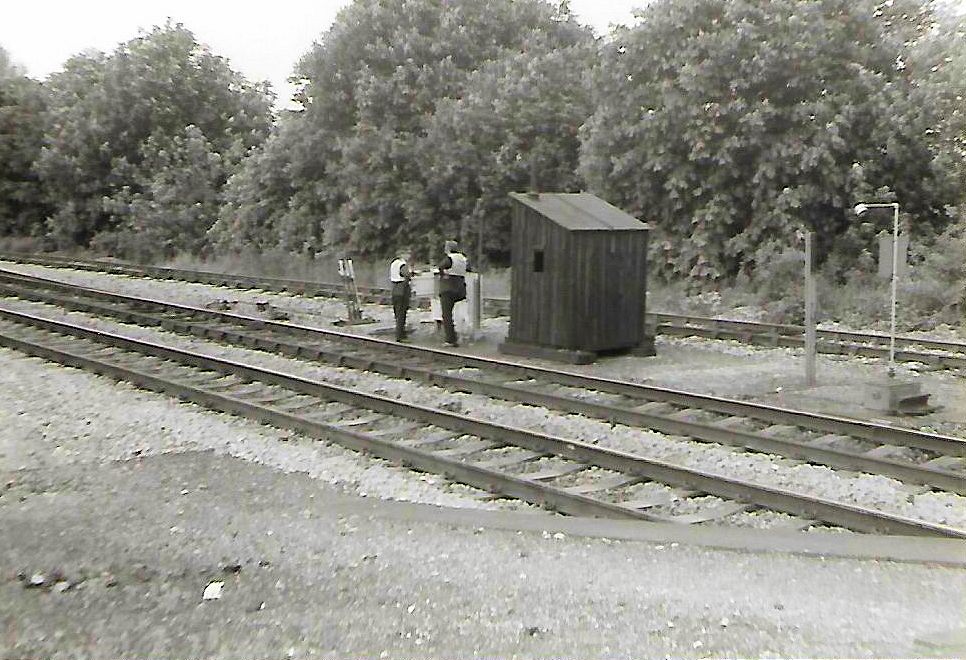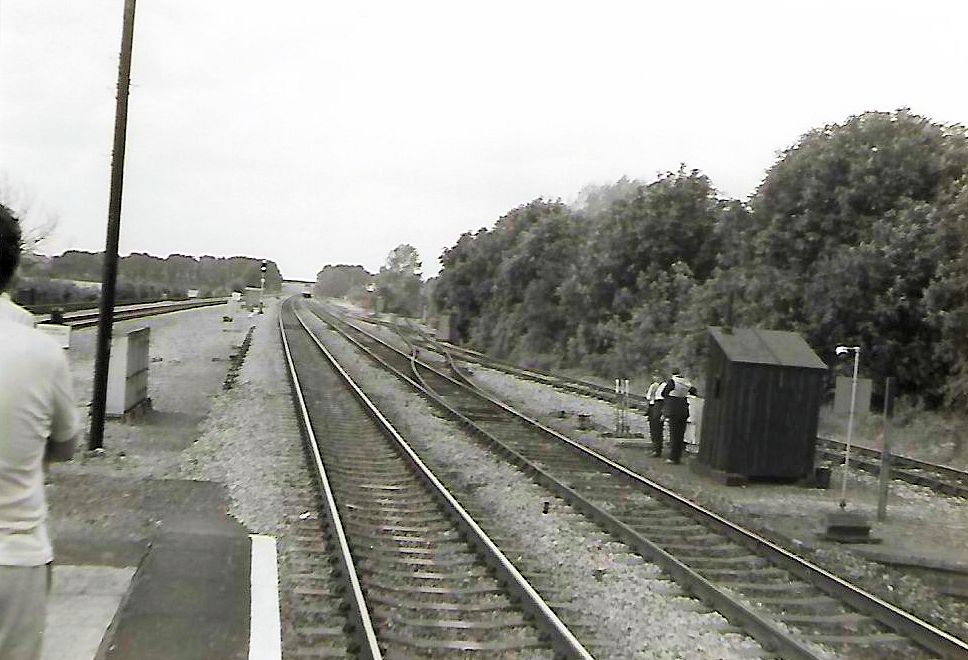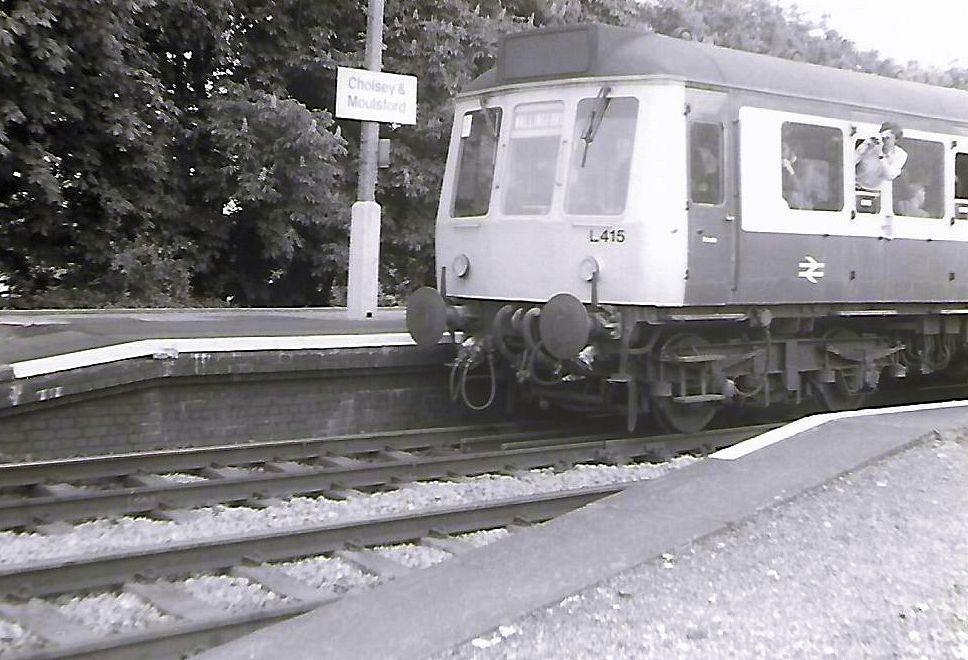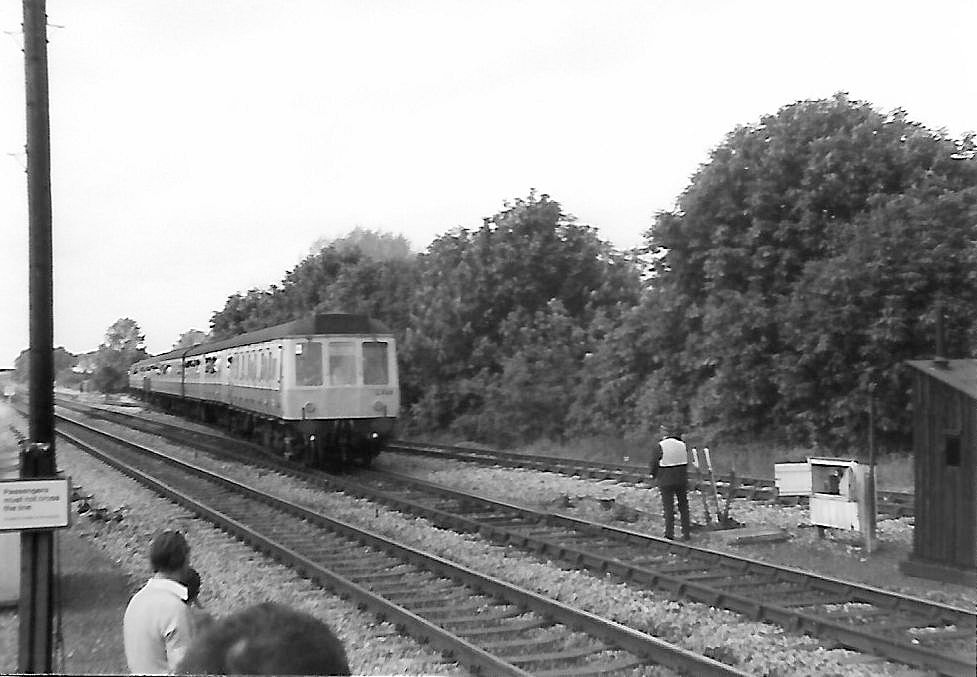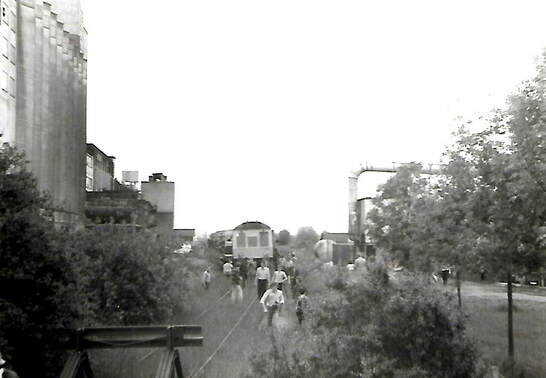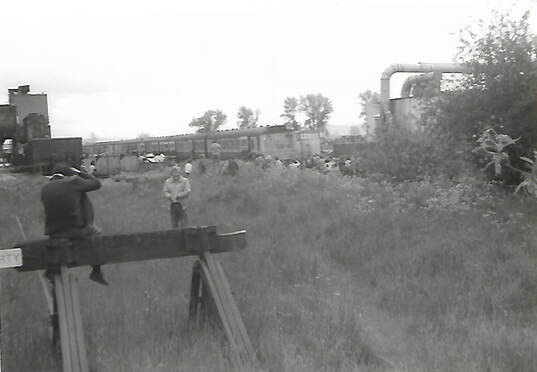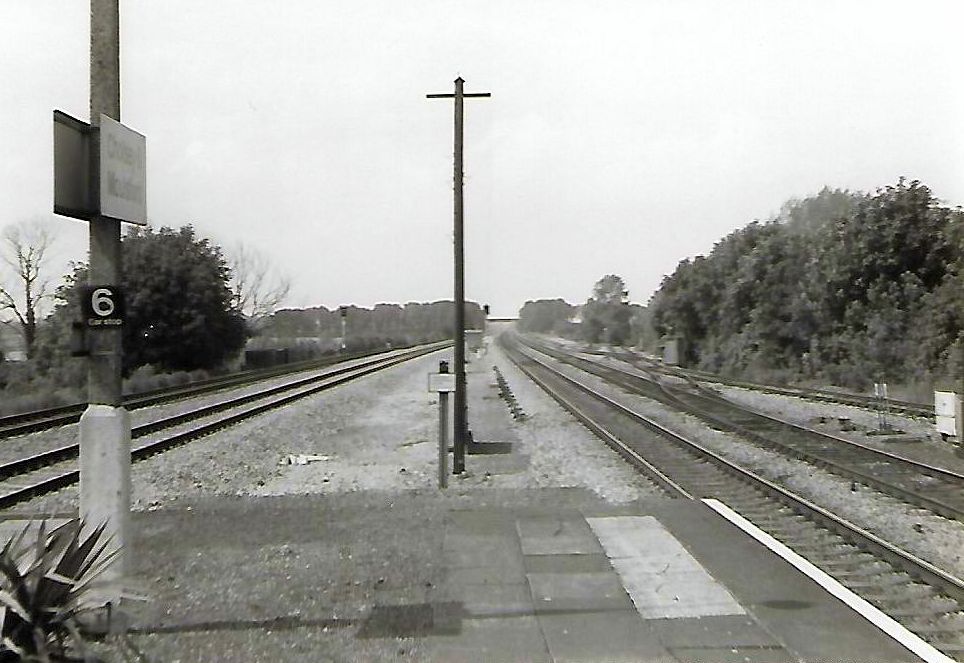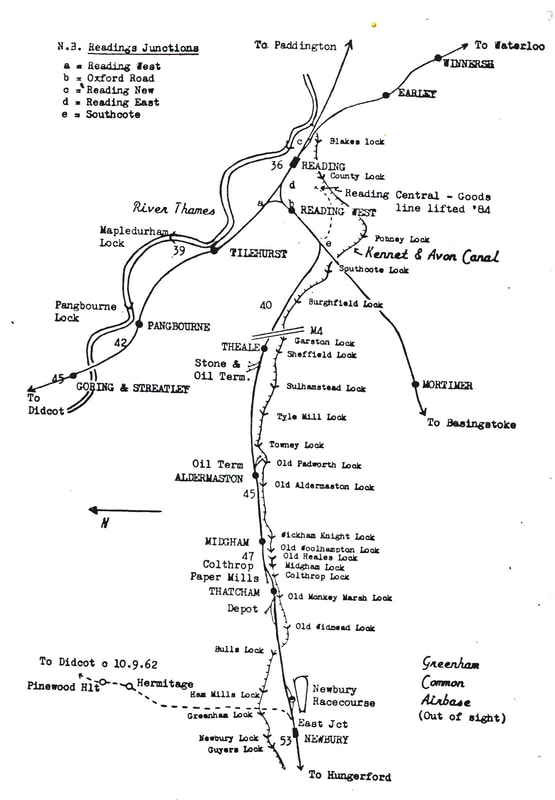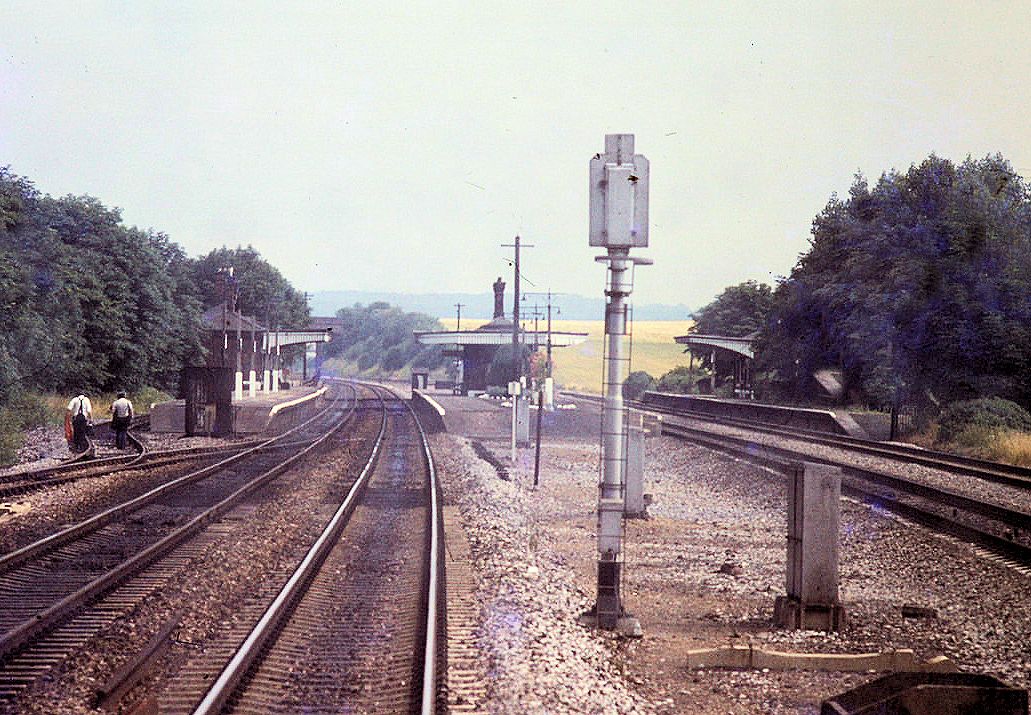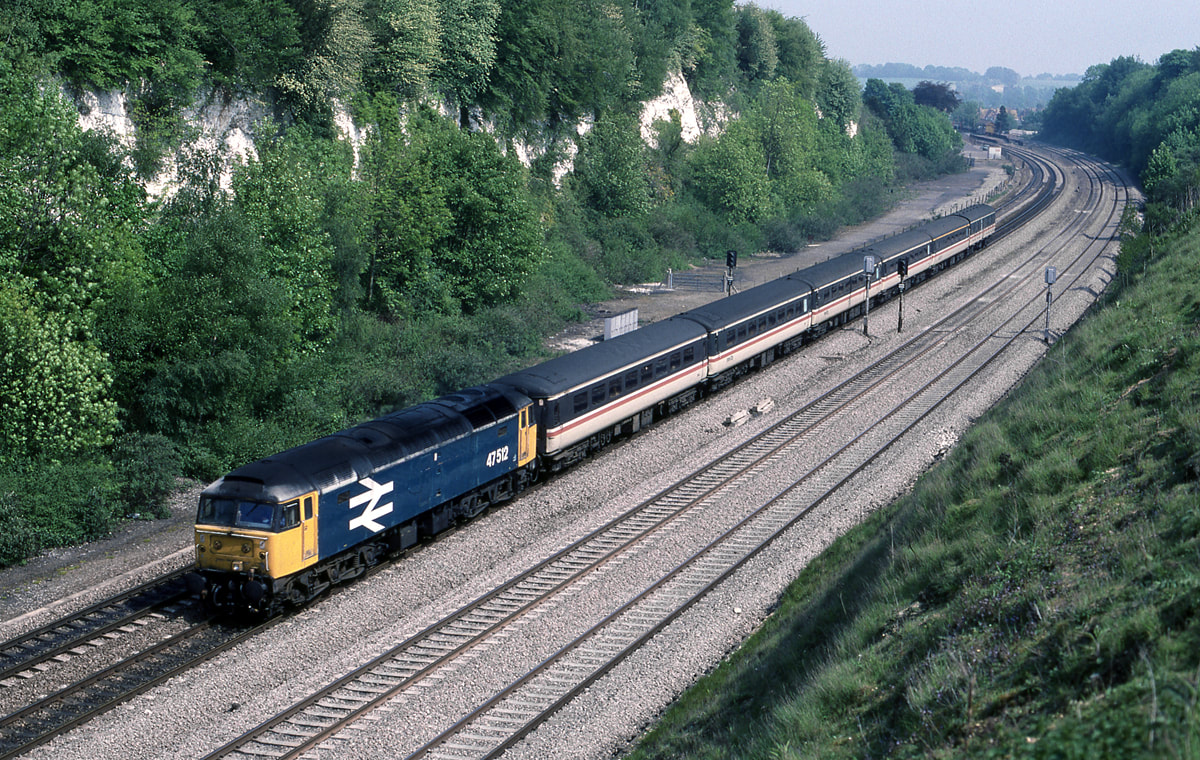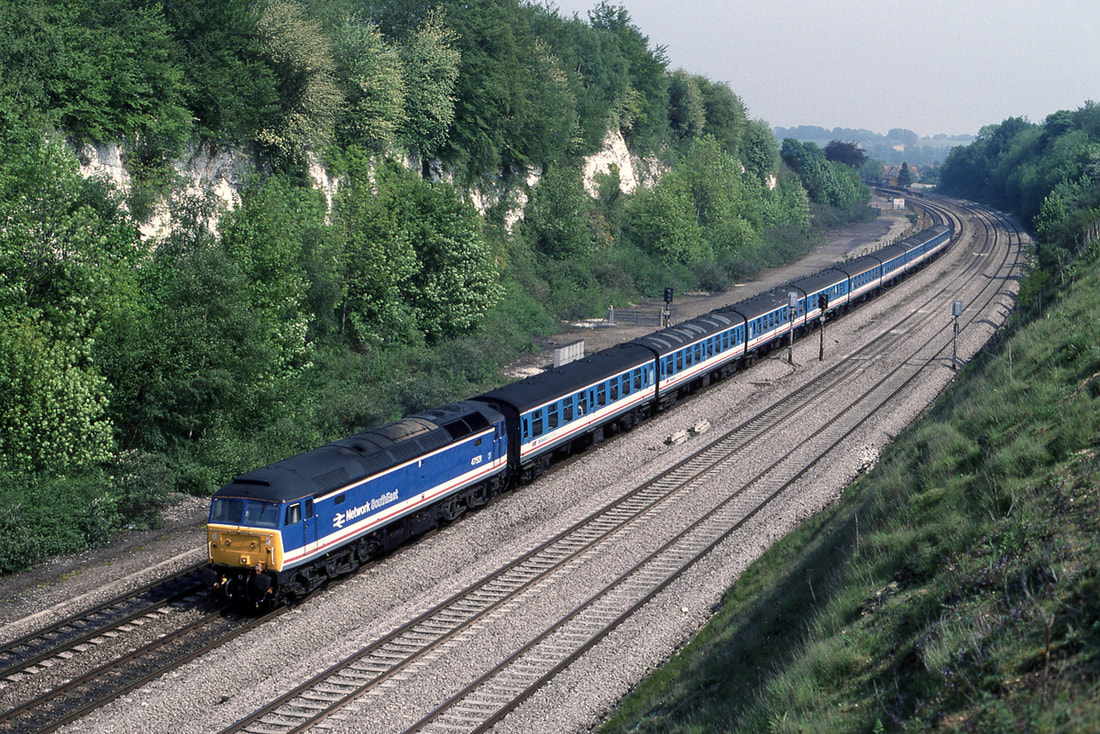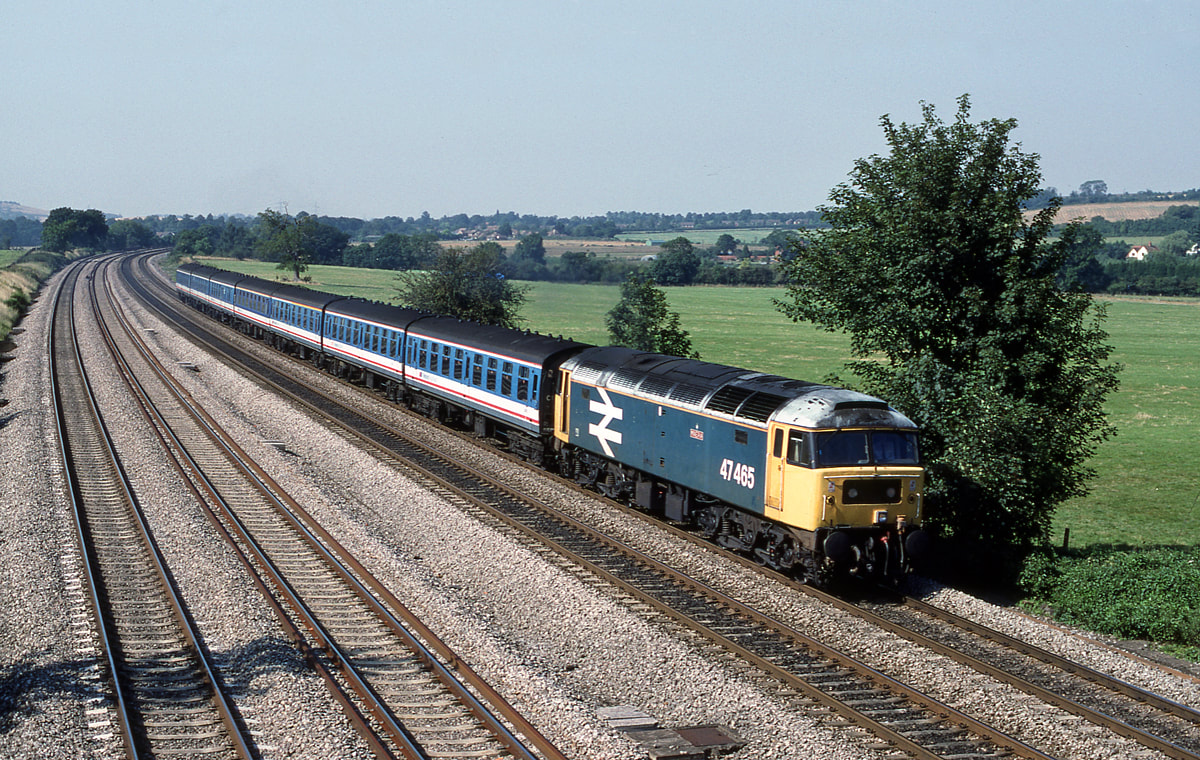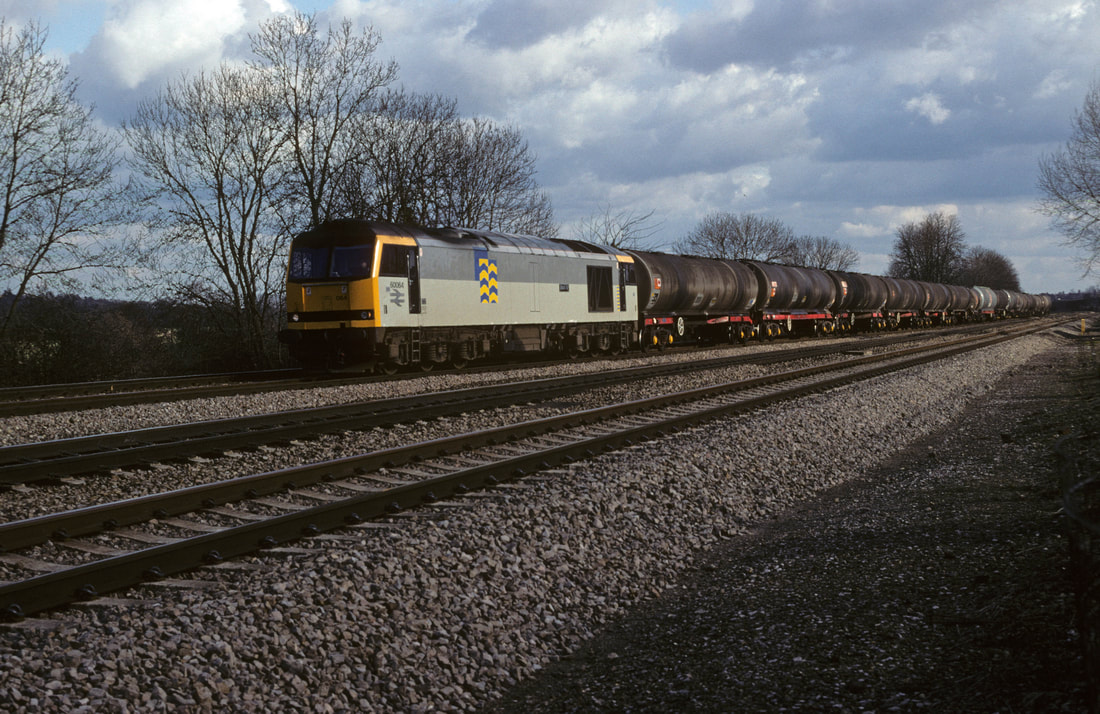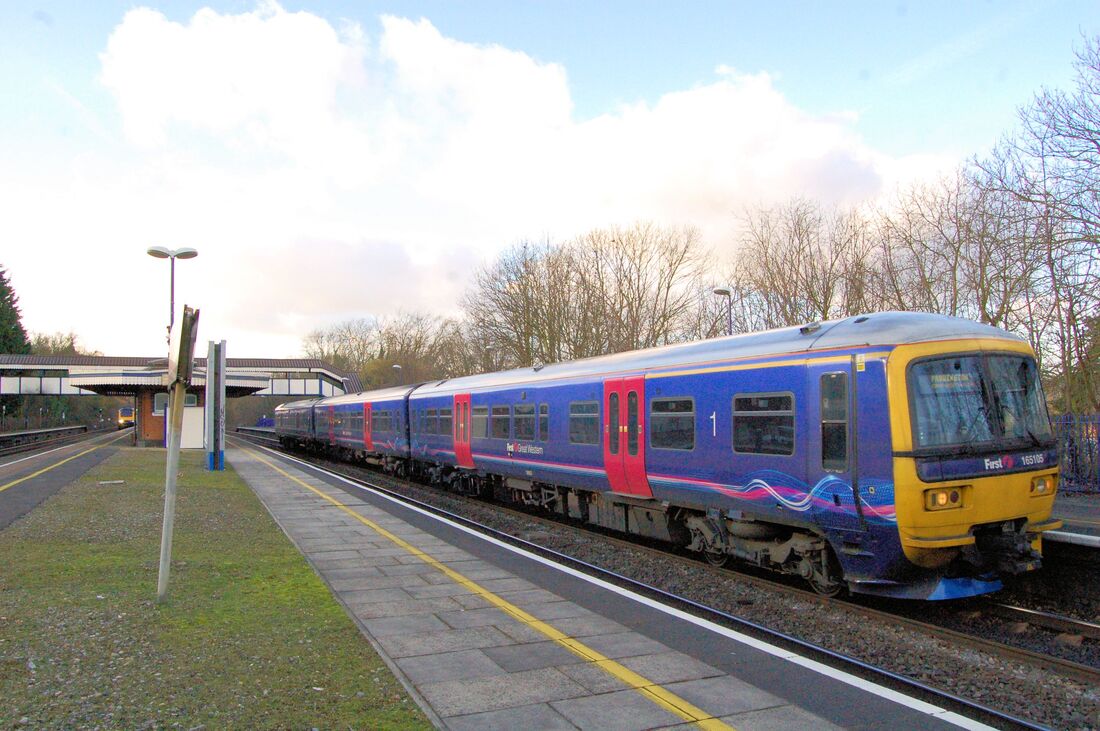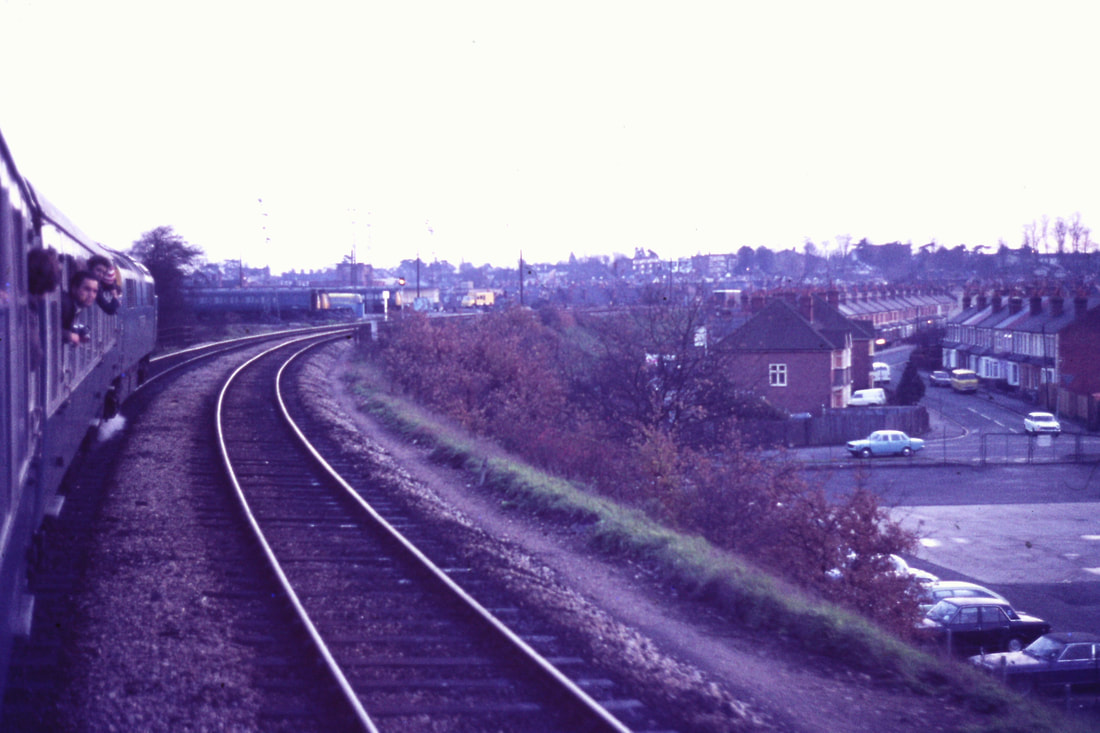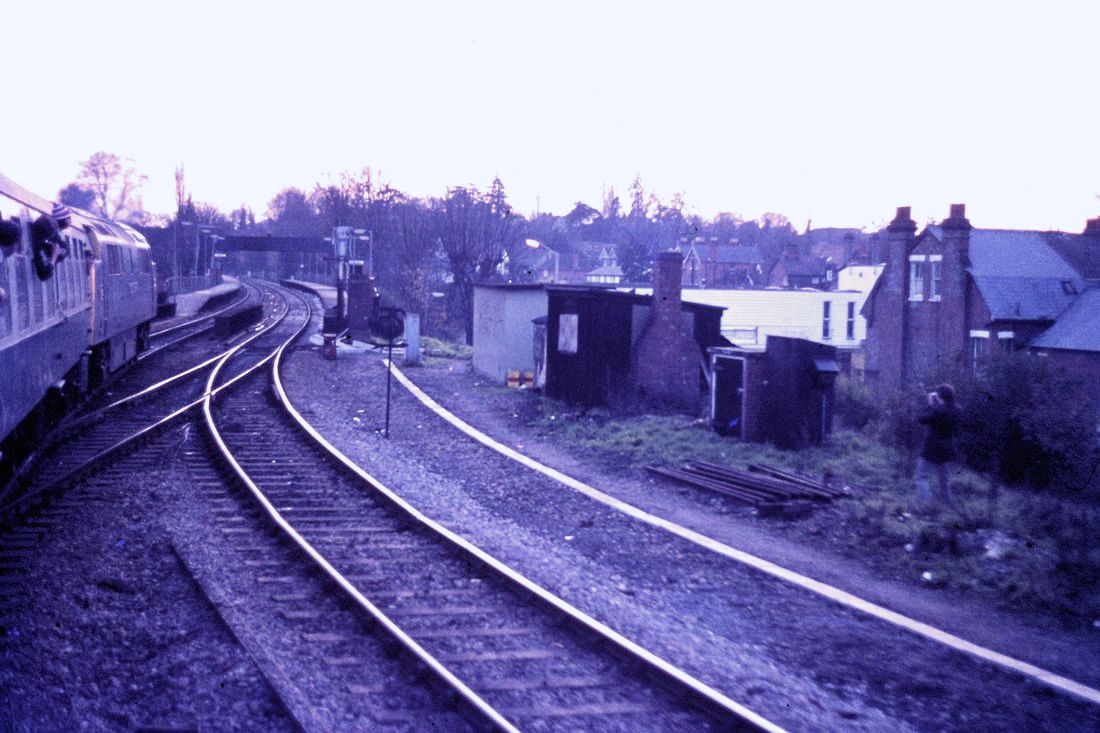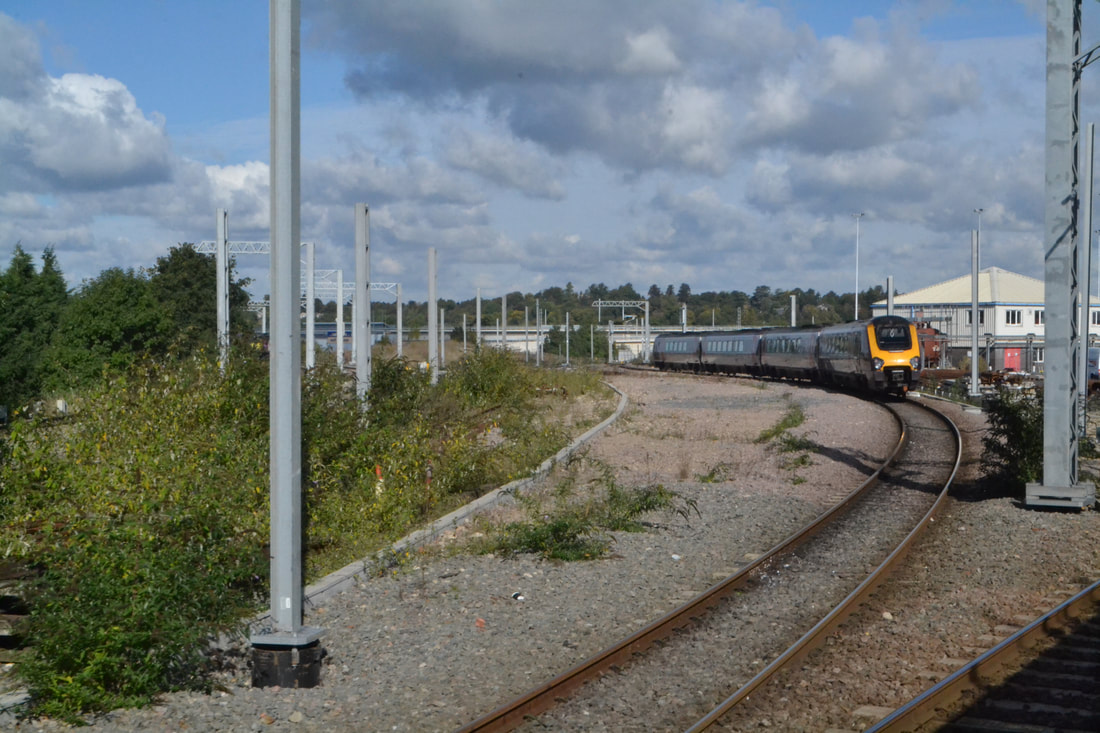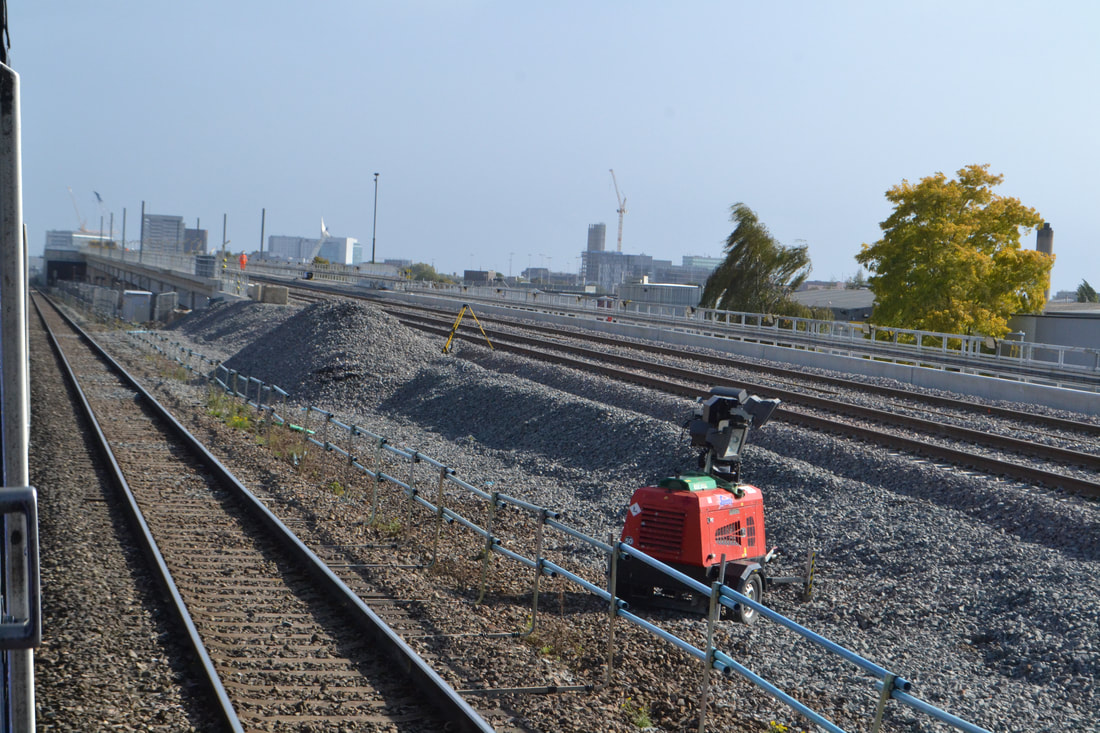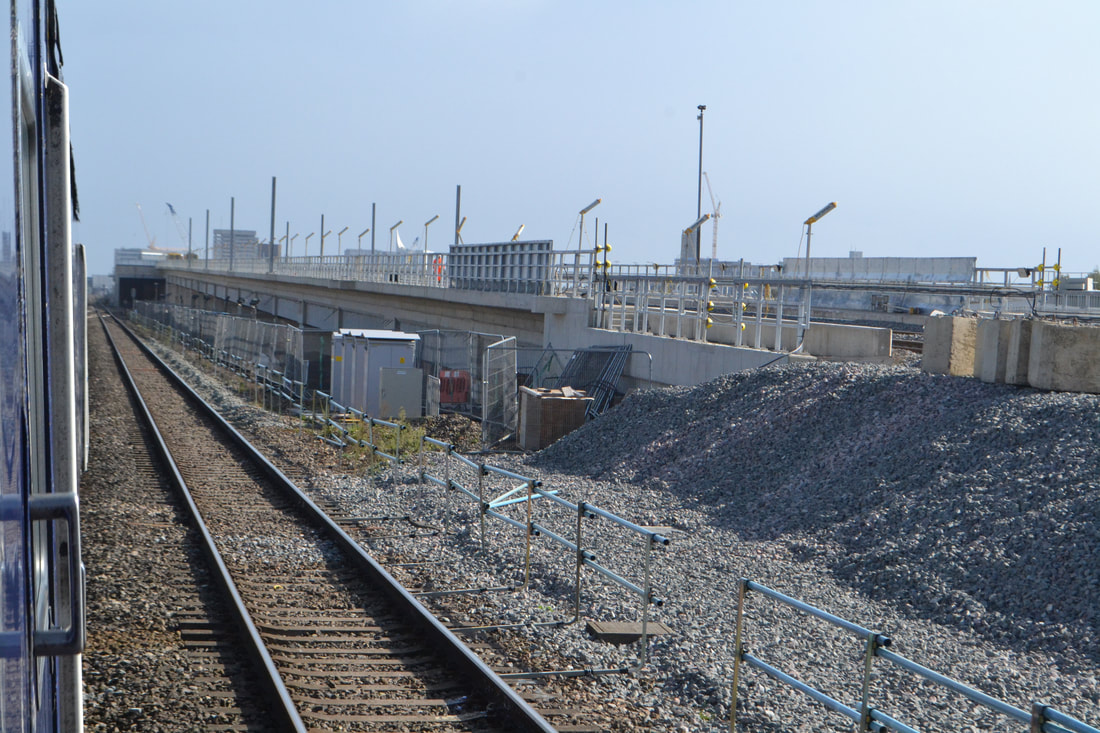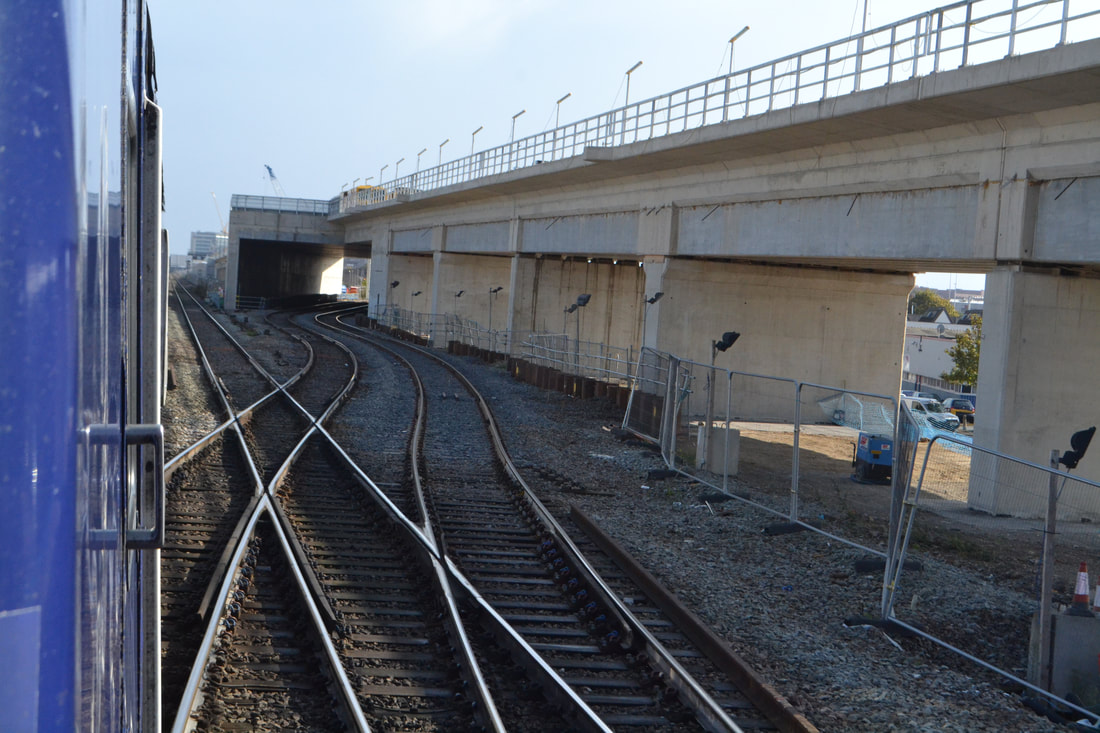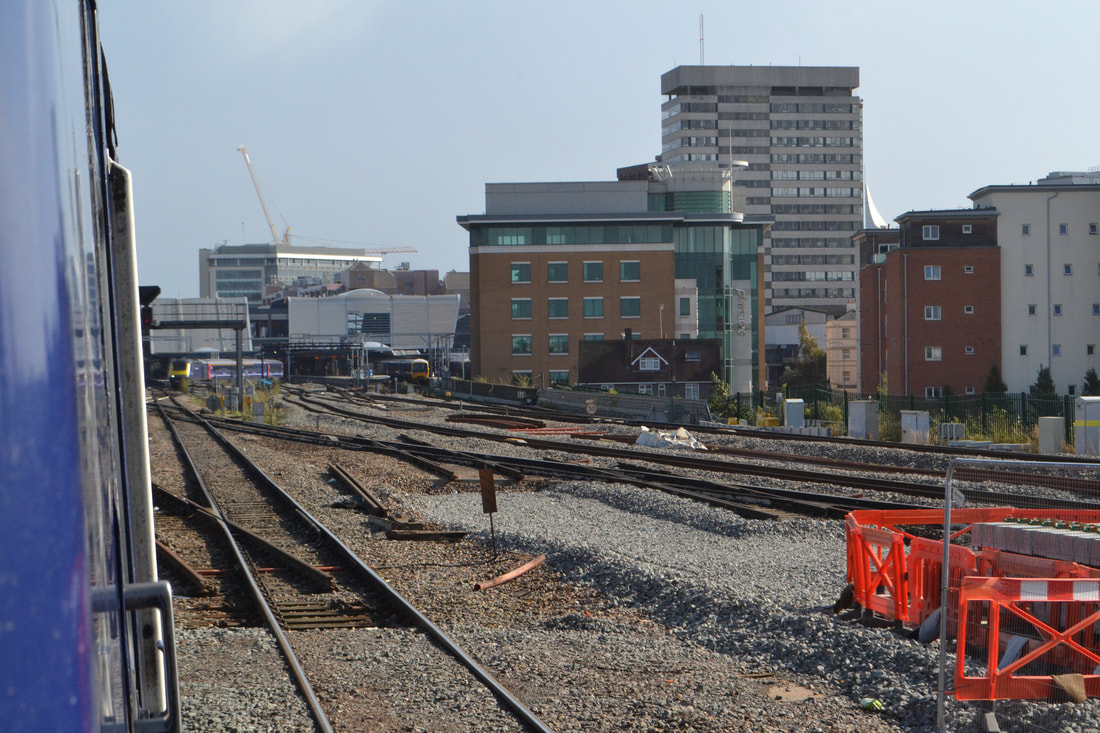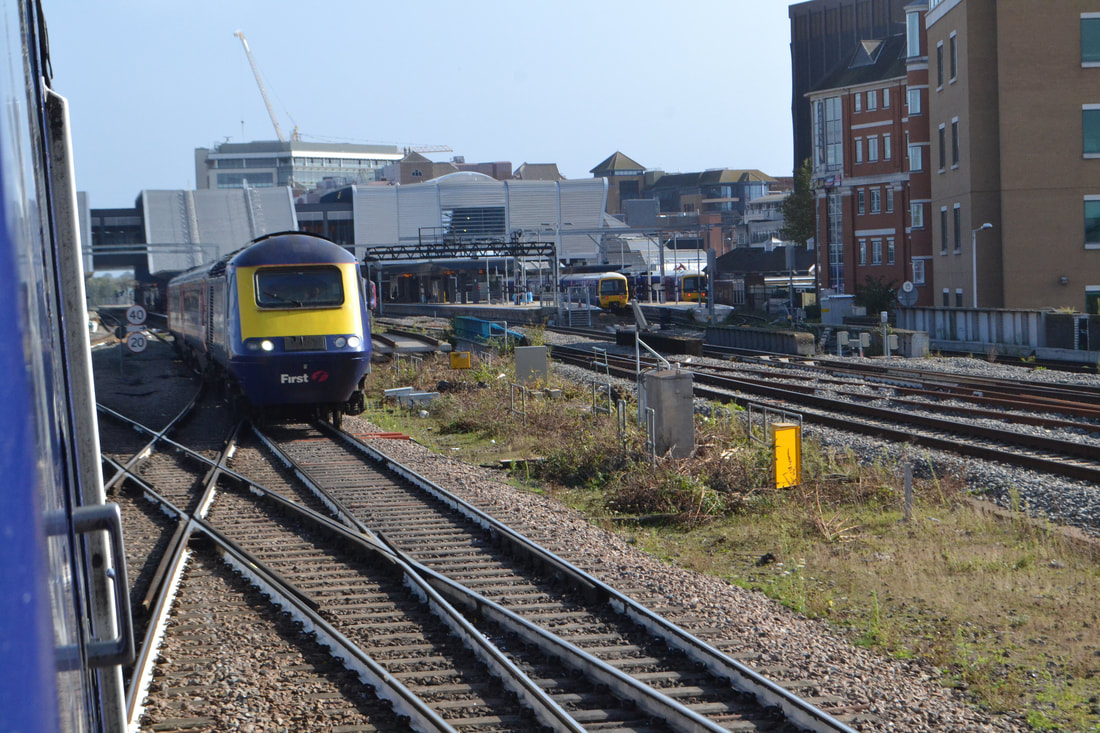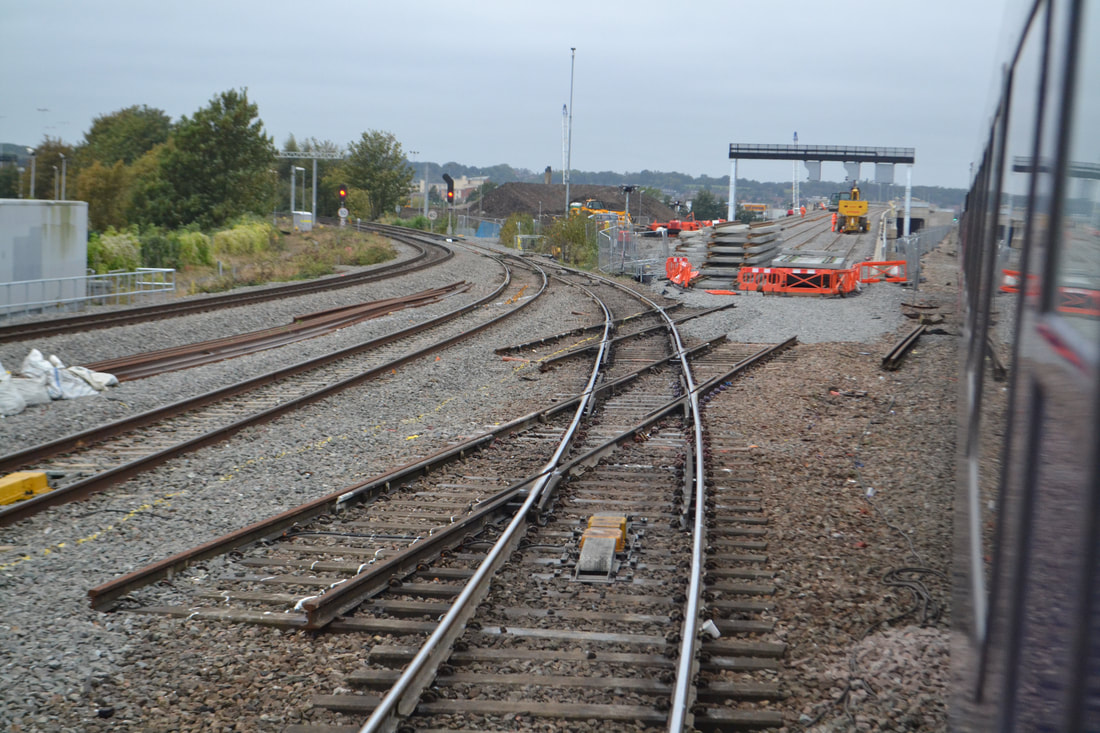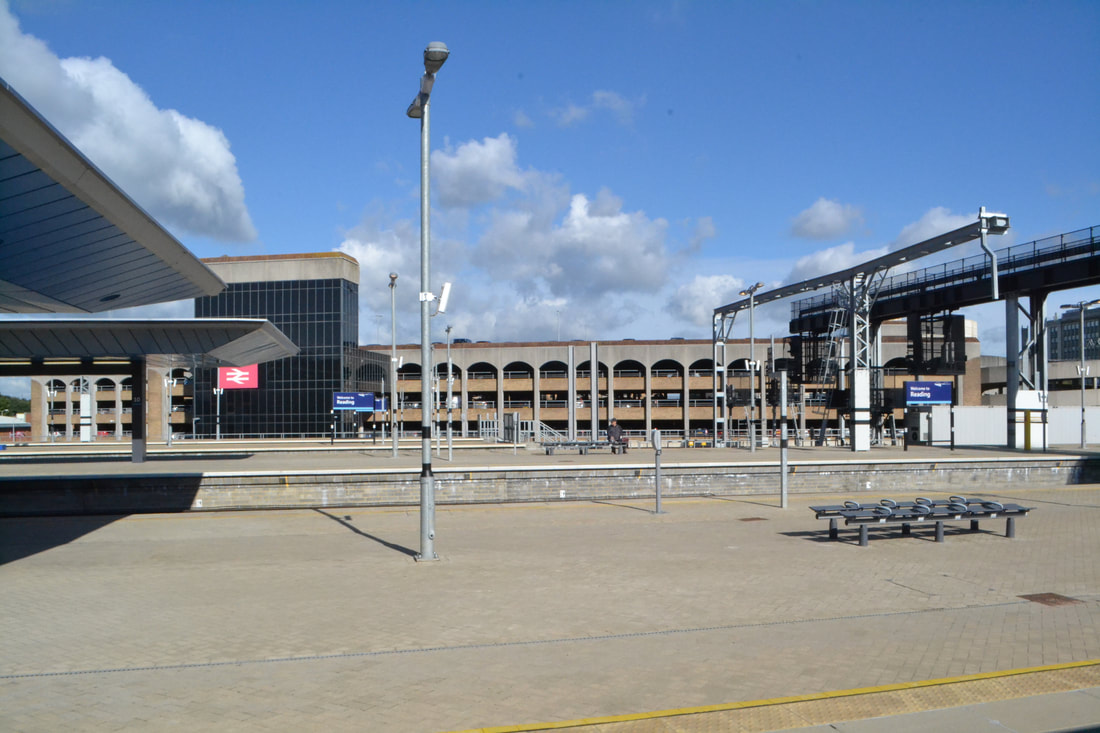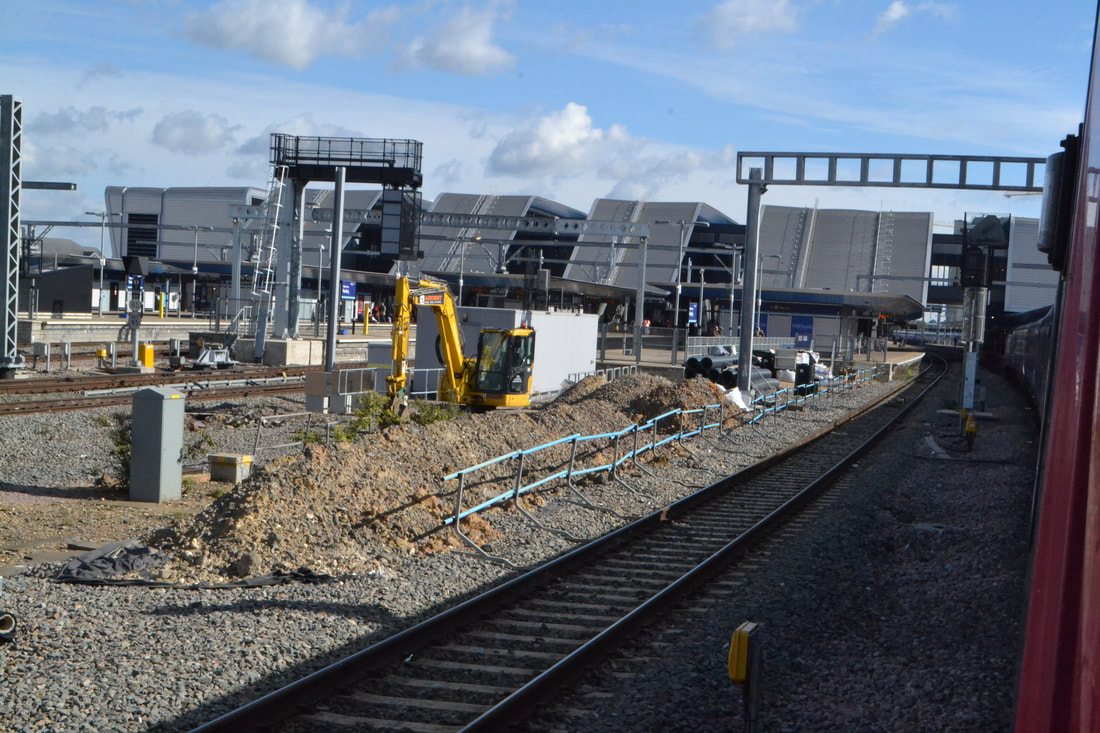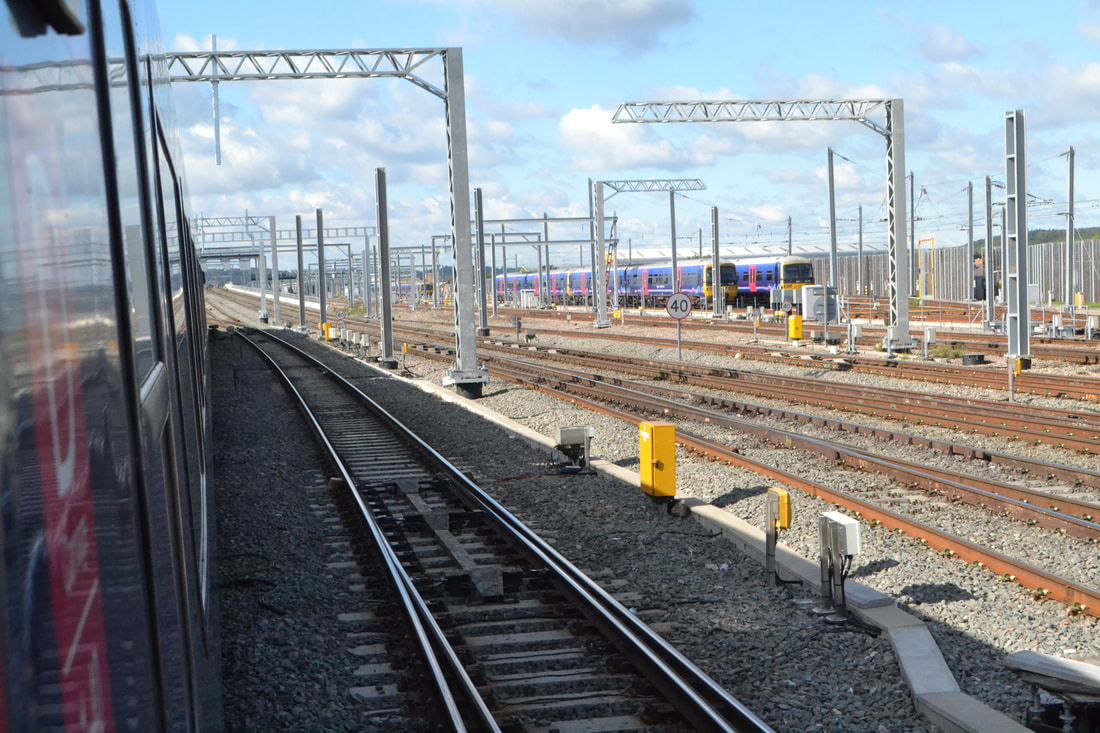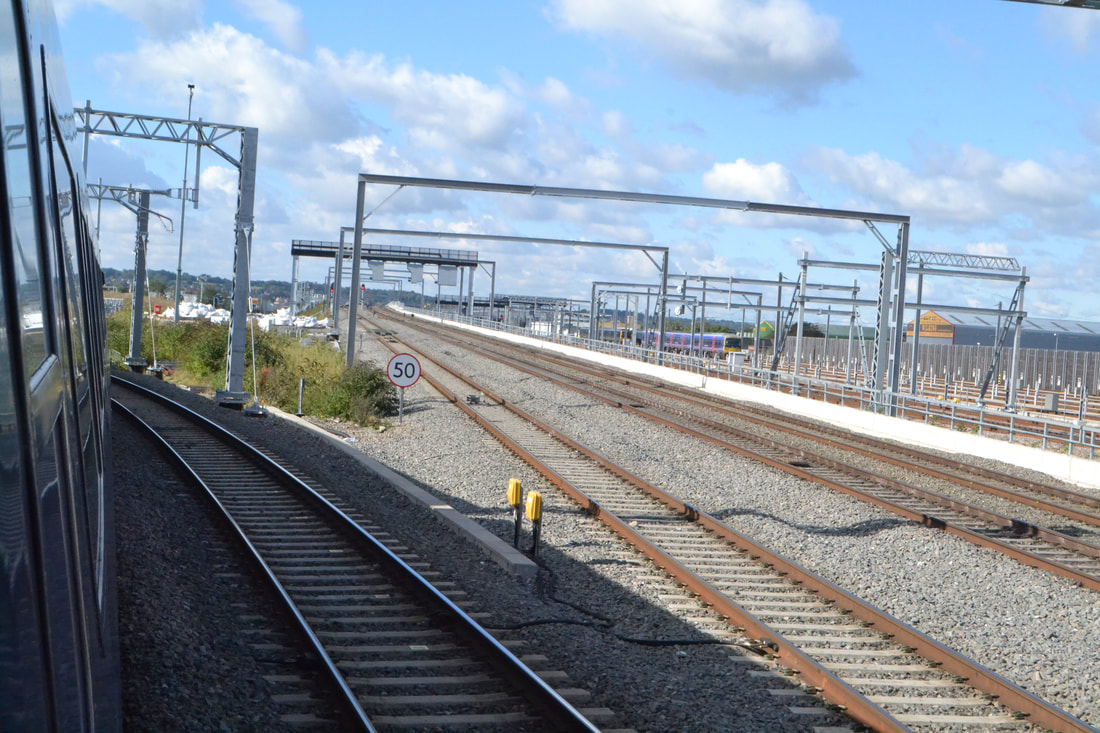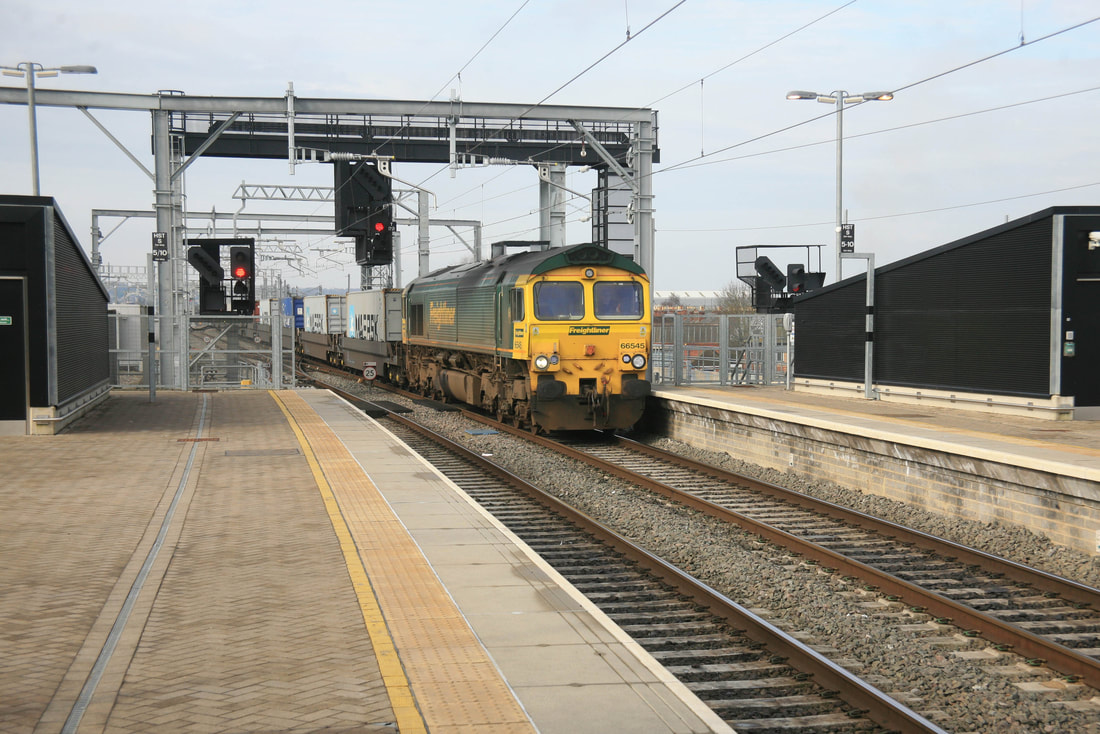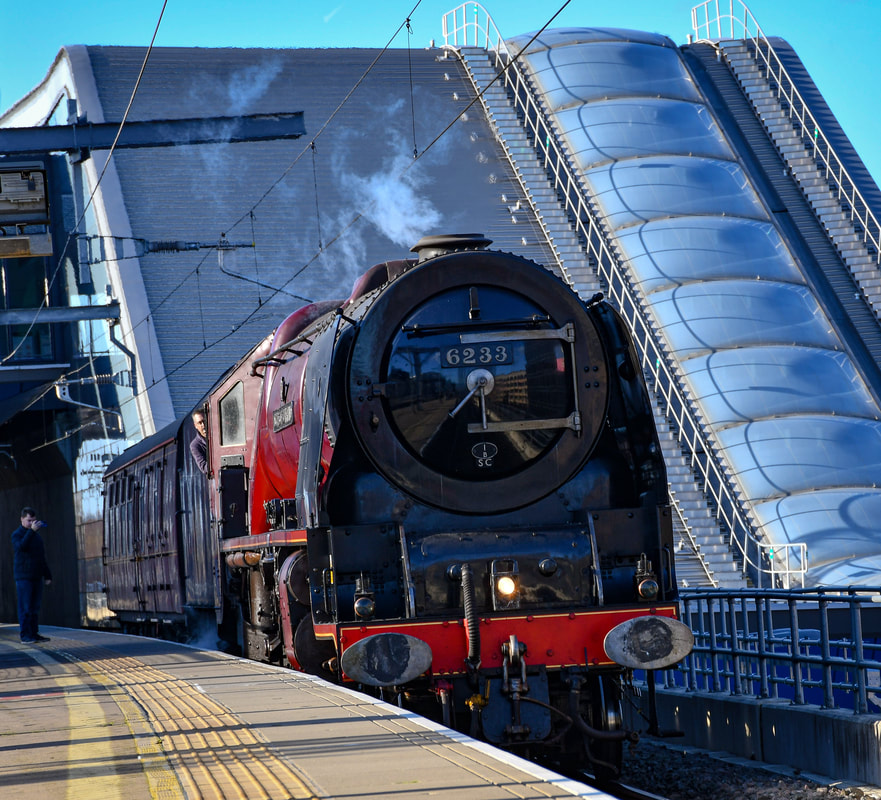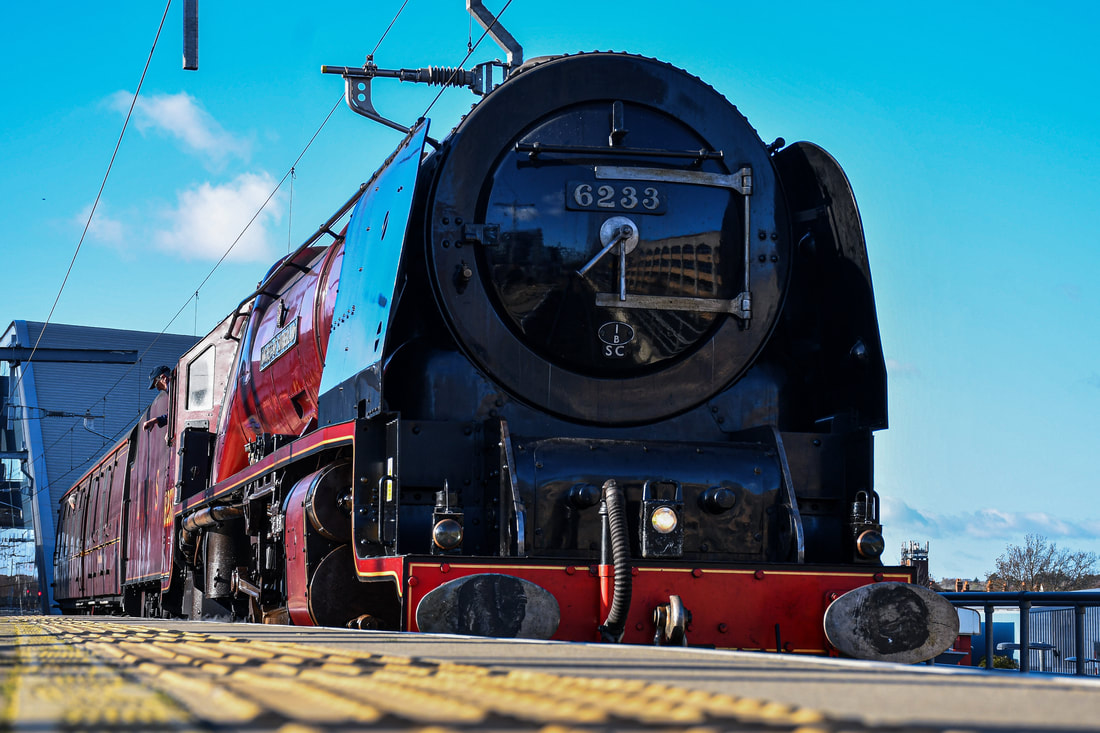Swindon to Reading
N.B. Swindon is 77.25 miles from Paddington
N.B. Swindon is 77.25 miles from Paddington
14th September 2021
A significant Anniversary
The Worlds Fastest Train run
Michael L. Roach delves into his archives.
A significant Anniversary
The Worlds Fastest Train run
Michael L. Roach delves into his archives.
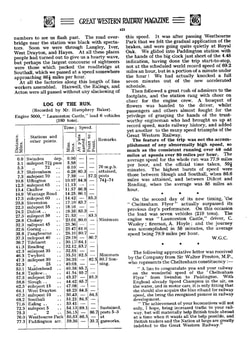
Swindon Works
Swindon Station
Swindon East Loop. 77.25 miles from Paddington.
Highworth Junction 76.5 miles from Paddington.
A query was made concerning operation of scrap trains on the stub of the Highworth branch.
We are not sure how this branch is operated these days. Andrew Crawley advises us that
the disused sidings beyond the scrap yard were for BMW and are where the Longbridge train used to load up. The train could go right in, run round and then pull the train through a wagon at a time past EMR for loading but I'm not sure of track condition at the far end so don't know if it is used for that anymore as I've never seen it going in, but I wouldn't be surprised if it probably propels it in and then just draws forward a wagon at a time, staying with the train all day.
We are not sure how this branch is operated these days. Andrew Crawley advises us that
the disused sidings beyond the scrap yard were for BMW and are where the Longbridge train used to load up. The train could go right in, run round and then pull the train through a wagon at a time past EMR for loading but I'm not sure of track condition at the far end so don't know if it is used for that anymore as I've never seen it going in, but I wouldn't be surprised if it probably propels it in and then just draws forward a wagon at a time, staying with the train all day.
A little more on the Highworth Branch
Many more details on the line and its stations can be obtained from this website click here. https://www.google.com/search?sxsrf=ALeKk022fT7CjABh9H2w9D1EyH129baVPA%3A1594801103148&ei=z7sOX4_TCNWU8gKz1KP4CQ&q=Highworth+branch+line&oq=Highworth+branch+line&gs_lcp=CgZwc3ktYWIQAzIECCMQJzIECCMQJzoECAAQRzoGCAAQFhAeUNbTAVj14AFg3-4BaABwAXgAgAFdiAG-BJIBATiYAQCgAQGqAQdnd3Mtd2l6&sclient=psy-ab&ved=0ahUKEwjP9vWJ6c7qAhVVilwKHTPqCJ8Q4dUDCAw&uact=5
On the 8th May 2017 our member Roger Salter carried out a walking exploration of the remains of the line - a small selection of his photographs appear below. His major prize was to capture the remains of Hannington Station in photos 3,4,5, & 6. On his walk after passing Hannington and proceeding towards Highworth he crossed a by-road at Cricklade Crossing see large picture below. Also noted were 'bridge rail' fencing posts and another major find was of a mile post sadly disappearing in the undergrowth.
Another point Roger Salter told us of his family connections with Hannington.
I visited the branch because of great family connections ,the Hannington one, as an great uncle farmed there & was director of the railway & a friend of Daniel Gooch, the Malmesbury one ,my other g/father lived at Lea & drove cattle across those fields to market etc before moving to Swindon as the railway's boomed in the 1880s. We have a celebrity in our midst!
Another point Roger Salter told us of his family connections with Hannington.
I visited the branch because of great family connections ,the Hannington one, as an great uncle farmed there & was director of the railway & a friend of Daniel Gooch, the Malmesbury one ,my other g/father lived at Lea & drove cattle across those fields to market etc before moving to Swindon as the railway's boomed in the 1880s. We have a celebrity in our midst!
Many thanks to Roger Salter for his selection.
________________________________________________________
Stratton Park Halt 75 miles from Paddington. Closed 7th December 1964.
Stratton Park Halt served the community off Stratton St Margaret, now part of the Borough of Swindon. The station was on the main GWR line from London to Bristol and opened around 1840. The Beeching cuts brought its closure in 1964, by which time it was only served by five trains per day. Courtesy Wilipedia.
Marston Bridge
South Marston Pedestrian Crossing. Closed 29th March 2018 on the opening of the new footbridge.
South Marston Footbridge
See - https://theswindonian.co.uk/news/network-rail-deliver-new-footbridge-near-south-marston/
also - https://smpc.files.wordpress.com/2018/01/final-draft-january-2018.pdf
See - https://theswindonian.co.uk/news/network-rail-deliver-new-footbridge-near-south-marston/
also - https://smpc.files.wordpress.com/2018/01/final-draft-january-2018.pdf
I did see if I could take photos at Swindon station but the two members of staff were extremely good even though Train-spotting as they said was not an exercise (unless I walked up an down the platform!). They suggested that I went at the Town side of platform 4 but the fence was too high! So, I tried Marston Footbridge and I was surprised when nobody was on the footbridge, so i made my way to the top of the footbridge and i had it ALL TO MYSELF until I left about two hours later!
Kind regards,
Ken
Kind regards,
Ken
Shrivenham 71.5 miles from Paddington. Closed Passengers 7th December 1964
Closed Goods 4th October 1965.
Closed Goods 4th October 1965.
History - courtesy Wikpedia. The station was about 3⁄4 mile (1.2 km) south of the village, on the west side of the B4000 Station Road, south of the Wilts and Berks Canal.
The main station building was built in 1840. It was very small, faced with flint, had Tudor style Twindows and a roof that projected in the form of a canopy.
On 10 May 1848 six passengers were killed and 13 injured at Shrivenham when two porters pushed a horse-box and cattle van onto the main line to free a wagon turntable. The Exeter express struck them; the locomotive was undamaged but the side of the leading coach was torn out killing six passengers and injuring 13 more.
On 15 January 1936 an express from Penzance collided with some coal wagons just outside the station that had become detached from an earlier train. Two people were killed and 10 injured.
On 7 December 1964 BR withdrew passenger services from Shrivenham and all other intermediate stations between Didcot and Swindon. The station buildings were demolished in 1965 but remnants of the platforms survive but are difficult to spot. There is plain double track through the station site. Both the goods yard and the coal yard are occupied by industrial buildings.
The main station building was built in 1840. It was very small, faced with flint, had Tudor style Twindows and a roof that projected in the form of a canopy.
On 10 May 1848 six passengers were killed and 13 injured at Shrivenham when two porters pushed a horse-box and cattle van onto the main line to free a wagon turntable. The Exeter express struck them; the locomotive was undamaged but the side of the leading coach was torn out killing six passengers and injuring 13 more.
On 15 January 1936 an express from Penzance collided with some coal wagons just outside the station that had become detached from an earlier train. Two people were killed and 10 injured.
On 7 December 1964 BR withdrew passenger services from Shrivenham and all other intermediate stations between Didcot and Swindon. The station buildings were demolished in 1965 but remnants of the platforms survive but are difficult to spot. There is plain double track through the station site. Both the goods yard and the coal yard are occupied by industrial buildings.
Ashbury Crossing 1 mile east of Shrivenham
Compton Beauchamp - 3.5 miles SE of Shrivenham.
THE MYSTERY of the MISSING PASSENGER Michael L. Roach
It sounds like the title of an Agatha Christie novel but its actually a true story based on a newspaper report from the same era that many of Christie's detective novels were set in; i.e. the 1930s. The actual title of the newspaper report was “Mystery of Missing Passenger on the G.W.R.” and it appeared in the Western Mail of Friday 23 December 1938. I came across the report by accident while looking for something else in December 2018 some 80 years after it first appeared. It was doubly interesting because the missing man was also a railwayman. The report was very brief because the newspaper was hitting the streets just 12 hours after the man disappeared, and went as follows:
The 7.45pm train from Paddington to Cardiff on Thursday night was stopped at Didcot when a signalman saw a carriage door open. Upon examination of the carriage a bag belonging to Mr. WTG was found. A search of the train was made but Mr. G could not be found, so the line was being searched as well. Later reports said that the train was the 7.55pm from Paddington to South Wales and that it was stopped at Highworth Junction, Swindon and not as reported earlier.
Walter Thomas Griffiths was born on 25 December 1883 at Griffithstown, Pontypool between the suburbs of Pontymoile to the north and Sebastopol to the south. The area was named after Henry Griffiths the first station master of Pontypool and New Inn station. Beginning work at the age of 13 as a baker's boy, Walter would later work at the steelworks at Panteg before joining the Great Western Railway at Pontypool Shed on 30 April 1901 as a cleaner earning 2 shillings and 4 pence a day [11.7p in decimal]. He progressed through 3rd class, 2nd class to 1st class fireman via postings at Dock Street (Newport), Ebbw Junction, Dowlais, Reading, Dock Street again and Ebbw Junction again. On 19 October 1928 WTG was granted 12 months leave without pay while he served as Mayor of Newport, and he was allowed to purchase first class privilege tickets during this period. A year later he was allowed to work in the Dock Street link so that he could continue his work as a Councillor for the County Borough of Newport.
WTG must have had a great sense of public duty as he was also rising through the ranks in the National Union of Railwaymen, and on 24 December 1936 he was granted 12 months leave of absence without pay for 1937 in order to carry out his duties as President of the NUR. Two years later he was granted an extension of 12 months covering 1939, that was on 1 December 1938. The final entry in the GWR records reads “22/12/38 Deceased – Accident off duty” So how did Walter Thomas Griffiths come to fall from the Paddington to Cardiff express two days before Christmas 1938.
Walter Griffiths body was found beside the track between Knighton Crossing and Uffington in Wiltshire at 8.40am the day after he had fallen from the train, and Uffington was where the inquest opened on Saturday 24 December 1938. The inquest was adjourned for the Coroner and the jury to inspect the coach, the door and its door fastenings, and for inquiries to be made of who had actually stopped the train. A friend confirmed that there was no reason for Mr Griffiths to take his own life. At the resumed inquest the following Friday a travelling companion called Maurice Brunnock gave evidence that Mr Griffiths was sober, in good spirits and looking forward to his birthday two days later on Christmas Day when he would be 55years old. Both Mr Griffiths and Mr Brunnock went to sleep full length on the bench seats of the compartment. When Mr Brunnock awoke it was because he was cold. The outer door was open and his travelling companion was gone; the guard was fetched and it was he who stopped the train.
The Coroner reported that he had travelled in a similar coach the day before in the dark and he found that the outer door reflected the door of the compartment. It was possible for a man just waking from sleep to open the wrong door, and they knew from their own experience that passengers did attempt to do so. The Jury suggested that the railway company should consider abolishing inside door fastenings. We know from subsequent events that passengers continued to fall from railway carriage doors until the introduction of central locking more than 50 years later. The Jury returned a verdict of “Accidental Death.” This was a sad end for a man who had risen from humble beginnings to be a major player in the public life of Newport and of the trade union movement.
I used to enjoy travelling in the same type of railway carriage that was involved in this tragedy, because they had a door to every compartment on both sides of the train. If you were travelling alone, or with other enthusiasts, you could have the windows down on both sides of the train and look out almost continuously as the train rounded the curves, by dodging from side to side, and even sit down occasionally when there was nothing to see. This style of coach was very common up to about 1960 but then disappeared rapidly as they were replaced by BR Mark 1 coaches.
MLR/ 12 November 2019
This article was first published in the Welsh Railways Research Circle's Newsletter No. 161 for Winter 2019 – website wrrc.org.uk
________________________________________________________________________________________________________
It sounds like the title of an Agatha Christie novel but its actually a true story based on a newspaper report from the same era that many of Christie's detective novels were set in; i.e. the 1930s. The actual title of the newspaper report was “Mystery of Missing Passenger on the G.W.R.” and it appeared in the Western Mail of Friday 23 December 1938. I came across the report by accident while looking for something else in December 2018 some 80 years after it first appeared. It was doubly interesting because the missing man was also a railwayman. The report was very brief because the newspaper was hitting the streets just 12 hours after the man disappeared, and went as follows:
The 7.45pm train from Paddington to Cardiff on Thursday night was stopped at Didcot when a signalman saw a carriage door open. Upon examination of the carriage a bag belonging to Mr. WTG was found. A search of the train was made but Mr. G could not be found, so the line was being searched as well. Later reports said that the train was the 7.55pm from Paddington to South Wales and that it was stopped at Highworth Junction, Swindon and not as reported earlier.
Walter Thomas Griffiths was born on 25 December 1883 at Griffithstown, Pontypool between the suburbs of Pontymoile to the north and Sebastopol to the south. The area was named after Henry Griffiths the first station master of Pontypool and New Inn station. Beginning work at the age of 13 as a baker's boy, Walter would later work at the steelworks at Panteg before joining the Great Western Railway at Pontypool Shed on 30 April 1901 as a cleaner earning 2 shillings and 4 pence a day [11.7p in decimal]. He progressed through 3rd class, 2nd class to 1st class fireman via postings at Dock Street (Newport), Ebbw Junction, Dowlais, Reading, Dock Street again and Ebbw Junction again. On 19 October 1928 WTG was granted 12 months leave without pay while he served as Mayor of Newport, and he was allowed to purchase first class privilege tickets during this period. A year later he was allowed to work in the Dock Street link so that he could continue his work as a Councillor for the County Borough of Newport.
WTG must have had a great sense of public duty as he was also rising through the ranks in the National Union of Railwaymen, and on 24 December 1936 he was granted 12 months leave of absence without pay for 1937 in order to carry out his duties as President of the NUR. Two years later he was granted an extension of 12 months covering 1939, that was on 1 December 1938. The final entry in the GWR records reads “22/12/38 Deceased – Accident off duty” So how did Walter Thomas Griffiths come to fall from the Paddington to Cardiff express two days before Christmas 1938.
Walter Griffiths body was found beside the track between Knighton Crossing and Uffington in Wiltshire at 8.40am the day after he had fallen from the train, and Uffington was where the inquest opened on Saturday 24 December 1938. The inquest was adjourned for the Coroner and the jury to inspect the coach, the door and its door fastenings, and for inquiries to be made of who had actually stopped the train. A friend confirmed that there was no reason for Mr Griffiths to take his own life. At the resumed inquest the following Friday a travelling companion called Maurice Brunnock gave evidence that Mr Griffiths was sober, in good spirits and looking forward to his birthday two days later on Christmas Day when he would be 55years old. Both Mr Griffiths and Mr Brunnock went to sleep full length on the bench seats of the compartment. When Mr Brunnock awoke it was because he was cold. The outer door was open and his travelling companion was gone; the guard was fetched and it was he who stopped the train.
The Coroner reported that he had travelled in a similar coach the day before in the dark and he found that the outer door reflected the door of the compartment. It was possible for a man just waking from sleep to open the wrong door, and they knew from their own experience that passengers did attempt to do so. The Jury suggested that the railway company should consider abolishing inside door fastenings. We know from subsequent events that passengers continued to fall from railway carriage doors until the introduction of central locking more than 50 years later. The Jury returned a verdict of “Accidental Death.” This was a sad end for a man who had risen from humble beginnings to be a major player in the public life of Newport and of the trade union movement.
I used to enjoy travelling in the same type of railway carriage that was involved in this tragedy, because they had a door to every compartment on both sides of the train. If you were travelling alone, or with other enthusiasts, you could have the windows down on both sides of the train and look out almost continuously as the train rounded the curves, by dodging from side to side, and even sit down occasionally when there was nothing to see. This style of coach was very common up to about 1960 but then disappeared rapidly as they were replaced by BR Mark 1 coaches.
MLR/ 12 November 2019
This article was first published in the Welsh Railways Research Circle's Newsletter No. 161 for Winter 2019 – website wrrc.org.uk
________________________________________________________________________________________________________
Uffington (for the Faringdon branch)
66.5 miles from Paddington. Closed to passengers on the 7th December 1964, closed to goods on the 1st July 1963.
66.5 miles from Paddington. Closed to passengers on the 7th December 1964, closed to goods on the 1st July 1963.
Uffington railway station is a former station on the Great Western Main line. The station was located north-east of the village of Uffington. In 1864 Uffington became a junction as the Faringdon branch. In 1886 the GWR took over the Faringdon Railway. Quote Wikipedia . Faringdon branch see https://en.wikipedia.org/wiki/Faringdon_railway_station
Using Google Earth one can see that nothing remains of the station, However just to the east of the road bridge which crosses the site a trailing crossover exists between the otherwise plan track up and down main lines.
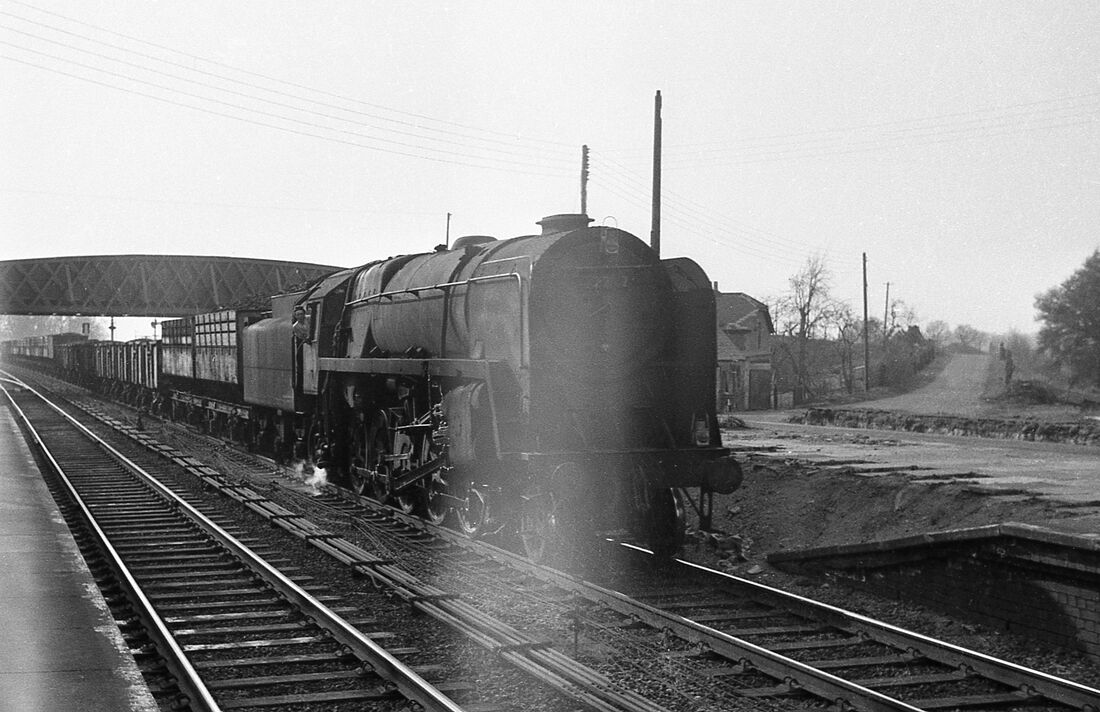
A 9F pounds its way eastwards through Uffington with a lengthy freight train. Copyright Mike Roach. The number looks like 922023.
The Faringdon branch trains left from the far side of this platform, - the branch line headed off smartly to the right heading past the trees on the right of this picture. Prior to constitution of the over bridge there was a level crossing at this location.
Signalling at Uffington. - it will be noted that semaphore signalling was in use at the time of Mike Roach'es photographs - the signalbox which had opened in 1897 continued in use until 3rd March 1968 when operions were taken over by Swindon Panel.
Gradients at Uffington. From Swindon virtually to Reading the line is on a falling gradient just west of the station site it is 1 in 754 easing to in in 880 at the station site and then continuing at 1 in 754 towards Wantage Road.
Uffington White Horse
About two and a half miles south of Uffington station lies Uffington White Horse = if you keep your eyes peeled you may glimpse this from the train.
Courtesy Wikipedia:- The Uffington White Horse is a prehistoric hill figure, 110 m (360 ft)[1] long, formed from deep trenches filled with crushed white chalk. The figure is situated on the upper slopes of White Horse Hill in the English civil parish of Uffington (in modern Oxfordshire, but traditionally in Berkshire), some 10 mi (16 km) east of Swindon, 8 km (5 mi) south of the town of Faringdon and a similar distance west of the town of Wantage; or 2.5 km (1.6 mi) south of Uffington. The hill forms a part of the scarp of the Berkshire Downs and overlooks the Vale of White Horse to the north. The best views of the figure are obtained from the air,
About two and a half miles south of Uffington station lies Uffington White Horse = if you keep your eyes peeled you may glimpse this from the train.
Courtesy Wikipedia:- The Uffington White Horse is a prehistoric hill figure, 110 m (360 ft)[1] long, formed from deep trenches filled with crushed white chalk. The figure is situated on the upper slopes of White Horse Hill in the English civil parish of Uffington (in modern Oxfordshire, but traditionally in Berkshire), some 10 mi (16 km) east of Swindon, 8 km (5 mi) south of the town of Faringdon and a similar distance west of the town of Wantage; or 2.5 km (1.6 mi) south of Uffington. The hill forms a part of the scarp of the Berkshire Downs and overlooks the Vale of White Horse to the north. The best views of the figure are obtained from the air,
The branch to Faringdon.
The three and a half mile branch from Uffington was opened on 1st June 1864 between Faringdon and the GWR at Uffington , with construction funded by a consortium of local business men called the Faringdon Railway Company which was purchased outright by the GWR in 1886. The branch was constructed as a broad gauge line and was converted to standard gauge in 1878. The branch left the main line on a five chain radius curve and then headed generally NNW to Faingdon, the steepest gardient on the lightly engineered line was 1 in 88. Passenger traffic peaked in 1913, but later declined to such an extent that the passenger service was withdrawn on 31st December 1951. Freight traffic continued to use the line until 1964. there were no intermediate stations on the branch.
Faringdon Town Council proposed in 2005 to reopen the line this was not taken any further.
The station building is still extant, having been used for various commercial purposes; it has been a children's nursery since 2002. Info courtesy Wikipedia.
It is understood that the Faringdon branch was used to stable the Royal Train on occasions. Once around the bend away from the main station one can appreciate that the topography would have been a very pleasant place to spend a night away from home. Lucky them!!
There were no intermediate stations on the brnnch.
Details and pictures of Farringdon station can be found using this link https://en.wikipedia.org/wiki/Faringdon_railway_station.
The Farringdon branch line link is https://www.google.com/search?q=faringdon+branch+line&oq=Faringdon&aqs=chrome.2.35i39j69i57j69i59j46i67i395i433i457j46i67i175i199i395j46i10i67i175i199i395j46i20i175i199i263i395j0i67i395j46i20i175i199i263i395j46i175i199i395i422i424.6993j1j15&sourceid=chrome&ie=UTF-8
Faringdon Town Council proposed in 2005 to reopen the line this was not taken any further.
The station building is still extant, having been used for various commercial purposes; it has been a children's nursery since 2002. Info courtesy Wikipedia.
It is understood that the Faringdon branch was used to stable the Royal Train on occasions. Once around the bend away from the main station one can appreciate that the topography would have been a very pleasant place to spend a night away from home. Lucky them!!
There were no intermediate stations on the brnnch.
Details and pictures of Farringdon station can be found using this link https://en.wikipedia.org/wiki/Faringdon_railway_station.
The Farringdon branch line link is https://www.google.com/search?q=faringdon+branch+line&oq=Faringdon&aqs=chrome.2.35i39j69i57j69i59j46i67i395i433i457j46i67i175i199i395j46i10i67i175i199i395j46i20i175i199i263i395j0i67i395j46i20i175i199i263i395j46i175i199i395i422i424.6993j1j15&sourceid=chrome&ie=UTF-8
The following information is supplied by Guy Vincent and is, as usual, most interesting,
Following on from Mike Roache's excellent feature on Uffington station the following may be of interest. Website http://www.railwaycodes.org contains a wealth of useful information on signalling schemes, signal boxes and much more. A valuable source of data for answering such queries as and when they arise. Uffington 'box opened in 1897 and closed on 3rd March 1968 when the new panel box at Swindon assumed control of the area. Since early 2016 Thames Valley Signalling Centre at Didcot has been in charge of the now electrified GWML and the operating panel formerly used at Swindon has been preserved in working condition in a new purpose-built building at the Great Western Society site, Didcot.
Also of interest will be the triology of 'Signalman' railway books by well known former Western Region Signalman turned author Adrian Vaughan. Signalman's Morning, Signalman's Twilight and Signalman's Nightmare are well worth reading and relatively easy to find for sale online. The middle volume describes in detail the author's experiences working on this section of the GW main line in the early-mid 1960s, a very dark period of rationalisation and closure following publication of the Beeching Report and modernisation of the British Railway network.
Guy Vincent
Following on from Mike Roache's excellent feature on Uffington station the following may be of interest. Website http://www.railwaycodes.org contains a wealth of useful information on signalling schemes, signal boxes and much more. A valuable source of data for answering such queries as and when they arise. Uffington 'box opened in 1897 and closed on 3rd March 1968 when the new panel box at Swindon assumed control of the area. Since early 2016 Thames Valley Signalling Centre at Didcot has been in charge of the now electrified GWML and the operating panel formerly used at Swindon has been preserved in working condition in a new purpose-built building at the Great Western Society site, Didcot.
Also of interest will be the triology of 'Signalman' railway books by well known former Western Region Signalman turned author Adrian Vaughan. Signalman's Morning, Signalman's Twilight and Signalman's Nightmare are well worth reading and relatively easy to find for sale online. The middle volume describes in detail the author's experiences working on this section of the GW main line in the early-mid 1960s, a very dark period of rationalisation and closure following publication of the Beeching Report and modernisation of the British Railway network.
Guy Vincent
Many thanks Guy,
Challow 63.75 miles from Paddington.
Challow railway station is a former railway station about 2 miles (3 km) south of Stanhope in the Vale on the A417 betweenWantage and Faringdo. It is named after the villages of West and East Challow, which are 1.5 miles and 2.5 miles southeast of the former station. Courtesy of Wikipedia.
For further details and pictures please click here https://en.wikipedia.org/wiki/Challow_railway_station
For further details and pictures please click here https://en.wikipedia.org/wiki/Challow_railway_station
Wantage Road 60.5 miles from Paddington Closed 7th December 1964
Wantage railway station is a closed stone and brick built station located on Mill Street, Wantage in Oxfordshire. Associated with the Wantage Tramway. The station closed fully in 1945 when Wantage Tramway ceased operations. For further details please click here https://en.wikipedia.org/wiki/Wantage_railway_station
There is a proposal for a new 'Grove' station which could open as soon as 2028.
Wantage Tramway
Was as created in 1875 to carry passengers and goods between the Wantage and Wantage Road Station on the Great Western Railway (nearby to The Volunteer Public House ).
Except for a short break during the Second World War it was in operation for seventy years, and was the most successful of the few rural lines that operated in England.
At first the Tramway’s two passenger cars were drawn by horses, but the Company soon purchased a Grantham Steam Car and made history as the first regular passenger service using mechanical traction.
Thereafter the Tramway’s timetable was arranged so that a car was available to meet every passenger train which stopped at Wantage Road Station. Courtesy Wilkipedia.
For many more details please click here www.wantage.com ›
Was as created in 1875 to carry passengers and goods between the Wantage and Wantage Road Station on the Great Western Railway (nearby to The Volunteer Public House ).
Except for a short break during the Second World War it was in operation for seventy years, and was the most successful of the few rural lines that operated in England.
At first the Tramway’s two passenger cars were drawn by horses, but the Company soon purchased a Grantham Steam Car and made history as the first regular passenger service using mechanical traction.
Thereafter the Tramway’s timetable was arranged so that a car was available to meet every passenger train which stopped at Wantage Road Station. Courtesy Wilkipedia.
For many more details please click here www.wantage.com ›
Steventon 56.5 miles from Paddington. Closed 3rd November 1958
Steventon railway station was built when the GWR extended their main line from Reading to the village of Steventon, opening the line on 1 June 1840. Two months later, on 20 July, it was extended to Faringdon Road and in December to Swindon.
There is a full history and pictures at https://www.google.com/search?sxsrf=ALeKk00rY1FAIHISDRW3zxT-57VRcI4NVA:1590519972609&source=univ&tbm=isch&q=steventon+railway+station&sa=X&ved=2ahUKEwjJtObPnNLpAhViWhUIHXY2Ay8QsAR6BAgIEAE&biw=787&bih=650
There is a full history and pictures at https://www.google.com/search?sxsrf=ALeKk00rY1FAIHISDRW3zxT-57VRcI4NVA:1590519972609&source=univ&tbm=isch&q=steventon+railway+station&sa=X&ved=2ahUKEwjJtObPnNLpAhViWhUIHXY2Ay8QsAR6BAgIEAE&biw=787&bih=650
Didcot 53.25 miles from Paddington.
A reminder that having got to this location we will later include a section on the GWS depot at Didcot and the line onwards to Oxford.
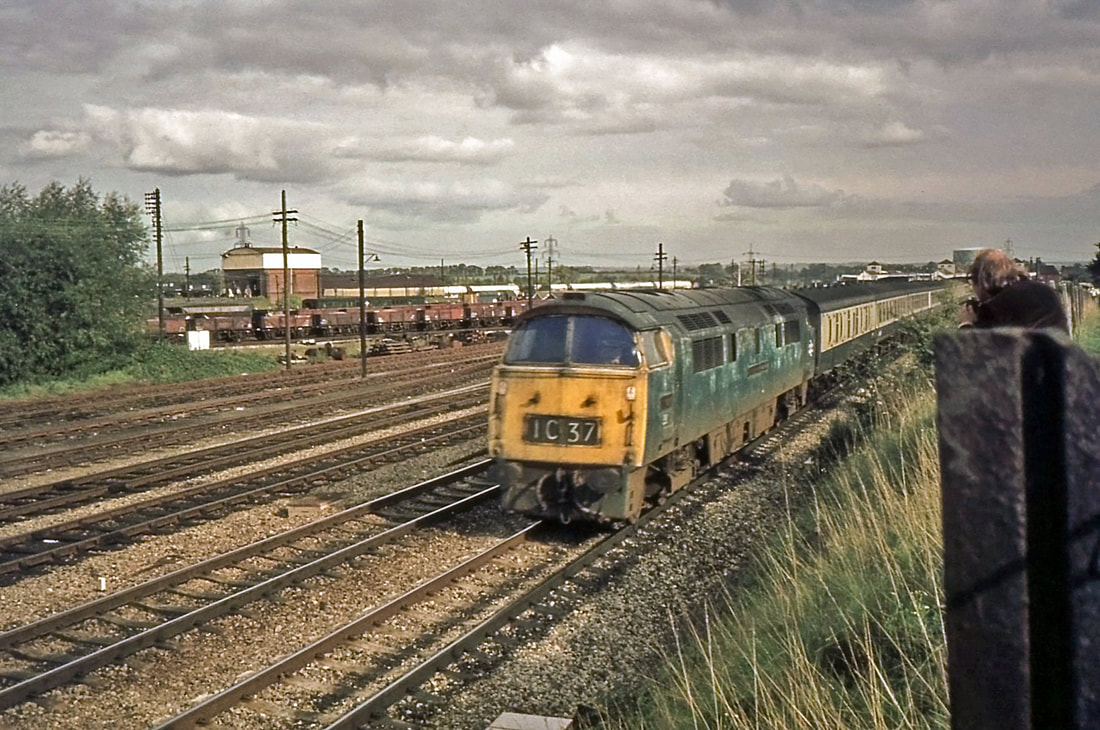
Very interesting to see Roger Geach's picture of 60033 passing Didcot in '92. I'm afraid I don't have a 'today' picture, but I found this one of Western Thunderer quite close to Roger's location and taken on September 21, 1974. I suppose, with a bit of research, 1C37 could be identified but I thought you might like to see all those short wheelbase wagons of long ago!
Best wishes to all
Trevor T [D1011 passing Didcot with down 1C37 21.09.74. Copyright T Tremethick]
Moreton - not a station but just east of Didcot.
A little further east but still Moreton.
Many thanks Roger.
Thanks to Ron.
Cholsey and Moulsford 48.5 miles from Paddington.
Cholsey railway station (previously Cholsey & Moulsford) serves the village of Cholsey in south Oxfordshie. It is 48 miles 37 chains down the line from London Paddington and is situated between Goring and Streatley to the east and Didcot Parkway to the west. to the west.
Cholsey is also the junction for the heritage railway services on the Cholsey and Wallingford Railway. The station has five platforms, but two of them are out of use so fast trains can pass through, so you need permission to enter these platforms. Platform 5 is only used in summer for steam services. Information courtesy of Wikipedia.
Cholsey is also the junction for the heritage railway services on the Cholsey and Wallingford Railway. The station has five platforms, but two of them are out of use so fast trains can pass through, so you need permission to enter these platforms. Platform 5 is only used in summer for steam services. Information courtesy of Wikipedia.
More pictures are to be found on https://www.google.com/search?q=Cholsey+and+moulsford+station&tbm=isch&ved
The Cholsey and Wallingford Railway is a 2 1⁄2 miles long and is a standard gauge heritage railway in Oxfordshire. It operates along most of the length of the former Wallingford branch of the GWR, from Cholsey station to a station on the outskirts of the nearby town of Wallingford.
For more information please click here https://en.wikipedia.org/wiki/Cholsey_and_Wallingford_Railway
For more information please click here https://en.wikipedia.org/wiki/Cholsey_and_Wallingford_Railway
We also have pictures of the last B.R train to Wallingford courtesy of David Ward - taken with black and white film
Closed: passenger 1959; freight 1965/1981
Closed: passenger 1959; freight 1965/1981
Goring and Streatley 44.75 miles from Paddington.
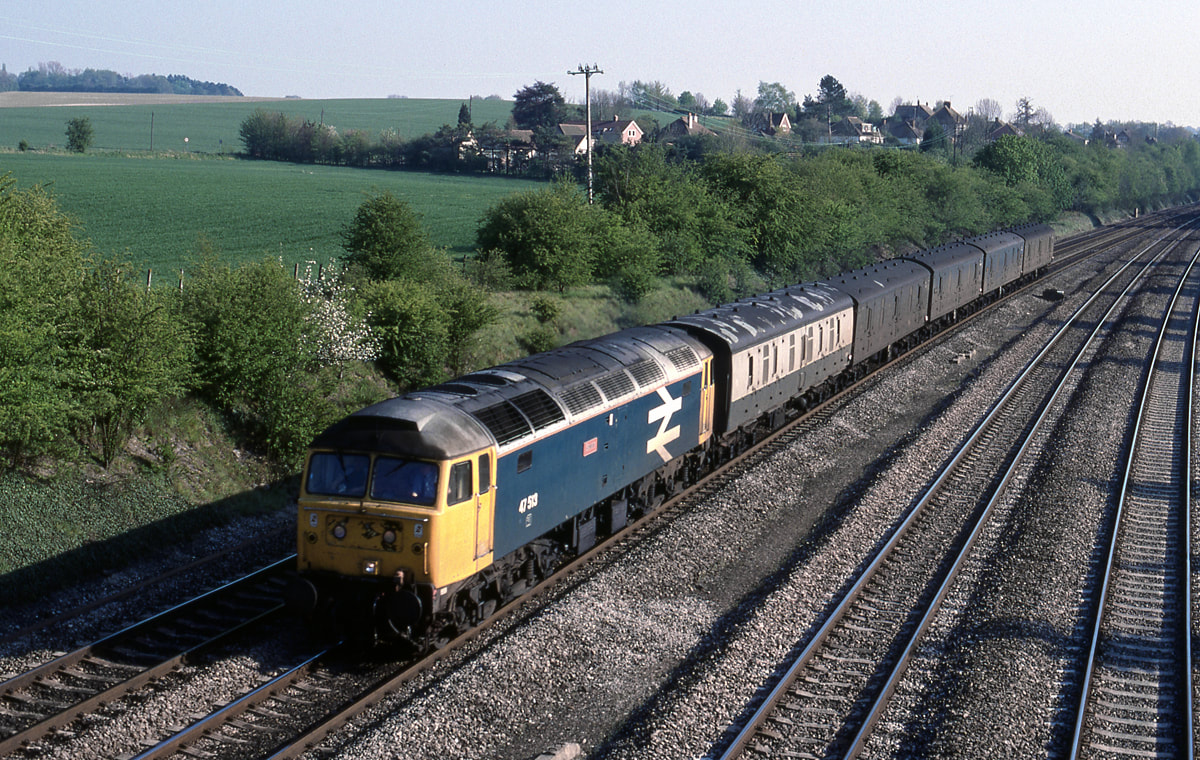
Spring Farm is a little way north of Goring & Streatley station, in the Thames Valley.
47513 passes Spring Farm 28th April 1990 with 1B95 1602 Paddington Swansea letter mail.
(The Reading to Didcot section used to be extremely busy with loco hauled trains, especially on weekdays.) Copyright Ron Kosys.
Pangbourne 41.5 miles from Paddington.
Pangbourne railway station serves the village of Pangbourne in Berkshire, and across the River Thames the village of Whitchurch on Thames, in Oxfordshire. It is 41 miles 43 chains (66.8 km) down the line from London Paddington. Courtesy Wikipedia.
For further details and pictures please click here https://en.wikipedia.org/wiki/Pangbourne_railway_station
For further details and pictures please click here https://en.wikipedia.org/wiki/Pangbourne_railway_station
Lower Basildon
Tilehurst 38.75 miles from Paddington.
Tilehurst railway station is in the suburb and former village of Tilehurst , west of Reading. It is 38 miles 52 chains down the line from London Paddington. For further details courtesy of Wikipedia please click here https://en.wikipedia.org/wiki/Tilehurst_railway_station
Reading 36 miles from Paddington
Steam at Reading 22nd November 2021
The Duchess of Sutherland coming to a stand on platform 15 at Reading this afternoon (22/11/2021). Running 5Z34 Tyseley Steam Trust to Southall Wcr in preparation for The Gloucester Christmas Market and Cardiff Railtour courtesy of The Railway Touring company on 23rd November 2021.
